
- All Posts
- All News
- Awards
- Blog Articles
- Case Studies
- Cold Storage
- Cold Storage Construction
- Energy Storage
- Food Processing
- News Articles
- Press Releases
- Solar + Storage
- Supermarket
- Utility & Grid
- Webinars & Podcasts
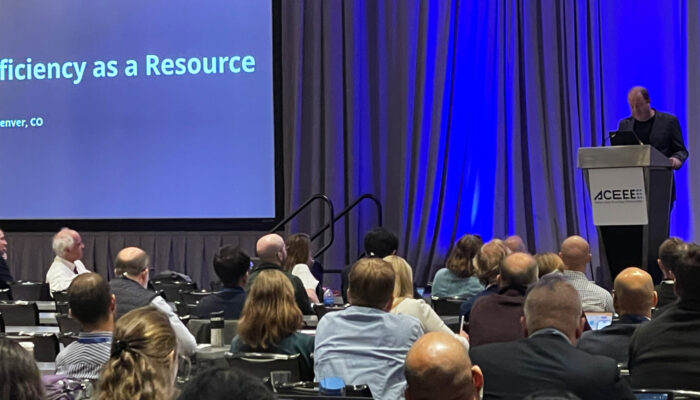 Exploring the Future of Grid Resiliency and Efficiency at ACEEE’s 2025 EER Conference
Exploring the Future of Grid Resiliency and Efficiency at ACEEE’s 2025 EER Conference
Jared Polis, Governor of Colorado Discussions about the future of the U.S. power grid took center stage last week at the 13th biennial Energy Efficiency as a Resource (EER) Conference in Denver, hosted by the American Council for an Energy-Efficient Economy (ACEEE). During the opening session, Colorado Governor Jared Polis highlighted the state’s leadership in clean energy innovation and collaboration with utilities to strengthen grid resilience. His remarks reflected one of the conference’s major themes: as federal programs scale back, states and local utilities are stepping up with new incentives to drive efficiency, flexibility, and reliability across the grid. A key topic throughout the event was the expansion of demand response programs – now active in all 50 states – and the growing opportunities they create for businesses and energy users. Texas continues to stand out for offering the greatest payback on energy sold back to utilities, signaling how state-level initiatives can reward participation in grid balancing. Speakers also pointed to the increasing role of Thermal Energy Storage (TES) in the cold chain, as utilities nationwide recognize its ability to reduce peak demand and support decarbonization. Among the featured sessions was “Advancing Energy Efficiency and Grid Resilience with AI and Thermal Energy Storage,” where John Savage, VP of Sales at Viking Cold Solutions, joined fellow experts to discuss how AI-driven controls and TES technologies are reshaping demand-side management. Panelists explored how these tools enable cold storage and food distribution facilities to shift loads, optimize operations, and strengthen grid reliability – all while improving efficiency and cost savings. By the end of the session, one message was clear: demand flexibility will be essential to building a more resilient energy future. AI optimization, distributed storage, and innovative load management are rapidly moving from pilot projects to critical infrastructure. For Viking Cold Solutions and other leaders advancing energy efficiency, the conversation in Denver underscored a shared mission – to make the grid smarter, cleaner, and better prepared for tomorrow’s challenges.
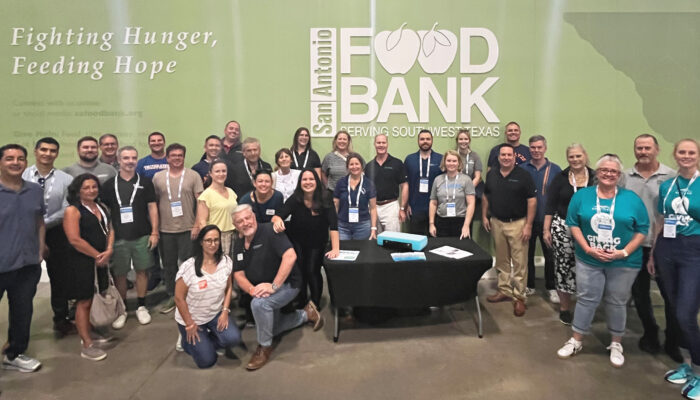 Feeding Hope: The GCCA and Viking Cold Solutions Partner to Help the San Antonio Food Bank Feed More Families
Feeding Hope: The GCCA and Viking Cold Solutions Partner to Help the San Antonio Food Bank Feed More Families
Viking Cold Solutions is in San Antonio this week at the 2025 Global Cold Chain Alliance (GCCA) Convention, where the focus is on energy efficiency, artificial intelligence, cybersecurity, and demand management. This annual event brings together leaders from across the industry to exchange ideas, share innovations, and explore ways to make temperature-controlled logistics more efficient and sustainable. Being here provides an opportunity to engage with peers, learn from best practices, and further strengthen our shared commitment to advancing energy-conscious solutions across the cold chain as well as in the local community. Texas ranks second in the nation for food insecurity, with one in six residents living in food-insecure households. The San Antonio Food Bank (SAFB) works tirelessly to fight hunger across Southwest Texas through food distribution, education, programs, and advocacy. Their mission goes beyond providing meals for today – they also equip individuals and families with the tools to become self-sufficient tomorrow. Each week, SAFB serves more than 100,000 people through its extensive network of partner agencies and innovative programs. When crisis strikes, that mission becomes even more critical. Recent flooding in July in the Hill Country once again highlighted the importance of community resilience. In emergencies, food is more than just sustenance – it’s comfort, stability, and hope. The San Antonio Food Bank responds swiftly, providing emergency food, water, and essential supplies, while rallying volunteers to support families through difficult times. Their ability to step up in moments of disaster reflects the strength of their network and the compassion that drives their work. To learn more about how you can support their disaster relief efforts, visit the San Antonio Food Bank website. In partnership with SAFB, Viking Cold Solutions has installed a Thermal Energy Storage (TES) system in the food bank’s main freezer designed to lower energy costs, improve food quality, and help the Food Bank extend its impact. By reducing utility expenses, TES technology allows SAFB to redirect the electricity savings into providing even more meals for the communities it serves. Key outcomes of this project include: Resilient & Flexible Energy Management: 865,000 BTUs of Thermal Energy Storage Energy Savings: 8,000 kWh per month Community Impact: 70,000 additional meals for San Antonians Covering 29 counties across Southwest Texas, the San Antonio Food Bank is a cornerstone in the fight against hunger. At Viking Cold Solutions, we remain committed to strengthening collaborations like this – helping food banks across North America reduce food insecurity and feed more families in need. The GCCA also showed its commitment this week to supporting local causes by volunteering at the San Antonio Food Bank on Monday. Almost 16,000 pounds of food was packed for distribution by GCCA volunteers resulting in 13,000 meals.
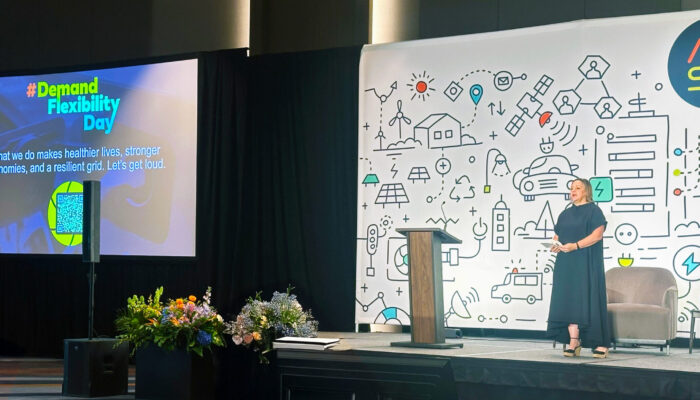 Viking Cold Solutions Joins Industry Leaders at AESP Flex Connect Panel on Grid Resilience
Viking Cold Solutions Joins Industry Leaders at AESP Flex Connect Panel on Grid Resilience
James Bell and Dr. Crystal Miller, AESP Keynote Speaker and Head of Policy & Government Relations at Tribal Clean Energy At the AESP Flex Connect Conference in Salt Lake City this week, James Bell, President and CEO of Viking Cold Solutions, joined a panel of experts to discuss “Optimizing Refrigeration and Storage for Grid Resilience.” The panel brought together leaders in energy efficiency, demand flexibility, and distributed energy resources to share strategies, lessons learned, and real-world insights that can help both the grid and energy customers. Panelists explored the opportunities and challenges of implementing demand flexibility in sectors such as cold storage and refrigeration – industries with high, continuous energy needs. Discussion topics included identifying the most impactful, immediately achievable improvements; overcoming customer and industry barriers to adoption; and understanding the role of utility pricing and policy in driving change. Each speaker shared perspectives on customer engagement, technology adoption, and what it will take to make demand flexibility more attractive to industrial markets. James’ contribution focused on how Thermal Energy Storage (TES) paired with AI optimization can significantly reduce energy use and peak demand while improving operational reliability. He outlined real-world results showing 20%–35% lower energy consumption, up to 95% reductions in peak demand, and electrical cost savings of up to 50%. He also emphasized how AI’s predictive control and anomaly detection can help facilities act as virtual power plants (VPPs), supporting grid flexibility and renewable integration. Jennifer Szaro, AESP President & CEO The conversation continued with a robust 30-minute Q&A session with a large and highly engaged audience. Most questions centered on the demand flexibility of refrigeration loads, advanced controls, and the role of thermal energy storage in supporting grid resilience. Attendees were also eager to learn how AI can further enhance the management of refrigeration demand, offering predictive insights and enabling more effective participation in grid programs. The panel ended with a forward-looking discussion on the future of AI-driven demand flexibility, the potential for applications beyond refrigeration, and the importance of collaboration between technology providers, utilities, and program designers. The consensus: intelligent, flexible solutions are needed for meeting rising energy needs while building a more resilient and sustainable grid. The informative and impactful three-day 2025 AESP Flex Connect conference closed out on the main stage in Salt Lake City with a keynote address by Dr. Crystal Miller. Dr Miller is the Head of Policy and Government Relations for the Alliance for Tribal Clean Energy, and shared important insights into ways to advance clean energy and energy access for Indian Tribes. Her speech and the Q&A that followed was another great example of how AESP brings people together to solve energy problems through collaboration and business cooperation – a fitting highlight for Demand Flexibility Day 2025!
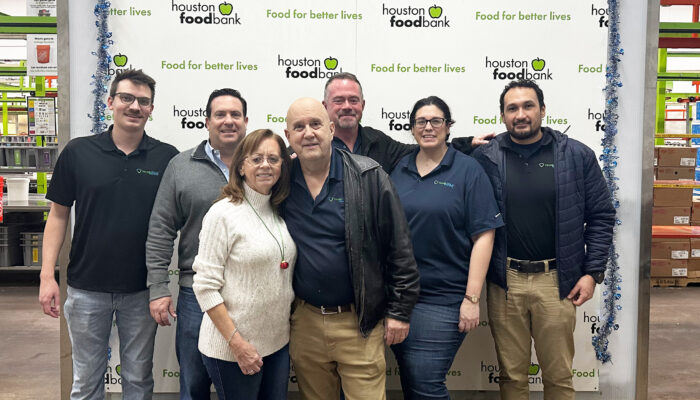 Viking Cold Solutions Strengthens Community Bonds with Holiday Volunteer Effort at Houston Food Bank
Viking Cold Solutions Strengthens Community Bonds with Holiday Volunteer Effort at Houston Food Bank
Continuing our tradition of giving back, Viking Cold Solutions volunteered at the Houston Food Bank over the holiday season. The team rolled up their sleeves to tackle a variety of tasks, from building and breaking down boxes to packing essential food items for local pantries. Pallets of goods were transferred to assembly lines, and the kitchen buzzed with activity as a holiday lunch was prepared for those in need. The Houston Food Bank is a solution to both hunger and food waste. Around 1 million people in the 18 southeast Texas counties served by Houston Food Bank are considered food insecure – lacking consistent access to enough nutritious food to fuel a healthy life. To address this challenge, the Houston Food Bank distributes food and other essentials through a network of more than 1,600 community partners. In addition, the food bank provides programs and services aimed at helping families achieve long-term stability which include nutrition education, health management, and help in securing state-funded assistance and other services. At Viking Cold Solutions, we believe in paying forward our good fortune by supporting food banks across the globe with our Thermal Energy Storage technology. This innovative solution reduces energy costs and allows food banks to allocate more resources toward serving their communities. The most recent addition to Viking Cold Solutions food bank portfolio includes Feeding Northeast Florida. We completed a project for Feeding Northeast Florida in December just in time for the holidays and the New Year season. By providing food banks with sustainable technology, Viking Cold Solutions helps organizations like the Houston Food Bank and Feeding Northeast Florida to extend their reach and increase their impact in the fight against hunger.
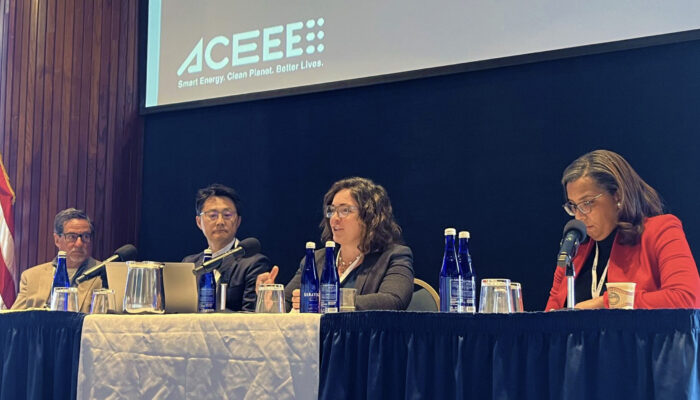 Thermal Energy Storage: Shaping the Future of Demand Management & Renewable Energy
Thermal Energy Storage: Shaping the Future of Demand Management & Renewable Energy
Renewable energy has long been synonymous with wind and solar — sources derived from nature’s ability to create energy that emit zero greenhouse gases. Today, Thermal Energy Storage (TES) is emerging as a critical component of the renewable energy landscape, standing alongside wind and solar as part of the solution for a cleaner, more resilient energy future. At this year’s Energy Efficiency Policy Forum, put on by the American Council for an Energy-Efficient Economy (ACEEE), demand response and virtual power plants (VPPs) were key topics of discussion, with Thermal Energy Storage increasingly recognized as a vital component. TES provides a reliable and cost-effective means of storing and releasing energy as cold or heat, helping balance supply and demand. By integrating with distributed energy resources like solar and wind, TES enhances the efficiency and flexibility of VPPs, storing excess renewable energy for later use, reducing grid strain, and improving energy resilience. The ACEEE is a nonprofit focused on advancing energy efficiency to foster economic growth and address climate change which is committed to reducing energy waste, supporting equitable economic opportunities, and improving public health and the environment. This year’s Policy Forum centered on shaping federal energy policies, with discussions on building efficiency, transitioning industries to low-carbon practices, and enhancing electric vehicle and freight systems. The forum aimed to influence policies that strengthen U.S. competitiveness and address climate challenges. Inspired by the discussions at the Energy Efficiency Policy Forum, Viking Cold Solutions leadership team took these learnings to the subsequent Department of Energy’s Deploy 24 Conference. The focus of the DOE conference was on accelerating the deployment of critical energy and decarbonization technologies, such as TES, across the U.S. At both events, Viking Cold engaged with policy makers, utility companies, and developers, exploring the growing opportunities TES offers for increased utilization of renewables. Viking Cold Solutions is ready to partner with our customers and ensure they achieve their sustainability goals. Photos by ACEEE and DOE.
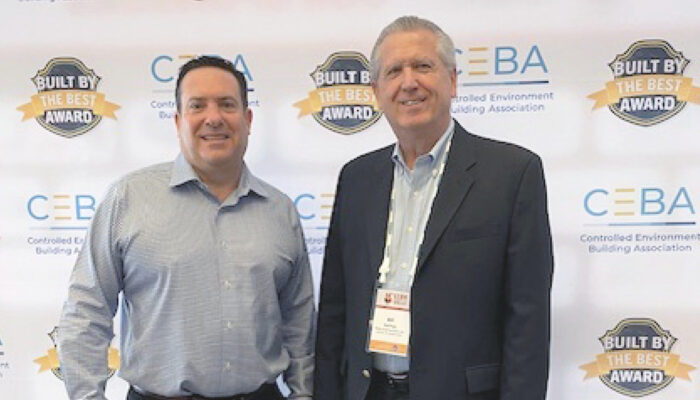 Driving Innovation and Sustainability: Highlights from CEBA
Driving Innovation and Sustainability: Highlights from CEBA
With energy costs on the rise and increasing pressure on companies to meet sustainability goals, energy efficiency has become essential for the cold chain and controlled-environment industries. The Controlled Environment Building Association (CEBA), part of the Global Cold Chain Alliance, focuses on advancing cold chain infrastructure by supporting the design, construction, and maintenance of cold storage facilities and other controlled environment buildings. Through its Conference & Expo, CEBA connects industry professionals, shares best practices, and promotes innovations that enhance safety, efficiency, and sustainability across temperature-controlled facilities. CEBA values sustainable design and improving facility resiliency, emphasizing the value of proactive planning to reduce costs, streamline workflows, and implement energy-efficient solutions like Viking Cold Solutions’ Thermal Energy Storage (TES) technology. The growing demand for energy and strain on the grid has sparked discussions at the event around alternatives such as solar power, natural gas generators, lithium batteries, and the construction of modern, efficient cold storage facilities to replace aging infrastructure. Solutions like TES help ensure consistent temperature control, operational reliability, demand reduction, and lowered energy consumption, supporting the cold chain industry's shift toward greater sustainability and resilience. With a record-breaking 500+ attendees at the 44th CEBA Conference & Expo, Viking Cold Solutions had the opportunity to network with decision makers, executives, and industry leaders. CEBA drives industry progress by fostering collaboration, encouraging innovation in facility design and construction, and supporting businesses in reducing costs and environmental impact. The conference also celebrated industry excellence with the Built by the Best Awards. Viking Cold Solutions congratulates Americold/Stellar on their win in the over $35M category for their ASRS facility in Russellville, AR, featuring 42,000 pallet positions, 136,000 square feet, and 140-foot clear heights. By supporting the development of modern, resilient facilities during events like their annual conference, CEBA strengthens the entire cold chain infrastructure to meet evolving demands.
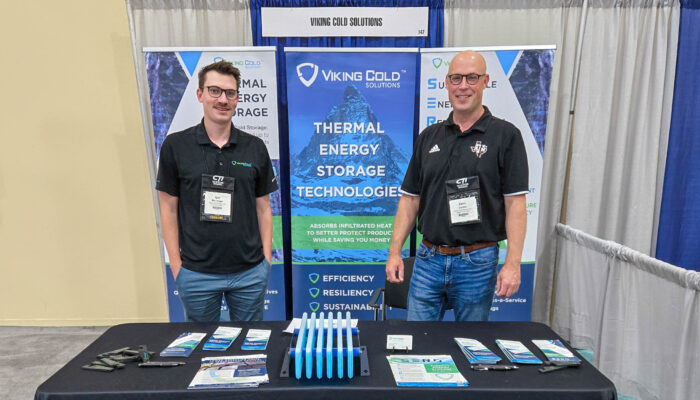 Viking Cold Showcases Sustainability Solutions at RETA
Viking Cold Showcases Sustainability Solutions at RETA
Viking Cold Solutions recently attended the Refrigerating Engineers and Technicians Association (RETA) National Conference in Grapevine, Texas, to learn more about emerging technologies, such as newer refrigerants and control systems, and their impact on industrial refrigeration. The RETA Conference provides valuable professional development and features a variety of workshops, hands-on training, and technical presentations geared toward builders, operators, and technicians within the temperature control industry. The RETA Conference sets the highest industry standards where companies can connect and collaborate with their peers to resolve specific challenges to their operations. Attending the conference helped our team gain insight into the industry’s current challenge of increasing efficiency in refrigeration. Viking Cold Solutions exhibited our Thermal Energy Storage (TES) technology at the conference and engaged with like-minded professionals about the latest products and services in industrial refrigeration. Our TES makes the world’s refrigeration systems more efficient and resilient while protecting product quality and reducing energy costs by 20%-30% or more. The Viking Cold team connected with many of our customers and engaged with new potential clients who are also focused on energy efficiency and demand management. We had insightful conversations about our TES solutions and how they can be used in various processes to benefit industrial refrigeration. Our customers value our commitment to sustainability and see us as a trusted partner who is at the forefront of refrigeration and cold storage technology.
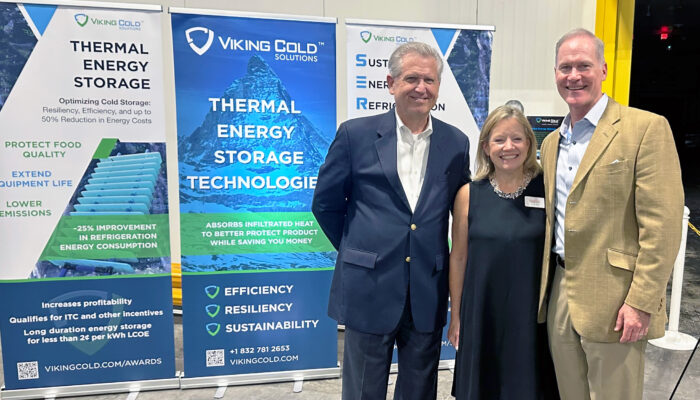 Viking Cold Helps Celebrate Feeding Northeast Florida’s Decade of Impact
Viking Cold Helps Celebrate Feeding Northeast Florida’s Decade of Impact
Viking Cold Solutions proudly supported the 10th Anniversary of Feeding Northeast Florida and their event celebrating the grand opening of their new distribution center on Saturday, September 28th. For the past decade, Feeding Northeast Florida has been fighting hunger across the region, where more than 270,000 residents face food insecurity every day. Last year alone, the food bank distributed nearly 35 million pounds of food, and the need continues to grow as 1 in 5 children and 1 in 8 adults in Florida face food insecurity. These people rely on Feeding Northeast Florida for access to fresh, healthy groceries instead of having to make a choice between nourishment and other expenses like healthcare, housing, and utilities. In partnership with Feeding Northeast Florida, Viking Cold Solutions installed a Thermal Energy Storage (TES) system which will lower energy costs, improve food quality, and allow the food bank to feed more of their neighbors. With TES technology, Feeding Northeast Florida will be able to extend its reach and serve more residents by redirecting the savings from reduced utility expenses to providing more meals to those in need. At the celebration, Viking Cold Solutions’ Founder and Chairman, Paul Robbins, was recognized for his accomplishments in the logistics and cold storage industry including his invention and patenting of Thermal Energy Storage technology. We are grateful to Feeding Northeast Florida for their partnership and commitment to addressing hunger in the community. At Viking Cold Solutions, we are dedicated to strengthening these food bank partnerships to help feed more Americans and reduce food insecurity across North America.
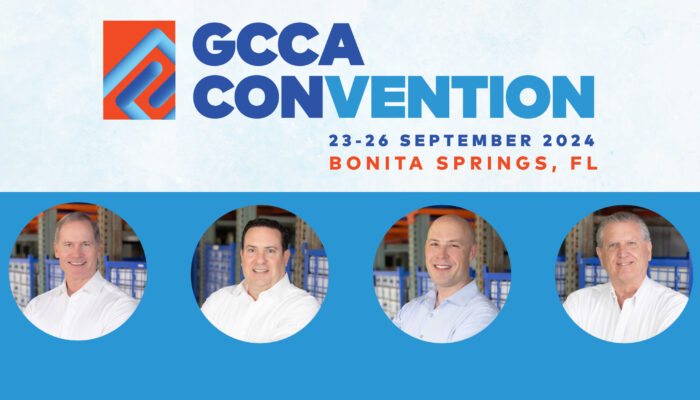 Viking Cold Solutions Champions Energy Efficiency
Viking Cold Solutions Champions Energy Efficiency
The 2024 Global Cold Chain Alliance (GCCA) Convention, held in Bonita Springs, Florida, faced an unexpected interruption due to the approach of Hurricane Helene. As always, the GCCA stepped up their game in the face of adversity and pivoted to deliver an outstanding event. Viking Cold Solutions also stayed the course and was able to engage with like-minded companies to evaluate new technologies and strategies for navigating the cold chain industry. The GCCA Convention is an annual event for advancing the cold chain, fostering collaboration and innovation while promoting sustainable practices. It brings industry leaders together to exchange insights and best practices on improving temperature-controlled logistics, reducing carbon emissions, and enhancing operational efficiency. With ever-evolving regulations affecting everything from energy efficiency to food safety, staying informed is essential for companies aiming to optimize operations and minimize environmental impact. The market is evolving quickly, driven by new innovations and the growing need for efficiency and sustainability. To stay ahead, technology-driven companies are exploring advancements in energy management, facility monitoring, data analysis, and incorporating artificial intelligence to optimize results. Viking Cold Solutions remains at the forefront of these technologies, driving reductions in energy costs for our clients of 20% to 30% or more. We had a great experience at this year's GCCA Convention and are grateful to the GCCA for powering through the conference despite the threat of a hurricane making landfall. As always, it was an invaluable opportunity to connect, exchange ideas, and explore innovations in the cold chain. Viking Cold continues to partner with industry leaders who advance the adoption of energy-efficient and sustainable solutions to their business challenges. Photos by Global Cold Chain Alliance.
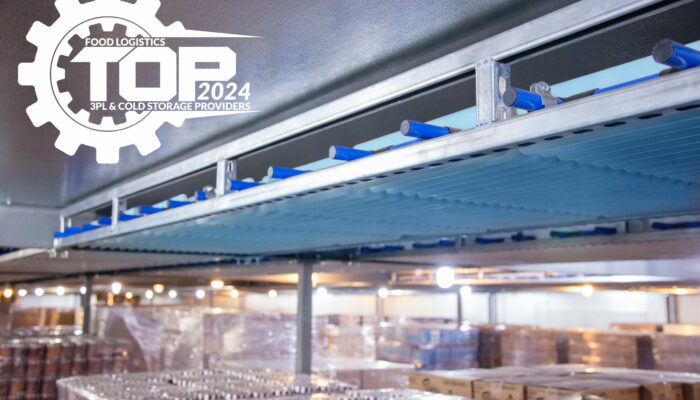 Viking Cold Solutions Wins Top 3PL & Cold Storage Provider Award
Viking Cold Solutions Wins Top 3PL & Cold Storage Provider Award
Food Logistics honored Viking Cold’s Thermal Energy Storage (TES) technology with the Top 3PL & Cold Storage Provider award for 2024! This award recognizes industry leading third-party logistics and cold storage providers in the cold food and beverage industry. Our TES technology was highlighted for making the world’s refrigeration and cold storage systems more efficient, flexible, resilient, and sustainable. With TES technology, cold storage operators can increase refrigeration system efficiency by 20-30% and cut energy costs up to 50% while better protecting products. Maintaining consistent temperature control, despite mechanical issues, grid interruptions or natural disasters, is critical for preserving product quality and safety. Our TES systems integrate easily and have been installed in commercial and industrial frozen food warehouses and distribution centers around the world. “3PLs and cold storage providers remain a key puzzle piece to building and nurturing partnerships, cultivating resilience and helping companies in the cold food space overcome supply chain disruptions,” says Marina Mayer, Editor-in-Chief of Food Logistics and Supply & Demand Chain Executive. “Seventy-six percent of the winners plan to invest in software solutions this year. This is indicative of how forward-thinking these 3PLs and cold storage providers are, and how despite disruptions and other challenges, they continue to forge ahead.” Food manufacturers, 3PLs, supermarkets, and restaurants adoption of Thermal Energy Storage technology is helping the broader food industry decarbonize today. By leveraging TES, these businesses reduce energy usage, lower their carbon footprint, and more efficiently store renewable energy. Viking Cold Solutions provides innovative technology to support a more sustainable and resilient cold chain. To see how we can help optimize your facility, check out cold storage benefits of TES. For more information on Thermal Energy Storage contact sales@vikingcold.com.
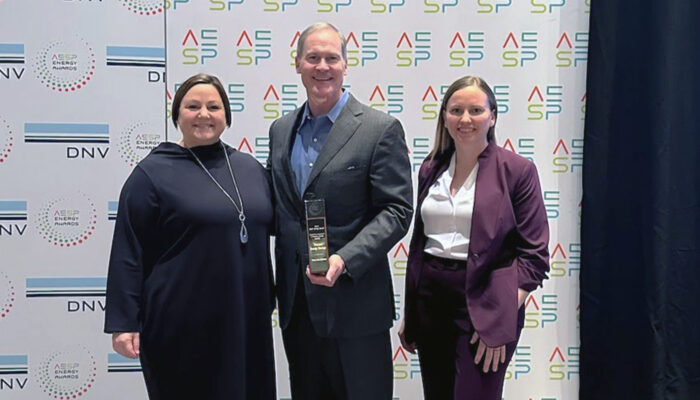 Viking Cold Solutions Wins AESP Energy Award
Viking Cold Solutions Wins AESP Energy Award
Left to right: Jen Szaro, James Bell, Rebecca Troutfetter Viking Cold Solutions is recognized by the Association of Energy Services Professionals’ (AESP) inaugural Innovations in Demand Flexibility award today at their annual conference in San Antonio, Texas. The award was received by James Bell, Viking Cold Solutions’ President and CEO, and presented by Jen Szaro, President & CEO of AESP, and Rebecca Troutfetter, Vice President of Engineering & Corporate Impact at CLEAResults. AESP, a leading industry trade group advancing the energy industry, introduced the Innovations in Demand Flexibility award this year. This competition for the award spanned various demand flexibility programs, such as renewable energy projects, distributed energy resource programs, demand response initiatives, microgrids, decarbonization efforts, and electrification programs. Viking Cold Solutions' Thermal Energy Storage (TES) technology consistently achieves positive impacts on business operations, the electricity grid, and the environment. Beyond its energy demand management and electrical efficiency achievements, TES helps address critical issues like food waste and food insecurity by better preserving food quality while also conserving electricity. Additionally, TES's unique ability to store and more efficiently utilize renewable energy assists with efforts to accelerate the decarbonization of the power grid, contributing to a more sustainable energy landscape. Viking Cold Solutions monitors all sites 24/7/365 to ensure clients’ peace of mind, and all parties can view performance metrics and historical data through the cloud-based portal. Some examples of demand flexibility and efficiency include the deployment of Viking Cold’s innovative energy technology in regional food banks from coast to coast which resulted in quantifiable and meaningful positive impacts. By reducing energy costs, TES technology provides hundreds of thousands of additional meals to Americans suffering from food insecurity. This further demonstrates Viking Cold's commitment to addressing energy and environmental challenges while creating a positive economic and social impact through practical local initiatives. Viking Cold Solutions builds lasting partnerships with our clients and stays engaged throughout the life of facilities with ongoing data collection, optimization initiatives, and utility incentive programs. Through these initiatives, TES technology has saved over 44 million kWh of electricity, avoided over 34 thousand tons of GHG emissions, and earned millions of dollars in incentives for our clients. For further details on the AESP Energy Awards, please visit AESP. To learn more about Viking Cold's technology and how it can reduce energy consumption to enhance the sustainability of cold storage facilities, reach out to Viking Cold today!
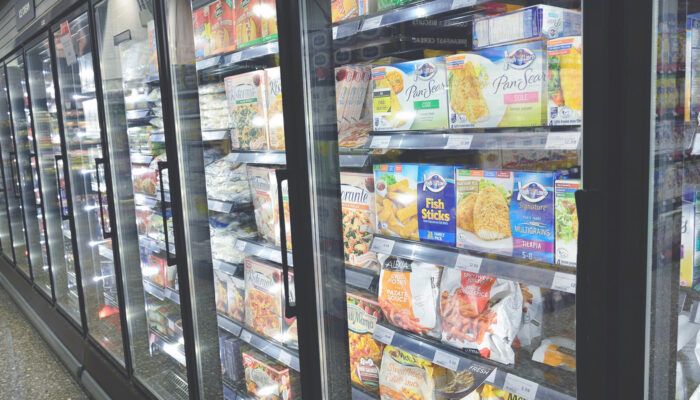 Frozen Food Month: The Path to Growing Sustainably
Frozen Food Month: The Path to Growing Sustainably
In recent years the popularity of frozen food has steadily increased in the United States. However, during the pandemic, frozen food experienced a surge in demand. The Food Institute reports that frozen food sales increased by 21%, with the pandemic serving as a major contributing factor to this growth. The pandemic-induced lockdowns and social distancing measures led to significant changes in people's eating habits, and many turned to frozen foods for their convenience, long shelf life, nutritional value, and ability to be stored in bulk. Source: Quartz Despite a steady increase in dollar sales, unit sales of frozen food fell in 2021 and 2022 by 3.2% and 5.1%, respectively, highlighting the potential impact of inflation on frozen food costs, reported the Food & Beverage Insider. Notwithstanding these declines, unit sales are still higher than they were before the pandemic, demonstrating that the demand for frozen foods remains strong – in part thanks to millennials who have now become frozen food’s largest consumers. According to the Food Navigator, older millennial shoppers, who are approaching the age of 40, represent 48% of the consumers of frozen foods. This generation prioritizes health and wellness and values a wider range of culinary options that use premium ingredients with fewer additives and preservatives. Alongside nutrition, they also demand convenience and sustainability in their food choices. With over 3,700 options in the frozen food section, there is something for every taste and lifestyle, notes the National Frozen & Refrigerated Foods Association. The growing popularity of frozen food has led 29% of consumers to expand their freezer space since the pandemic began, reported the American Frozen Food Institute. As demand for frozen food products increases, retailers are seeking ways to optimize their freezer sections while also reducing energy consumption for higher quality and more efficient frozen food storage. Companies like Viking Cold Solutions are helping retailers and distributors to not only improve the efficiency of their cold storage system by up to 50% but also increase facility resiliency. These advancements indicate a promising and sustainable future for frozen food. With all the demands on consumers’ lives, the greater convenience and quality of frozen foods meet a growing priority. The frozen food industry now has innovative new technologies to sustainably address consumers’ needs while reducing energy costs. Given the challenges of inflation and an unstable economy, it will be interesting to observe the further developments of frozen foods and cold storage technologies over the next few years. Learn more about Viking Cold’s sustainable Thermal Energy Storage technology here.
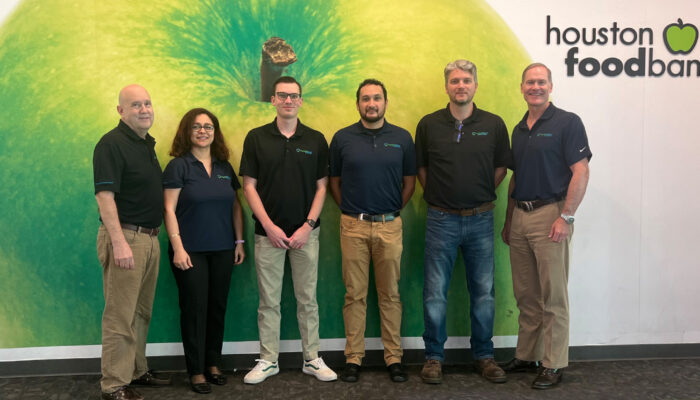 Houston Food Bank Will Feed More with Energy Savings
Houston Food Bank Will Feed More with Energy Savings
The Houston Food Bank distributes over 158 million meals every year to people struggling with hunger. With the help of more than 1,600 community partners to combat hunger and food insecurity, the Houston Food Bank provides individuals with food assistance as well as programs and services targeted at achieving long-term food stability. According to the Houston Food Bank, around 1 million people in southeast Texas are food insecure – 1 in 7 people face hunger as well as 1 in 5 children. Following the pandemic, food insecurity and unemployment increased dramatically. 53 million people sought assistance from food banks and neighborhood programs in 2021 to put food on their table. To help manage energy costs, the Houston Food Bank is partnering with Viking Cold Solutions and plans to install Thermal Energy Storage (TES) technology in their temperature-controlled facilities. TES systems are a cost-effective way to store and manage the large amounts of energy required by refrigeration equipment in cold storage facilities. Developed and patented by Viking Cold, the TES system will reduce electrical consumption and demand during peak energy usage hours inside the Houston Food Bank’s cold storage warehouse and will improve temperature stability inside their freezer. Cold storage facilities, such as frozen food warehouses, have the highest energy demand per cubic foot of any building. During peak energy use periods, they can account for up to 70 percent of the total electricity bill for organizations. The TES system's energy savings will enable the Houston Food Bank to offer thousands of additional meals every year and feed more people. Viking Cold’s partnership will help the Houston Food Bank better manage its energy usage by providing cutting-edge technology that will benefit the organization and support its mission for many years to come. Viking Cold Solutions has partnered with food programs across the United States as part of the Feeding America network, the nation’s largest domestic hunger-relief organization. For more information about Viking Cold Solutions’ Thermal Energy Storage systems, click here.
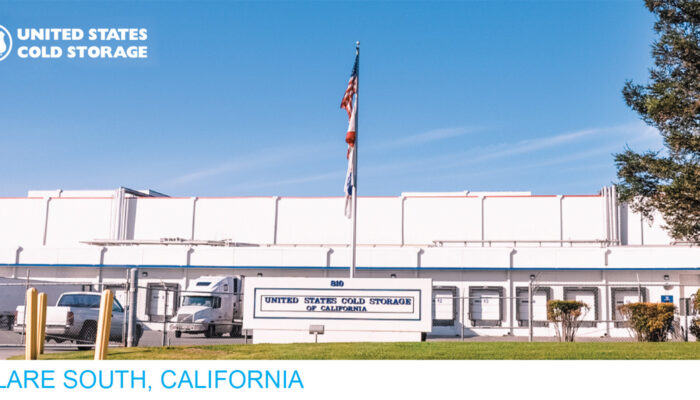 Case Study: USCS Safely Cuts GHG Emissions While Reducing Electrical Costs
Case Study: USCS Safely Cuts GHG Emissions While Reducing Electrical Costs
Situation: United States Cold Storage (USCS) is one of the top refrigerated warehousing and related logistics services companies operating throughout North America. Their Tulare South facility is a 116,482 square foot frozen food warehouse located in the agriculturally focused Inland Empire of Southern California. The state of California has committed to reaching a goal of 100% renewable and zero-carbon electricity by 2045, and USCS is just as committed to reducing their energy usage. To help California meet its energy demand reduction goals, USCS set out to focus on energy efficiency and better temperature control in their energy-intensive warehouses. Challenge: Operations managers at USCS face daily energy use challenges. To help alleviate these issues, USCS chose their Tulare South location to explore options with energy-saving technologies. The goals were to safely meet California's energy demand reduction initiatives by lowering demand and greenhouse gas (GHG) emissions while also addressing energy-use concerns, decreasing costs, and increasing sustainability and resiliency. Solution: USCS adopted Thermal Energy Storage (TES) technology to reduce their carbon footprint and lower their energy costs. Viking Cold Solutions installed energy meters, sensors, and controls throughout Tulare South’s temperature-controlled warehouse to monitor its operations and performance. Viking Cold then installed energy storage modules containing environmentally friendly Phase Change Material (PCM) which, when combined with cloud-based optimization algorithms, allowed Tulare South to control when and how it uses and procures energy. The facility's digitization, energy storage, and cloud-based optimization allows Viking Cold to continuously assess and improve the performance of USCS’s frozen food warehouse. Outcome: By utilizing Viking Cold's TES technology and optimization services, USCS lowered Tulare South’s peak period demand by more than 30% and refrigeration energy consumption by 25%, resulting in an annual carbon footprint reduction of over 350 tons at this facility. The frozen food warehouse not only increased energy efficiency but also increased temperature stability in the freezer by over 40%, better protecting the food. Operators of cold storage facilities, businesses with refrigeration loads, and utilities that need to control peak demands on the electrical grid all stand to gain significantly from Thermal Energy Storage. USCS Tulare South is a prime example of how TES technology effectively lowers energy demand and consumption while improving temperature stability in cold storage facilities. As a result, operational costs are reduced, product is protected, and environmental effects are minimized. For a more detailed account of Thermal Energy Storage and its benefits, download the USCS Tulare South Case Study.
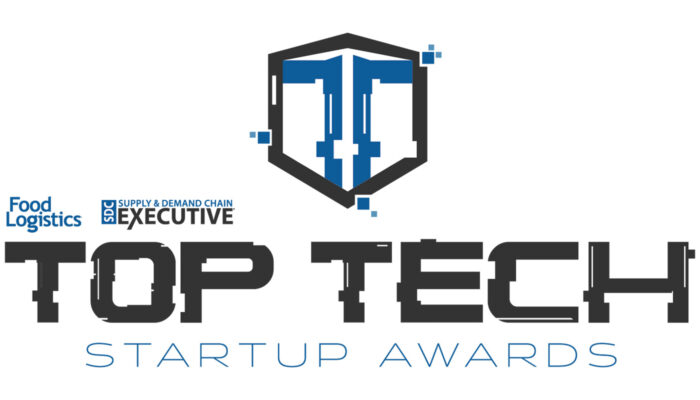 Viking Cold Receives Top Tech Startup Award
Viking Cold Receives Top Tech Startup Award
Viking Cold Solutions has been awarded the first-ever Top Tech Startup Award by Food Logistics and Supply & Demand Chain Executive. This award recognizes top software and technology startups in the supply chain and logistics industry. According to Food Logistics and Supply & Demand Chain Executive, technology and software companies are leading the way in supply chain innovation. Many of today's tech startups are positioned to significantly disrupt the supply chain space with their innovations in artificial intelligence, robotics, fulfillment execution, and real-time visibility. “The future of the supply chain industry is directly impacted by the development of these new technologies, and I’m very excited to see what’s next for these winners,” says editor-in-chief of Food Logistics and Supply & Demand Chain Executive, Marina Mayer. Viking Cold Solutions is honored to be included amongst the industry's top disrupters. Our technology empowers solutions and services that significantly reduce GHG emissions, operational costs, and business risk for cold storage operations with high refrigeration-based energy loads. Our focus is to make cold storage systems more sustainable, efficient, and resilient for the world. To view the full list of Top Tech Startup Award winners, visit the Food Logistics and Supply & Demand Chain Executive websites. For more information on Viking Cold’s award-winning technology, and how it can reduce energy consumption and increase the sustainability of your cold storage facilities, contact us today!
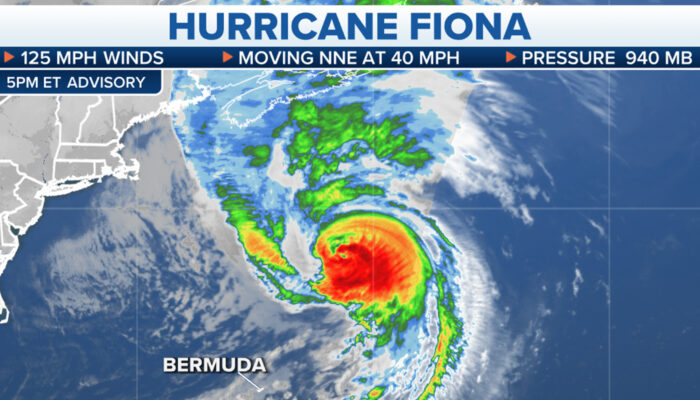 Isla Frio Partners with Viking Cold for Hurricane Resiliency
Isla Frio Partners with Viking Cold for Hurricane Resiliency
Isla Frio’s cold storage facility, in Cidra on the island of Puerto Rico, was well prepared with a back-up generator and fully charged Thermal Energy Storage (TES) when Hurricane Fiona made landfall on Sunday, September 18th. The island was overwhelmed by historic amounts of rainfall, ranging from 6 to 20 inches, with some areas receiving over 3 feet of rain from the storm. As the days progressed, Hurricane Fiona strengthened and left the entire island without power. Fortunately, the resilient combination of TES and back up generation allowed Isla Frio to maintain their required safe temperatures throughout the storm – and for days longer than other facilities – by running the generator only during the day and turning it off at night to save diesel. In fact, diesel consumption was reduced by over 50% and extended the time the generator could run from 6 days to over 12 days. Chart 1 – Isla Frio’s Main Freezer Temperature from September 5 - 23 Source: Viking Cold Solutions’ Cold Chain PortalTM In Chart 1, the change to the temperature settings to a -10 Fahrenheit setpoint before the hurricane is clear on September the 10th. This provided fully charged Thermal Energy Storage to work intermittently with Isla Frio’s generator and allowed Isla Frio to maintain safe temperatures throughout the hurricane without products ever passing -5 degrees Fahrenheit – even without any power. Isla Frio kept their clients’ products safe and were immediately able to help feed the people of Puerto Rico during their time of need. As a trusted partner to dozens of Puerto Rico’s food storage and distribution businesses, Viking Cold Solutions was there before Hurricane Fiona, during the storm, and now to help the island recover by providing resilient, safe, and energy efficient temperature control technology. Chart 2 – Isla Frio’s Cooler & Freezer Temperatures from September 18 - 23 Source: Viking Cold Solutions’ Cold Chain PortalTM Isla Frio’s TES system maintained facility temperatures day after day, as pictured in Chart 2, even when there was no power available by providing supplemental refrigeration and intelligent control. The TES technology reduced temperature stratification and cut temperature fluctuations while absorbing and consolidating 50% to 85% of heat infiltration. Our 24/7 remote monitoring and notification service kept our clients at Isla Frio well informed about their facility during the storm and provided valuable data for effective decision making. As Hurricane Fiona churns its way past Bermuda, Viking Cold Solutions was already there working with our clients to again weather the storm. We’re relieved that our Puerto Rico clients are recovering quickly with our resilient technology and look forward to helping more businesses get through extreme weather and manage expensive, intermittent electricity. Whether it’s a hurricane, equipment failure, forest fires, or other natural or man-made disasters, Viking Cold Solutions’ resilient sustainability technology is there to help. For more information about how our TES technology can help your facility, click here.
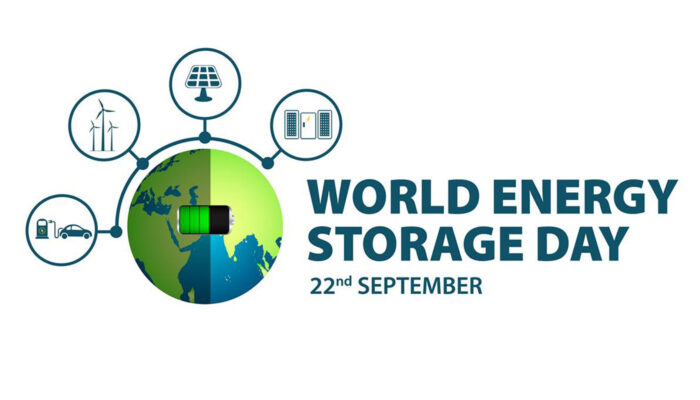 Today Is World Energy Storage Day!
Today Is World Energy Storage Day!
Energy storage is a rapidly evolving technology and has been advancing to the forefront of the electrical industry, shifting the focus to the effective integration of renewable energy. Various international enterprises recognized the increasing value of energy storage and have created World Energy Storage Day to commemorate its significance. This global movement is celebrated on September 22nd every year by policy officials, associations, and industries working to promote and adopt energy storage, e-mobility, and green technology for a more sustainable future. According to the Energy Storage Association, energy storage is an enabling technology; it saves consumers money, improves reliability and resilience, integrates generation sources, and helps reduce environmental impacts. It’s a key element for the entire grid, augmenting resources from wind, solar, and hydropower as well as nuclear and fossil fuels, demand-side resources, and system efficiency assets. By tapping into energy storage during outages, businesses can continue normal operations and avoid costly disruptions. When demand shifts and baseload resources can’t react quickly enough, energy storage can inject or extract energy to match the load as needed, making the grid more responsive and reducing the need to build backup power plants. The effectiveness of energy storage is based on its ability to respond quickly to changes in demand, the rate at which energy is lost during the storage process, the total amount of energy it can store, and the speed at which it can be recharged. More than 90% of global grid battery storage is dominated by lithium-ion batteries, which are today's most widely used battery storage alternative, reports the Environmental and Energy Study Institute. However, there are multiple types of energy storage that can provide large-storage capacities, such as pumped hydro, compressed air, and thermal. With the rapid development of energy storage, business owners and policymakers are looking towards more environmentally friendly sources of energy storage beyond lithium-ion batteries. According to Precedence Research, the global energy storage systems market size is projected to surpass $435 billion by 2030 and grow at a CAGR of over 8% from 2022 to 2030. Record investments in energy storage are being fueled by declining costs and new incentives. As reported by the Environmental Defense Fund, costs for energy storage have declined by 74% since 2013 and are projected to decline 8% per year through the mid 2020s. In fact, the cost of some storage has decreased so quickly that many utilities are switching to renewable energy combined with storage instead of investing in expensive new natural gas power plants. Over the next ten years, combining energy storage with renewable energy sources could completely change the way we purchase, sell, and utilize energy. State and Federal laws, such as the Inflation Reduction Act of 2022, are also opening new market opportunities and revenue streams, which will be the primary driver of growth outside of cost. Incentives can bridge market gaps and assist in further market adoption. In the U.S., certain industries such as cold storage, consume over $50 billion in energy annually. Refrigeration energy cost is one of the top operating expenses which drives demand from operators for energy reduction technologies. These businesses include over 4,200 cold storage warehouses, more than 40,000 grocery store freezers, and over 620,000 restaurant freezers. To help these businesses, Viking Cold Solutions developed and commercialized thermal energy storage technologies that offer both sustainability benefits and deliver proven 20% to 35% energy savings in temperature-controlled environments. With the growing concern over the prices of fossil fuels, their environmental impacts, and the capacity and resilience of energy grids around the world, stakeholders are increasingly turning their attention to energy storage solutions. To learn about how thermal energy storage technology reduces energy use and carbon emissions while increasing resiliency, click here.
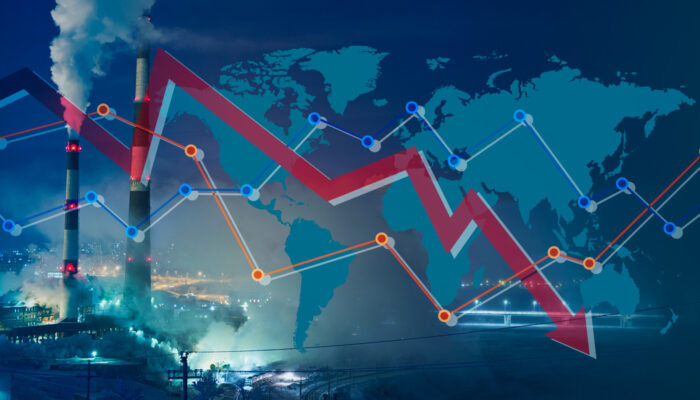 New Law Promotes Transformative Changes in Clean Energy
New Law Promotes Transformative Changes in Clean Energy
The clean energy landscape dramatically shifted due to the signing of the Inflation Reduction Act of 2022 on August 16th. This new law significantly increases the tax incentives available for energy transition initiatives and technology while removing many of the roadblocks that have hindered the United States’ shift to cleaner energy. Certain industries will see a major rise in financing due to these new regulations, which will alter how capital is managed and invested, tax credits are monetized, and clean energy projects are financed. $369 billion will be spent on climate and clean energy initiatives, including tax subsidies for electric and renewable vehicles, investments in U.S. production of sustainable technologies, and environmental justice. The Act also authorizes the Department of Energy to issue guarantees of up to $250 billion for clean energy projects. Norton Rose Fulbright notes that these fall under three types of energy infrastructure projects. One type is projects that retool, repower, reuse, or replace outdated energy infrastructure. Another is attempting to make energy infrastructure operational so that air pollution or greenhouse gas emissions can be avoided, reduced, used, or sequestered. The third type of projects consist of initiatives to repair environmental harm brought on by energy infrastructure. The Act is also extending the project eligibility to dedicated energy storage and geothermal energy. According to J.P. Morgan, solar and wind production have been down the last few years in part due to the uncertainty surrounding the renewable Investment Tax Credits (ITCs) and Production Tax Credits. However, with the Inflation Reduction Act, we can expect to see an increase in wind and solar production. Additionally, there will be a new standalone 30% investment tax credit for energy storage, particularly battery, pumped hydro, and thermal. Wood Mackenzie predicts that a 30% storage Investment Tax Credit would lead to a 20-25% rise in U.S. storage deployments over the next five years. Many analogies have been made to the solar business, where, according to the Solar Energy Industries Association, the Investment Tax Credit was one of the most important government policy tools for fostering industry growth. The solar industry has expanded by more than 10,000% since the ITCs implementation in 2006. The Inflation Reduction Act further offers long-term tax credit incentives for a wide range of renewable energy technologies. These incentives represent a considerable improvement over the current energy tax credit programs, which were only applicable to a restricted number of technologies and have been the subject of continuous phase-out and extension cycles during the past two decades. With the guarantee of a long-term and steady tax credit through at least the next ten years, the majority of clean energy technologies, such as wind, solar, biomass, thermal, and carbon capture, are now more financially viable. A variety of innovative energy transition technologies that had not previously qualified for tax credits are now eligible for subsidies under the Act, including energy storage projects, clean energy manufacturing facilities, hydrogen projects that adhere to minimum carbon emission standards, biogas production facilities, and current nuclear power plants. With new incentives for energy storage, companies such as ours can more cost effectively deploy energy saving technologies to more clients and industries. The Inflation Reduction Act will open many doors for energy storage and those interested in temperature control and thermal energy management. With our Thermal Energy Storage, Viking Cold has developed the only proven, environmentally friendly way to store renewable energy in the refrigerated and temperature-control industries. We look forward to using the provisions of the Inflation Reduction Act to help businesses to be more efficient and reduce their carbon footprint while lowering their energy costs up to 50%. Whatever its other impacts, the Inflation Reduction Act of 2022 is the broadest ranging legislation to address sustainability and decarbonization of the energy sector in our lifetime. To read the Inflation Reduction Act in full, click here. For more information on how thermal energy storage can help manage refrigeration energy costs, click here.
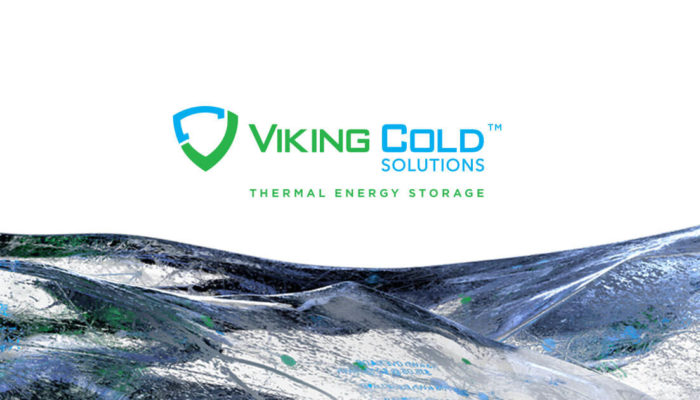 How Viking Cold Can Help Your Energy Efficiency Goals
How Viking Cold Can Help Your Energy Efficiency Goals
Energy costs around the U.S. have been climbing leaving consumers wondering "how high will they go?" States such as Hawaii, Massachusetts, and California have the highest electricity rates in the country, with California as the second-largest energy consumer in the nation after Texas. In the last five years, electricity costs in the Los Angeles area exceeded the national average by 34% or more since 2018 – see Chart 1. Chart 1: Average prices for electricity U.S. & Los Angeles Source: U.S. Bureau of Labor Statistics Despite California’s high-energy consumption, its per capita energy consumption is less than most states due in part to its mild climate and its energy efficiency programs. The Golden State primarily produces electricity from solar, geothermal, and biomass energy, making it one of the most energy-efficient states in the country – but that isn’t enough for California. The state has committed to reaching a goal of 100% renewable and zero-carbon electricity by 2045, and the California Energy Commission (CEC) is leading the way. The CEC supports energy research and development programs to spur innovation in energy efficiency and has lately completed a major study on the route to zero net energy (ZNE), which includes Viking Cold Solutions’ Thermal Energy Storage (TES) in the blueprint for a path to net zero emissions for commercial buildings. The Viking Cold TES system was installed in the walk-in grocery freezer at a San Francisco Whole Foods store. This installation included Phase Change Materials (PCM) mounted on the ceiling of the walk-in freezer as well as cloud-based intelligent controls integrated with the existing refrigeration controls. According to the report, refrigeration accounts for a majority of the store’s electrical load, therefore thermal PCM, also known as thermal energy storage or TES, is a promising method for storing small amounts of excess energy. TES allows refrigeration compressors to run less often when energy costs are high (and energy production is low) and to run more often and store thermal energy when energy costs are low (and there is excess generation). This reduces cycling of the compressors and refrigeration energy costs, ultimately improving the efficiency of existing refrigeration systems. This is done by increasing the percentage of the total refrigeration run time that occurs during hours with lower ambient temperatures, thereby running the compressors at higher efficiency levels – see Chart 2. Chart 2: Plot comparing the predicted baseline energy with post-retrofit energy consumption for Viking Cold System Source: CEC Report, Figure D-9 TES technology combines intelligence with PCM to maximize the energy efficiency of the refrigeration system. Viking Cold PCM cells add thermal mass to a room, providing the ability to hold designated temperatures for much longer periods, which helps reduce refrigeration runtimes. Intelligent controls and an energy-management system help maintain a constant temperature and alert operators about any mechanical malfunction or power outage. The CEC study concluded that TES technology produced 25% energy savings and was proven as an applicable energy conservation measure to help achieve California’s energy efficiency goals. The results of this study were released by the CEC as a blueprint for a successful path to ZNE commercial buildings in California, but this blueprint could easily be one for the entire world. Read more about Viking Cold’s approach to cold storage efficiency here. For additional information about the CEC study, click here.
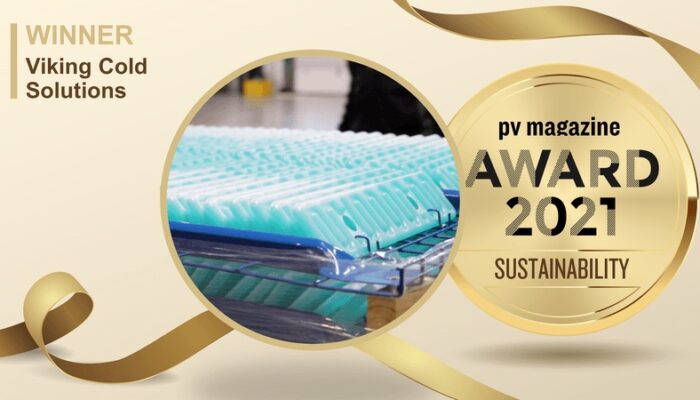 Viking Cold Solutions Wins pv magazine’s Sustainability Award
Viking Cold Solutions Wins pv magazine’s Sustainability Award
pv magazine recently recognized Viking Cold Solutions as the 2021 Sustainability Award winner for its innovative Thermal Energy Storage (TES) technology and services. This accolade is awarded to companies with technological innovations and groundbreaking solutions in the solar and energy storage industries. An independent panel of jurors cited the energy efficiency and the scalability of the company’s TES technology as two of the reasons Viking Cold was selected over hundreds of other companies vying for awards. This international recognition of TES technology's contributions to greater efficiency and reduction of greenhouse gas emissions from energy-intensive temperature-controlled facilities supports Viking Cold’s core mission: To transform refrigeration by reducing its carbon footprint, operating costs, food loss, and electrical grid impacts using innovative Thermal Energy Storage technology and services. The Sustainability Award was presented to Viking Cold during a globally live-streamed ceremony from Berlin, Germany, in February. View full video: here. During the event, pv magazine’s panel discussion with Viking Cold’s CEO, James Bell, further revealed that TES technology offers an effective and sustainable solution to a major environmental challenge: food degradation and waste. In fact, Viking Cold has developed the only proven, environmentally-friendly way to store solar energy in the cold storage industry. James commented, “TES allows energy-intensive refrigeration equipment in C&I facilities to be cycled down during peak hours of the day, effectively cutting the production of carbon emissions and reducing carbon footprint by tens of thousands of metric tons.” Users can expect improved temperature stability and to save up to 50% on their energy expenses while improving their refrigeration system efficiency by 20% to 30%. With a 20-year system life and no mechanical components, TES is an effective solution to managing demand and storing solar or other renewable energy in the cold chain. “This is an ingenious and very efficient solution to solar’s ‘duck curve’ problem and we hope to see widespread deployment,” said one juror from the selection committee. Read more about Viking Cold's approach to cold storage efficiency here. For more details on our recent awards and milestones, check out our latest press release. And for more information about a TES solution for your facility, contact us here.
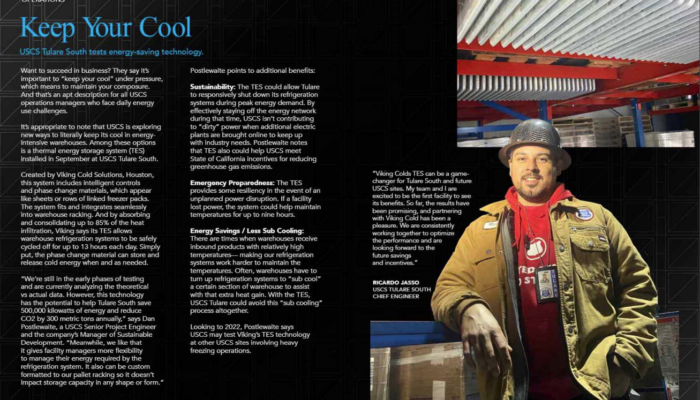 Another successful TES installation for a sustainability focused 3PL company
Another successful TES installation for a sustainability focused 3PL company
Initial results show 20%-30% energy savings on a recent deployment of Thermal Energy Storage technology in a US Cold facility in Tulare, California. US Cold references the energy saving and carbon reducing technology in their quarterly newsletter- the Shield- accessible here. Here at Viking Cold we are excited that another world class company has embraced the energy and cost savings of TES technology and the sustainability and carbon reduction that it provides to the cold chain which consumes more electricity than any other source except lighting. #sustainability #carbonreduction #vikingcoldsolutions
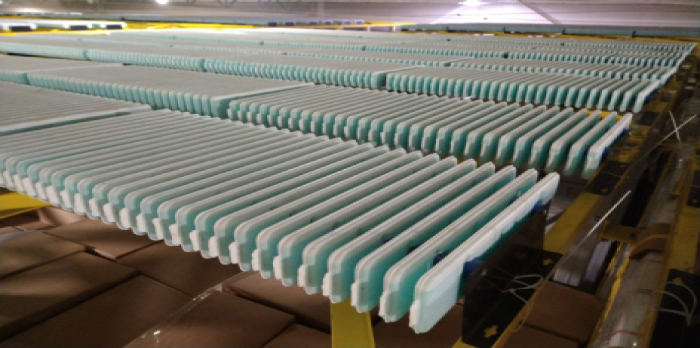 Another Successful, Sustainable Thermal Energy Storage Installation in Mexico
Another Successful, Sustainable Thermal Energy Storage Installation in Mexico
Viking Cold has successfully installed another Thermal Energy Storage (TES) and refrigeration optimization system inside a third-party logistics frozen food warehouse in Mexico. Our client, Frigoríficos ARCOSA, is a leading cold storage provider with distribution centers across Mexico and has over three decades of experience providing temperature-controlled solutions and support services to their food & beverage and retail clients. They are also proud members of the Global Cold Chain Alliance (GCCA). Operating energy-intensive refrigerated facilities in Mexico presents many challenges. Not only do operators like ARCOSA have to deal with the expected business and logistical challenges of cold storage, but the energy market in Mexico has variability which creates difficulties for operations budgets and profitability. After payroll, energy related expenses are typically the second highest cost for cold storage facilities, and refrigeration can be up to 90% of their energy costs. Without technologies and strategies that add energy flexibility, variable energy prices can negatively impact the bottom line. In Mexico, like many other places around the globe, energy prices vary based on time-of-use with consumption and demand charges significantly higher during peak periods and intermediate peak periods (sometimes referred to as partial peak periods). Because cold storage warehouses must maintain temperatures to protect food quality, technologies that safely reduce refrigeration energy consumption and demand during Mexico’s high-priced periods without loss of temperature control are critical to cold storage profitability. With these needs in mind, ARCOSA approached Viking Cold to see if refrigeration optimization and TES technology with Phase Change Material (PCM) could provide the energy flexibility needed to reduce energy costs and GHG emissions in their refrigerated warehouses in Mexico. Viking Cold first evaluated their 64,000 square foot freezer in Juquila. At the time of evaluation and installation, this plant experienced intermediate peak prices up to 17 hours per day and peak prices up to four hours per day with some seasonal variations. The operating strategy had three goals: Minimize energy demand (kW) and reduce energy consumption (kWh) during each of the seasonal peak periods and intermediate periods Maintain temperature protocols Not increase energy use during any period An interface between existing refrigeration controls and Viking Cold’s refrigeration optimization software was implemented, additional sensors were added, and TES modules containing PCM specifically engineered to the warehouse’s temperature requirements were easily integrated into the existing warehouse infrastructure. Results have exceeded expectations, since installation of the TES and refrigeration optimization solutions: Demand reductions over 380 kW during all peak periods Annual weather-normalized consumption reduction of over 400,000 kWh - the equivalent of 280 metric tons of GHG emissions Temperatures held within requirements Approximately $120,000 (MEX$2,400,000) of annual savings at current energy prices ARCOSA owner and President Gabriel Guzman noted, “ARCOSA’s partnership with Viking Cold has begun with positive results for both cost reductions and sustainability improvements that we hope to replicate in our other facilities.” The flexibility Viking Cold provided to manage when and how their refrigeration system uses electricity has provided ARCOSA with confidence that when energy market changes do occur, they have technology-enabled flexibility that reduces energy risks and improves the sustainability of their cold chain operations.
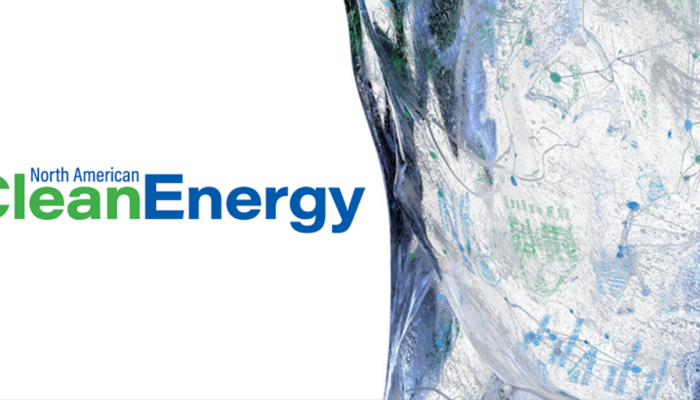 North American Clean Energy: Why Refrigerated Warehouses Need Long-Duration Thermal Energy Storage
North American Clean Energy: Why Refrigerated Warehouses Need Long-Duration Thermal Energy Storage
North American Clean Energy has published an article by Viking Cold's Director of Marketing, Damon Vance, that discusses how many commercial & industrial (C&I) refrigerated warehouses across the country are contributing to solutions for some of the challenges on the electrical grid. The C&I facilities in the cold chain, when utilizing energy storage and refrigeration optimization solutions like Viking Cold's, represent a significant opportunity to help reach the goals of utility operators and the Biden Administration's $36 billion decarbonization plan. By enabling cold chain facilities with added sustainability, resiliency, and flexibility operators of both cold storage and the electrical grid can reduce costs and GHG emissions. Read the article or contact Viking Cold to learn more about the intense electrical load, aging infrastructure, and rapid growth rate of the refrigerated cold chain and how new technologies like Thermal Energy Storage (TES) are helping them improve refrigeration efficiencies, reduce their carbon footprint, and contribute to the growth of renewable energy sources as we enter the energy transition.
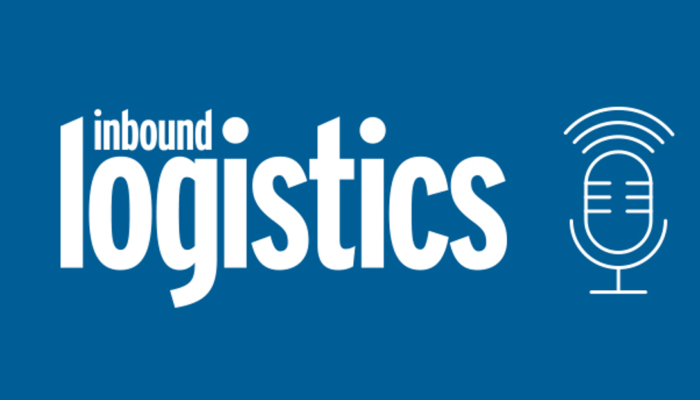 Inbound Logistics Podcast: Sustainable and Profitable Refrigerated Logistics
Inbound Logistics Podcast: Sustainable and Profitable Refrigerated Logistics
Jeof Vita, the host of the Inbound Logistics Podcast, spoke with Viking Cold President & CEO, James Bell to discuss how Thermal Energy Storage (TES) technology is helping cold chain operators balance their need to be more sustainable and profitable with the amount of refrigeration required to protect their food's quality (Episode 118). Utilizing Viking Cold's refrigeration optimization solutions to address the unique temperature and energy challenges of different cold storage facilities from food producers and 3PL providers to foodservice distributors and retailers is also discussed. Additionally, they cover how the unique energy storage and efficiency capabilities of TES are improving how refrigerated facilities are interacting with the electrical grid for improved sustainability and reduced operating costs.
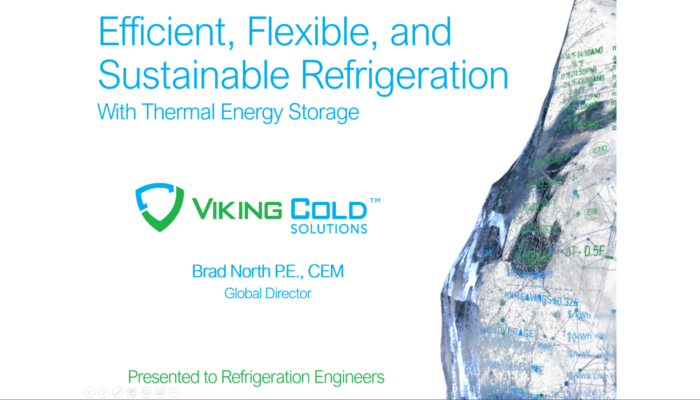 Refrigeration Engineers Presentation – Efficient, Flexible, Sustainable Refrigeration with Thermal Energy Storage
Refrigeration Engineers Presentation – Efficient, Flexible, Sustainable Refrigeration with Thermal Energy Storage
Refrigeration engineers often receive a lot of valuable training and education through their professional organizations. Viking Cold's Global Director Brad North, P.E., CEM presents some of the key benefits of Thermal Energy Storage (TES) using Phase Change Material (PCM) in refrigeration applications to a national HVAC and refrigeration engineering association. In this 21-minute video presentation to engineers in the HVACR industry, refrigeration benefits such as reducing energy use, improving sustainability, minimizing temperature stratification, extending temperature resiliency, and improving interconnectivity with power from the electrical grid are covered. Brad begins his presentation with relevant cold chain statistics about facilities where refrigeration optimization with intelligent Thermal Energy Storage is being achieved by leveraging PCM. He also explains some of the unique thermodynamic properties of PCM that allow TES systems to achieve positive refrigeration energy and temperature management results. He then covers how the PCM is configured and easily installed into various cold storage refrigerated facilities without additional space requirements or the loss of valuable storage area. Also covered in the presentation is a brief evolutionary history of the refrigeration practice known as flywheeling – subcooling the food and surrounding room to then minimize refrigeration during periods with high energy costs. Brad discusses factors that influenced the start of flywheeling, are transforming flywheeling practices with new technologies, as well as how PCM safely extends the length of flywheeling periods while reducing the risk to food quality and shelf life. He also shares how PCM is able to slow temperature increases in a room without active refrigeration and shows case study data illustrating a reduced rate-of-rise and improved temperature stability. Inside cold storage facilities temperature stratification throughout the room generally occurs. Brad shows some examples of how properly installed PCM combined with intelligence reduces the extent of temperature stratification and creates a more uniform temperature across the vertical space of these refrigerated rooms. With the introduction of PCM a new “stratification floor” is created that consolidates more of the heat near the ceiling in the airflow of the evaporators for improved temperatures around the food and for easy removal of the heat by the refrigeration system. Thermal Energy Storage is often considered a way to simply shift when energy is consumed by refrigeration systems. Brad explains many of the factors that allow Viking Cold’s TES technology to not only shift the timing of refrigeration but also to safely reduce the total kWh energy consumption (energy efficiency) of the refrigeration systems. Hear about the factors that enable this such as reducing the horsepower per ton ratio, the ability to run refrigeration systems at maximum designed efficiency or “fully loaded”, the consolidation of up to 85% of the heat infiltration near the top of the room, the PCM’s higher heat capacity and heat transfer rates, and the fact that TES systems do not have mechanical components that cannibalize the energy savings with parasitic losses. Also discussed in this refrigeration engineer's presentation are additional attributes of TES that provide energy flexibility and the ability to safely and easily participate in multiple utility and grid operator programs. Many of these programs reduce costs, some provide financial incentives for technology upgrades, and some programs can generate revenue streams for operators of refrigerated facilities. The added refrigeration flexibility from TES enables participation in programs such as demand response, permanent load shed, targeted load shed, peak shaving, responding to market index pricing signals, renewables plus storage, and capacity programs. Temperature resiliency inside the refrigerated cold chain is paramount to maintaining food quality and shelf life while minimizing food loss. Brad also explains how PCM adds resiliency to cold storage rooms. Common scenarios that disrupt cold storage operations and create a need for temperature resiliency are becoming more common and include mechanical breakdown of refrigeration system components and loss of power from ice storms, hurricanes, wildfires, utility-initiated de-energization, and more. Refrigerated facilities that have TES installed have up to three times longer temperature protection during any of these situations that may cause the loss of refrigeration. Whether you are a facilities or business leader, refrigeration engineer, cold storage operator, or somewhere in the temperature-controlled cold chain, there is something in this short professional association presentation for you. Quickly learn about mitigating risk, cutting costs, improving sustainability, stabilizing temperatures, and more. Click above to watch this short 21-minute refrigeration engineer professional association presentation. Or contact us today to learn how our refrigeration optimization and thermal energy storage solutions will save you energy and money.
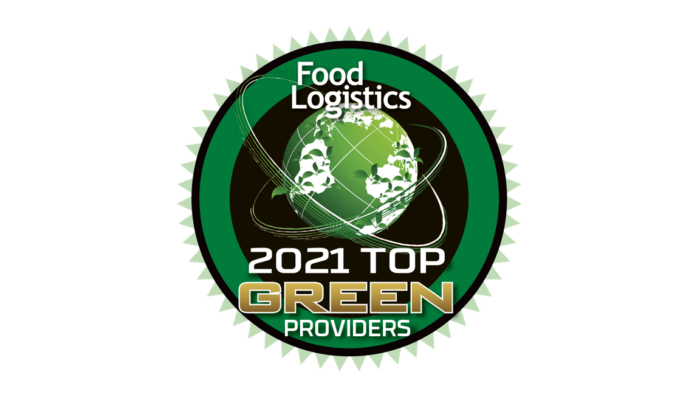 Viking Cold Earns 5th Top Green Provider Award from Food Logistics
Viking Cold Earns 5th Top Green Provider Award from Food Logistics
Viking Cold Solutions Named Top Green Provider by Food Logistics for Fifth Consecutive Year The award recognizes companies whose products, services or exemplary leadership are enhancing sustainability within the cold food and beverage industry HOUSTON, June 22, 2021 - Viking Cold Solutions, the leading thermal energy storage and refrigeration optimization service provider for low-temperature cold storage industries, announces it has been included in the 2021 Top Green Providers list from Food Logistics for the fifth consecutive year, underscoring the company's sustainability contributions to the global cold chain. The editorial staff evaluates a company’s participation in such programs as the EPA’s SmartWay and other recognized sustainability programs; facilities that are LEED-certified and/or feature solar panels, LED lighting and other energy-saving installations and retrofits; and other means of producing measurable reductions in GHG emissions. "When the pandemic hit, I thought for sure that sustainability would be pushed to the wayside. But, in fact, the complete opposite happened. And, I couldn’t be more appreciative of the supply chain industry’s efforts in making sustainability top of mind in every aspect of their organization despite the many supply chain disruptions they continue to face,” said Marina Mayer, Editor-in-Chief of Food Logistics and Supply & Demand Chain Executive. “Sustainability is the key to success, and the recipients of this year’s award prove that when sustainability matters to them, they will continue to do great things and make a difference in the industry.” Viking Cold Solutions Director of Marketing Damon Vance shared: "We are honored to once again be recognized by Food Logistics as a Top Green Provider. Our goal is not only to deliver cost-effective optimization solutions to refrigerated facilities but to also offer sustainable technology that helps preserve our planet for future generations." Recipients of this year’s award will be profiled in the June 2021 print issue. Go to www.FoodLogistics.com to view the full list of all 2021 Top Green Providers. About Viking Cold Solutions Viking Cold Solutions is the leading long-duration thermal energy storage and refrigeration optimization service provider to the energy-intensive frozen/low-temperature cold storage industry. Viking Cold delivers cost-effective and flexible energy management services which protect food and help reduce the environmental impact of refrigeration. Its patented Thermal Energy Storage system with phase change material (PCM) and intelligent controls reduce cold storage energy costs up to 35 percent or more, while improving temperature stability and optimizing refrigeration operations. Viking Cold Solutions’ TES systems have been measured, verified, and incentivized by energy utilities across the U.S. and are currently in use around the world providing efficiency to grocery stores, low-temperature warehouses, and restaurants. For additional information, please visit www.vikingcold.com. About Food Logistics Food Logistics is the only publication exclusively dedicated to covering the movement of product through the global cold food supply chain, focusing on trucking, warehousing, packaging, risk management, food safety and more. Go to www.FoodLogistics.com. Press Contact: Damon Vance Marketing Director dvance@vikingcold.com +1.832.899.4771
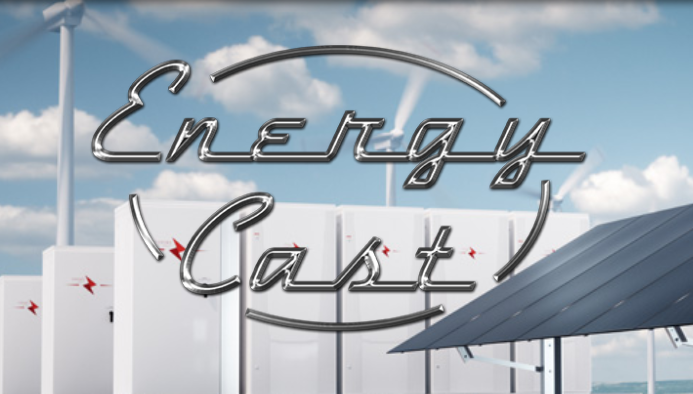 Energy Cast Podcast: Thermal Thinking with Viking Cold
Energy Cast Podcast: Thermal Thinking with Viking Cold
Jay Dauenhauer, the host of Energy Cast podcast, recently interviewed James Bell, Viking Cold President & CEO. They discuss predecessors in the thermal energy storage (TES) market, lessons learned, the benefits of Viking Cold's TES solutions, and why TES is critical to the future electrical grid and the entire food distribution network. Listen to this fast-paced interview to hear more about how TES is shifting refrigeration load (the highest on the grid per cubic foot), reducing refrigeration consumption (third highest behind only lighting and HVAC), cutting costs for our clients in the food industry, a few nuggets about the genesis of Viking Cold, and the "lightning round" conversation about the future of energy technologies.
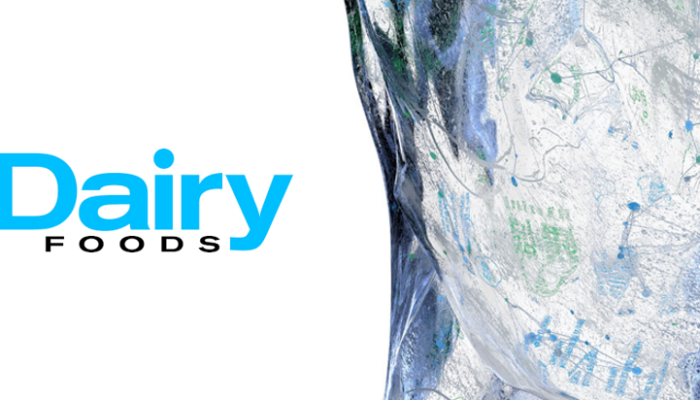 Dairy Foods: Mechanization picks ups steam in dairy processing warehouses
Dairy Foods: Mechanization picks ups steam in dairy processing warehouses
A recent article in Dairy Foods Magazine highlights the mechanization and automation trends in dairy food production facilities. Topics include materials-handling automation, software upgrades, refrigeration optimization, automated storage and retrieval systems (AS/RS), and how technologies will be integrated to maximize efficiency, traceability, transparency, storage density, optimal material flow, and to better manage warehouse labor in their operations. Viking Cold's VP of Sales & Marketing, Collin Coker, was interviewed along with other food production warehouse technology providers including LIDD, Tippman Group, Signode Industrial Group, Applied Net Solutions, Westfalia Technologies Inc., and Quest Industrial LLC.
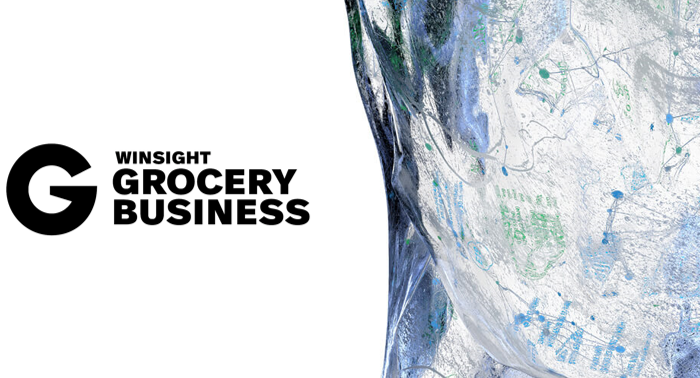 Grocery Business Q&A: How Grocers Are Getting Smarter About Cold Storage
Grocery Business Q&A: How Grocers Are Getting Smarter About Cold Storage
Winsight Grocery Busines editor, Christine LaFave Grace, discussed how grocery retailers are getting smarter about their cold storage assets with Viking Cold President & CEO, James Bell. Effects from the pandemic, digitalization, new technology advancements, and more are discussed. How is consumer behavior driving new store layouts and needs for additional refrigerated spaces that require temperature and energy optimization? How has sustainability been reprioritized since the start of the pandemic?
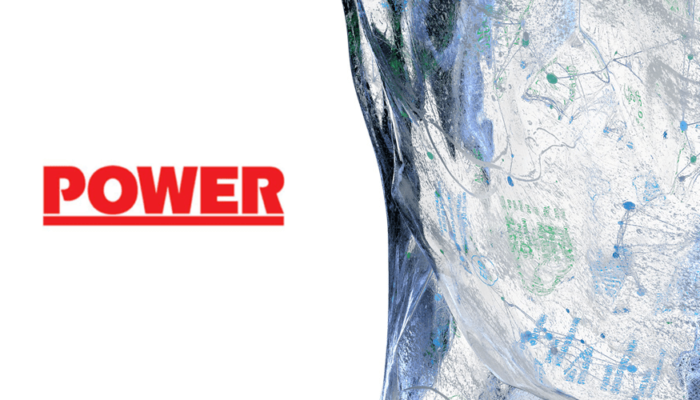 POWER: Distributed Generation Part of Puerto Rico Rebuild
POWER: Distributed Generation Part of Puerto Rico Rebuild
POWER Magazine's Associate Editor Darrell Proctor recently published an article focused on the rebuilding of Puerto Rico's electrical grid after a number of devastating hurricanes including Hurricane Maria in 2017. "The Puerto Rico Electric Power Authority has embarked on a $20 billion plan to rebuild the island’s power grid. The initiative includes a commitment to generate 40% of the island’s power from renewable resources by 2025, and 100% by 2050. C&I enterprises using distributed power generation are a large part of the effort." The article highlights Viking Cold as one of the leading sustainable Distributed Energy Resources (DER) delivering cost-effective, reliable, and resilient power to the island's industrial and commercial businesses. Isla Frio, a cold storage company on the island, is building a new 147,000 square foot facility with Viking Cold's Thermal Energy Storage (TES) technology to add hurricane-resistant food storage capacity to the island. The second phase of the project will include the addition of onsite solar power generation. The combination of renewables with the existing TES installed during construction will maximize the cost-effectiveness of their solar-plus-storage investment and help Puerto Rico meet its aggressive goals to add resilient renewable generation to the grid.
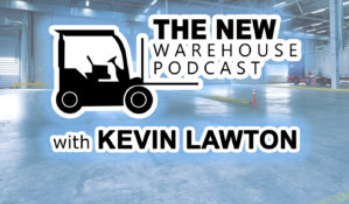 New Warehouse Podcast: Digitization & Sustainability in Refrigerated Warehouses
New Warehouse Podcast: Digitization & Sustainability in Refrigerated Warehouses
Kevin Lawton, the host of The New Warehouse Podcast, interviewed Viking Cold Solutions' President & CEO James Bell to discuss the current and future state of digitization and sustainability inside refrigerated warehouses. They discuss how digitization and thermal energy storage work in cold storage to maximize the efficiency, resiliency, and sustainability of the cold chain. The conversation also covers some of the additional levels of complexity of refrigerated spaces and how the impacts of the pandemic have driven the adoption of technologies such as WMS, automation, robotics, and thermal energy storage inside refrigerated warehouses. James and Kevin also discuss the market conditions driving more construction of cold storage facilities and how digitization and new technology is being included in the design and building of new warehouses. Additionally, Kevin and James cover the electrical grid impacts of refrigerated spaces, and how with thermal energy storage and warehouse digitization operators can reduce costs and create new revenue streams. Listen to the full conversation on the podcast here: EP 150: Digitization and Sustainability in Refrigerated Warehouses with Viking Cold Solutions
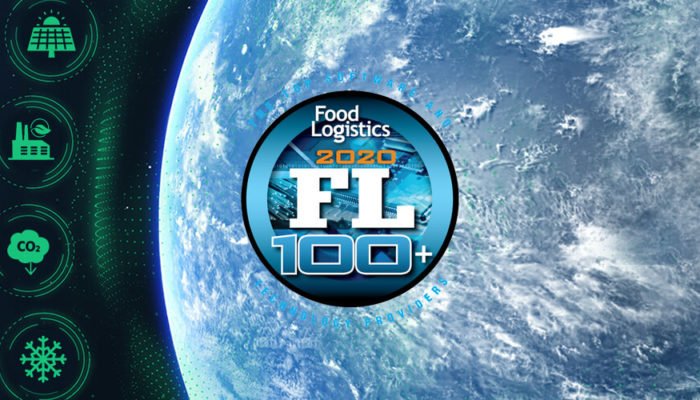 Viking Cold Collects 2020 FL100+ Award
Viking Cold Collects 2020 FL100+ Award
Food Logistics has recognized Viking Cold Solutions among the top logistics software providers for 2020, as one of the leading software and technology partners to the food and beverage industry, for the second year in a row. The publication named Viking Cold as a winner of its 2020 FL100+ Award in recognition of the significant reductions in both energy usage and costs and operational improvements that Viking Cold’s Thermal Energy Storage (TES) technology delivers in cold chain settings. Now in its 17th year, the FL100+ is a highly respected annual listing of top logistics software providers that are addressing the unique challenges of today’s food and beverage supply chain. Recipients are judged to deliver products and services that support efficient transportation and warehousing, minimize operational waste, facilitate safe operations, and assure regulatory compliance. Viking Cold was selected for the strengths of its innovative Thermal Energy Storage (TES) technology, which equips cold chain facilities with the means to enhance refrigeration efficiency and increase operational resilience. This not only helps customers reduce their carbon footprint, but also achieves a reduction in energy costs of up to 50%. Combining environmentally friendly phase change materials with a powerful suite of cloud-based operational tools, TES integrates easily with existing controls to provide real-time monitoring and analytics of temperatures, equipment status, and energy use. These data-driven insights are made available to warehouse managers via the Viking Cold client portal with custom reports, notifications, and analytics giving them the actionable intelligence to improve cold storage operations and reduce costly peak-period energy consumption for up to 13 hours per day. All the while, TES ensures stable refrigerated temperatures are maintained, which safeguards food products, limits waste, and minimizes disruption during periods of downtime or power outage. The full list of FL100+ Award winners was revealed by Food Logistics in an announcement on December 16. Full details will be published in the November/December 2020 print issue of the magazine. For more information on the technology behind Viking Cold’s award-winning thermal energy storage solution, and how it can reduce energy consumption and costs for your food warehousing operations, get in touch today.
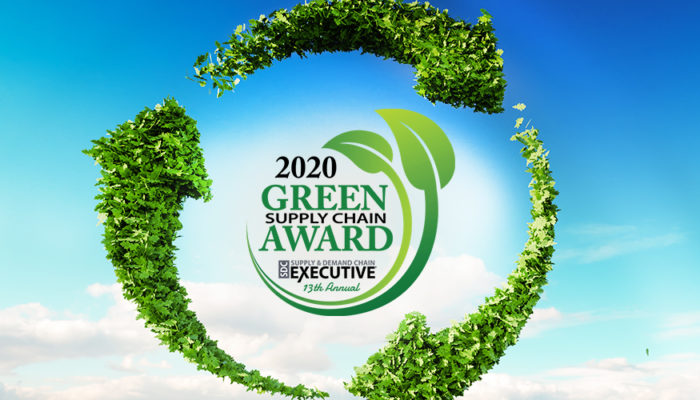 Viking Cold Wins Green Supply Chain Award 2020
Viking Cold Wins Green Supply Chain Award 2020
Viking Cold is delighted to have been named a winner at the Green Supply Chain Awards 2020 in recognition of its commitment to help customers reduce their carbon footprint. The win is a testament to the strengths of Viking Cold’s highly efficient Thermal Energy Storage (TES) technology, which optimizes refrigeration, lowers demand and overall power consumption in high-demand cold storage applications, and delivers benefits to both the environment and the bottom line. The Green Supply Chain Awards, co-ordinated by Supply & Demand Chain Executive magazine, celebrate companies working to achieve sustainability goals as well as providers of supply chain solutions and services that support customers in their carbon-reduction efforts. Winners were selected for their ability to demonstrate a clear sustainable supply chain strategy and provide evidence of how they are executing on those strategies to deliver measurable results. Viking Cold’s TES technology, which has previously been recognized in the Green Supply Chain Awards, increases refrigeration system efficiency in cold storage environments by an average of 26%. It is based on the use of 100% recyclable thermal energy storage cells that contain environmentally friendly Phase Change Materials. Energy is stored in the cells for later release, enabling refrigeration equipment to be safely cycled off over long periods, limiting the amount of power being drawn from the grid while maintaining a consistent temperature to safeguard food quality. Viking Cold’s offering also incorporates a cloud-based suite of operational tools to deliver the data insight needed to optimize operations and energy usage and provide evidence of the savings generated. For more information on the Green Supply Chain Awards, visit the SDCE website. Contact us today to discuss how Viking Cold’s award-winning Thermal Energy Storage technology can help reduce energy consumption and enhance the sustainability credentials of your cold storage facilities.
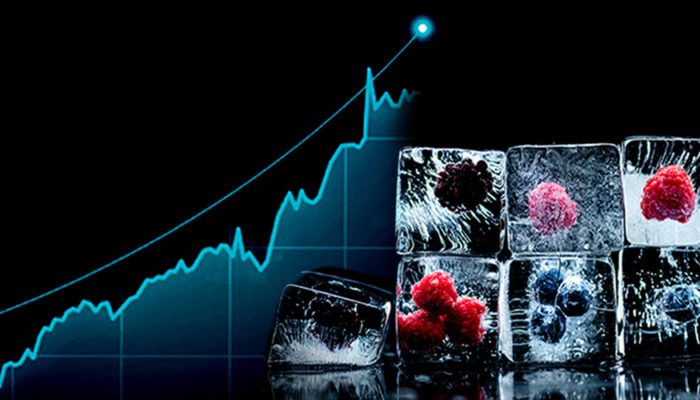 Frozen Food Market Trends 2020
Frozen Food Market Trends 2020
The coronavirus pandemic has greatly disrupted the U.S. food industry, resulting in significant changes in consumer behavior and an increased demand for industrial cold storage warehouse space. With quarantines still in effect around most of the country, consumers have been forced to eat at home more and either “panic-buy” large quantities of extra groceries and/or shift to more online orders more frequently. Additionally, because of its longer shelf-life and surge in available options, the frozen food category has seen significant growth in both online and in-person grocery purchases, forcing grocery and cold storage facilities to scramble to keep up. According to the American Frozen Food Institute (AFFI), seven in 10 frozen food shoppers have increased the amount of frozen food they’re buying since the start of the pandemic. Six months in, U.S. shoppers are continuing to stock up their freezers with frozen meals, meats, ice cream, and frozen novelties. Not only is the number of consumers purchasing frozen food growing, but many have also switched to ordering directly online from restaurants and foodservice distributors. The question is: How has this rapidly changing behavior affected the cold storage industry – an essential element of our supply chain dedicated to protecting, delivering, and handling temperature-controlled goods in the United States. Warehouse demand, in general, has been accelerating in recent years, largely due to the booming e-commerce industry. The world’s largest commercial real estate services and investment firm, Coldwell Banker Richard Ellis (CBRE), examined the relationship between e-commerce grocery growth and cold storage warehouse capacity in its 2019 “Food on Demand Series: Cold Storage Logistics Unpacked” report, forecasting that in order to meet the demand generated by online grocery sales, an additional 75 to 100 million sq. ft. of industrial freezer and cooler space will be needed within the next five years – an increase of roughly 47%. CBRE researchers also suggest that much of the cold-storage sector’s growth is likely to occur in gateway markets like Los Angeles and the New York area, as well as in top food-producing states such as California, Texas, Wisconsin, Florida, and Washington state. As the pandemic persists, cold storage facilities are at record high capacity and struggling to keep up with the continuous demand. Cold storage facilities typically fall into the categories of public refrigerated warehouses (PRWs), foodservice and wholesale, grocery distribution centers and retail stores, and food processing facilities. Due to changing demand, PRWs have been forced to provide smaller, more frequent orders. National food industry news source, The Food Institute, stated that “Instead of supplying a full pallet of a single product to a warehouse, PRWs are now delivering a pallet with multiple products directly to the store. These small orders increase labor requirements and change transportation options drastically.” Many expect major PRWs to accelerate the industry’s consolidation trend in order to gain more control over the United States’ cold storage footprint. It is also expected that to address the changing market, cold storage facility operators will be proactively upgrading their warehouses with new technologies to improve operational efficiency and flexibility. Warehouse upgrades that are seeing a surge in popularity include technologies such as Viking Cold Solutions thermal energy storage (TES), warehouse management systems (WMS), and material handling automation and robotic systems. The intelligence platform of Viking Cold’s TES system not only optimizes temperatures and energy use, but provides valuable, actionable data that allows operators to make operational improvements. Additionally, there has been a growing interest in sustainable, carbon-reducing technologies. Viking Cold’s thermal energy storage systems also address these needs by increasing refrigeration energy efficiency an average of 26% while better protecting food and improving temperature resiliency. By absorbing and consolidating up to 85% of the heat infiltration, TES also allows refrigeration systems to be safely cycled off for up to 13 hours each day to avoid demand or time-of-use energy fees, while maintaining stable temperatures. The technology leverages existing refrigeration systems and easily integrates with controls, other data platforms, and racking structures to bring efficiency, flexibility, and additional food protection to the frozen food chain. The COVID-19 pandemic has accelerated changes in consumer behavior, implementation of technology, and broad market trends in the food industry. The entire distribution chain from food processors to logistics companies to retailers is under added pressure to make improvements to stay profitable and keep food on our tables. The future remains unclear but enabling technologies like Viking Cold’s TES are helping the food and beverage industry feed our families by improving operations, cutting costs, and lowering the GHG emissions of refrigeration.
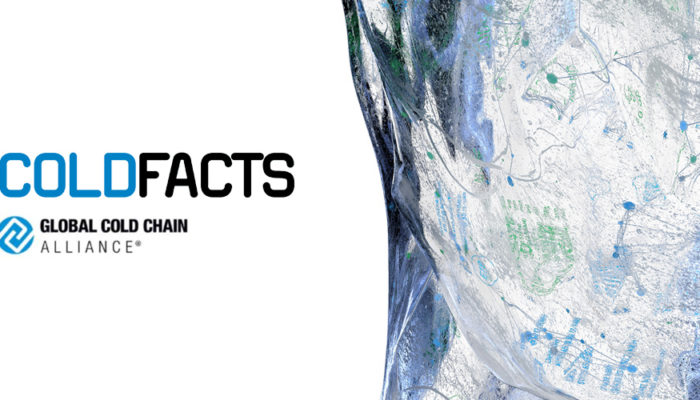 Cold Facts: Cutting-Edge Warehouse Energy Alternatives
Cold Facts: Cutting-Edge Warehouse Energy Alternatives
Cold Facts magazine has listed Viking Cold Solutions among the cutting-edge warehouse energy technologies delivering cost-efficient and sustainable benefits in temperature-controlled applications. The magazine, published by the Global Cold Chain Alliance, included Viking Cold in an overview of technologies that have advanced in recent years to provide “savvy facilities” with new ways of answering their refrigeration challenges. The article explains how Viking Cold’s thermal energy storage (TES) technology allows operators to safely shift energy use during high-tariff periods to maximize cost savings while also reducing total energy consumption. It highlights how TES opens the door to more renewable energy use while enabling operators to take advantage of utility programs, incentives, and demand-response economics. James Bell, President & CEO of Viking Cold, noted that the cloud-based intelligence platform used to manage TES provides operators with the controls and visibility to maximize operational efficiency in cold storage facilities. At the same time, it minimizes the use of refrigeration equipment. He explained how it draws on real-time data to automate temperature optimization and energy consumption. The long-duration storage technology discharges for up to 13 hours per day to maintain stable temperatures that protect food quality and shelf life, even if electricity or equipment fails. Bell added that TES technology can interface with warehouse management systems, automation platforms, data analytics, and artificial intelligence (AI) tools. Adoption of all of these potentially powerful technologies is accelerating in the face of the COVID-19 pandemic, said Bell, as facilities look to closely measure, monitor, and limit energy consumption with a view to introducing greater cost reduction and enhancing sustainability. “Cold storage and electrical grid operators both are facing new energy challenges. As the world moves towards renewables and green sources of electricity, TES technology is a unique and powerful tool to help address these challenges,” Bell concluded. To read the full article on warehouse energy alternatives, visit the Cold Facts magazine page on the GCCA website. The article starts on page 28. For more information on Viking Cold’s cutting-edge thermal energy storage technology, and how it can enhance cost efficiencies and sustainability for your cold storage facilities, get in touch today.
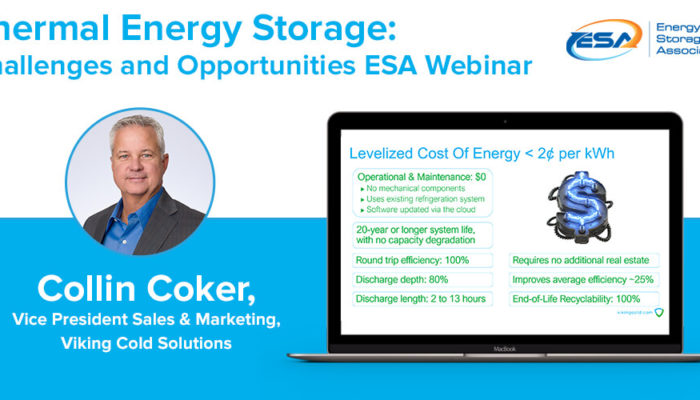 Viking Cold Adds Voice to ESA Webinar
Viking Cold Adds Voice to ESA Webinar
Viking Cold provided insight into the advantages of its Thermal Energy Storage technology as part of an educational webinar hosted by the Energy Storage Association (ESA). The session, titled Thermal Energy Storage: Challenges and Opportunities, gave ESA members a chance to learn about the technologies and trends shaping the thermal energy storage sector, forming part of the association’s work to help establish a more resilient, efficient, sustainable, and affordable electrical grid. Marc Chupka, ESA’s Vice President of Research and Programs, welcomed Collin Coker, Vice President Sales & Marketing, to share an overview of Viking Cold’s Thermal Energy Storage technology and highlight how it fits into this landscape. Coker explained how TES has a drastically lower levelized cost of energy (LCOE) of two cents per kilowatt-hour (kWh), making it far more cost-effective than conventional electrical storage mediums, such as lithium-ion batteries. He briefed the ESA audience on the phase change materials (PCM) at the heart of Viking Cold technology, describing how it demonstrates significantly higher heat-absorption rates compared with frozen food, while continuously releasing cold energy to provide stable temperatures that protect products held in commercial & industrial (C&I) warehouse environments as well as grocery store and restaurant walk-in freezers. Coker pointed to the fact that resiliency is built into the Viking Cold TES solution since no power is required and the PCM can hold temperatures three times longer than the thermal mass of food alone, helping defend chilled environments against power outages, natural disasters, and mechanical failures. With intelligent controls to manage energy release over extended periods and 24/7 visibility of energy, temperature, and operational data, Coker added that Viking Cold brings greater levels of efficiency to cold chain environments while enhancing sustainability efforts. In the case of one customer, net power consumption has declined by 43% over a 13-hour period along with a 29% peak demand reduction, he said. Coker went on to highlight successful utility-supported programs involving Viking Cold’s TES technology, which includes a multi-customer project involving some of the largest food distribution companies in the world. In total, this initiative accomplished 1.3 megawatts (MW) of energy curtailment over a four hour ICAP period. He concluded with the findings from a third-party measurement and verification study, showing how one site is using Viking Cold’s TES technology in combination with excess solar power generation during the day to achieve a 95% reduction in overnight energy consumption, effectively taking the site off the grid. The ESA webinar is available in full, including access to the accompanying slides, via the ESA’s YouTube channel. For more information on how Viking Cold’s Thermal Energy Storage is bringing greater levels of resiliency, efficiency, sustainability, and affordability to cold chain environments, get in touch with us today.
 POWER Magazine: Managing Demand with TES
POWER Magazine: Managing Demand with TES
POWER magazine, a leading source of information for the power generation industry, has published an article highlighting the benefits of Viking Cold’s Thermal Energy Storage (TES) technology in managing power demand for utilities and cold storage customers. The article, authored by Collin Coker, Vice President of Sales and Marketing at Viking Cold, gave an overview of the changing energy landscape, where factors such as the increase in Distributed Energy Resources (DERs) and the variability of renewable generation sources are having a bearing on power providers’ ability to manage demand when and where it is needed. Coker points out that time of use, capacity, transmission, and distribution all impact the total cost of electricity for the end-user. This presents an acute issue for food businesses with commercial and industrial (C&I) refrigerated facilities, where a continuous energy supply is needed to control temperature fluctuations and avoid any damage being caused to the products being stored. Underlining this point, he cites data showing that C&I refrigeration sites have the highest demand per square foot of any industrial load, with energy often accounting for up to 70% of their total electric bill. Coker explains how Viking Cold’s TES technology has been designed specifically for such applications, using proprietary Phase Change Material that remains near a constant temperature while storing large amounts of energy that can be released over long periods, covering higher cost periods of peak demand. Among the Viking Cold clients the article highlighted as managing demand through the use of TES was Dreisbach Enterprises in Richmond, California, which has reduced demand between 300 kW to 500 kW for 13 hours per day, six days a week while also improving temperature stability by 50% and avoiding the technique of ‘flywheeling’ on the food. Overall, Dreisbach Enterprises was able to achieve a cut in freezer energy consumption of 35%. To read the full article, and for more news and insight into energy operations and maintenance, visit the POWER magazine website. For more information on how Thermal Energy Storage can bring greater control and cost-savings to your cold storage facility, get in touch with Viking Cold today.
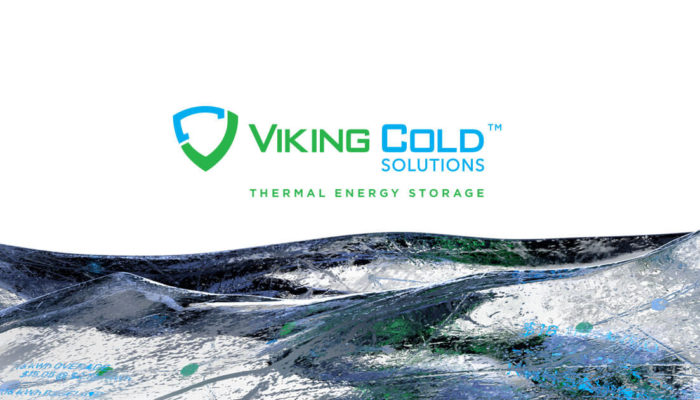 Release: Xcel Energy’s Custom Thermal Storage Incentive Program
Release: Xcel Energy’s Custom Thermal Storage Incentive Program
VIKING COLD SOLUTIONS ANNOUNCES LAUNCH OF XCEL ENERGY'S CUSTOM THERMAL STORAGE INCENTIVE PROGRAM Utility Program Funds Up to 90% of Energy-Saving Technology Upgrades for Frozen Food Producers and Cold Storage Warehouse Operators in Colorado and Minnesota HOUSTON, Sept. 22, 2020 (GLOBE NEWSWIRE) -- Viking Cold Solutions, the leading thermal energy storage technology provider for the low-temperature cold storage and frozen food industries, announces the inclusion of its award-winning energy storage technology in Xcel Energy’s new Custom Thermal Storage Incentive Program, part of their Custom Efficiency programs in Colorado and Minnesota. As an industry leader in delivering clean energy solutions, Xcel Energy is currently offering significant funding for energy-saving technology upgrades, such as Viking Cold’s Thermal Energy Storage (TES) systems, which safely reduce demand and add temperature resiliency and efficiency to low-temperature facilities with large energy needs. The majority of the TES system and installation costs will be funded by Xcel Energy’s Custom Thermal Storage Incentive Program and the remainder can be paid for out of the energy savings. By working with the utility to deploy innovative technology that addresses grid challenges and reduces emissions, owners of cold storage and frozen food facilities can save up to 25% or more on their monthly energy costs. “Xcel Energy’s support of Viking Cold technology is further confirmation that TES creates value for both the utility as well as frozen food and cold storage customers. The utilities are incentivizing customers to upgrade their facilities with the latest efficiency and sustainability technology, such as TES, to provide safe, long-duration demand reduction. This helps customers in Colorado and Minnesota achieve their financial and sustainability goals,” said Collin Coker, Viking Cold’s Vice President of Sales & Marketing. Viking Cold works directly with Xcel Energy representatives to assist customers through the program application process to maximize incentives, install the TES technology, and optimize the facility’s operation and energy use. To learn more about how to save money while reducing your environmental impact and to initiate the application process, go to vikingcold.com/xcel. In addition to Xcel Energy, Viking Cold Solutions is proud to collaborate on demand management and efficiency programs in partnership with other prominent U.S. utilities shaping a clean energy future, including Eversource Energy, National Grid, Pacific Gas & Electric Co., Southern California Edison Co., San Diego Gas & Electric Co., and many more. ### About Xcel Energy Xcel Energy provides the energy that powers millions of homes and businesses across eight Western and Midwestern states. Headquartered in Minneapolis, the company is an industry leader in responsibly reducing carbon emissions and producing and delivering clean energy solutions from a variety of renewable sources at competitive prices. For more information, visit xcelenergy.com. About Viking Cold Solutions Viking Cold Solutions is the leading long-duration thermal energy storage technology provider to the energy-intensive frozen/low-temperature cold storage and frozen food industries. Viking Cold delivers cost-effective and flexible energy management services that protect food and help reduce environmental impact. Its patented Thermal Energy Storage system with phase change material (PCM) and intelligent controls reduces cold storage energy costs up to 25 percent or more, while sustainably improving temperature stability and optimizing refrigeration operations. Viking Cold Solutions’ TES systems have been measured, verified, and incentivized by energy utilities across the U.S. and are currently in use around the world providing energy management and efficiency to utilities, grocery stores, low-temperature warehouses, and restaurants. Viking Cold Colorado Contact: Adam Valmoro Regional Director avalmoro@vikingcold.com +1 949.375.3551 (m) Viking Cold Minnesota Contact: Brad North Regional Director bnorth@vikingcold.com +1 302.383.0138 (m) Press Contact: Damon Vance Marketing Director dvance@vikingcold.com +1 832.899.4771
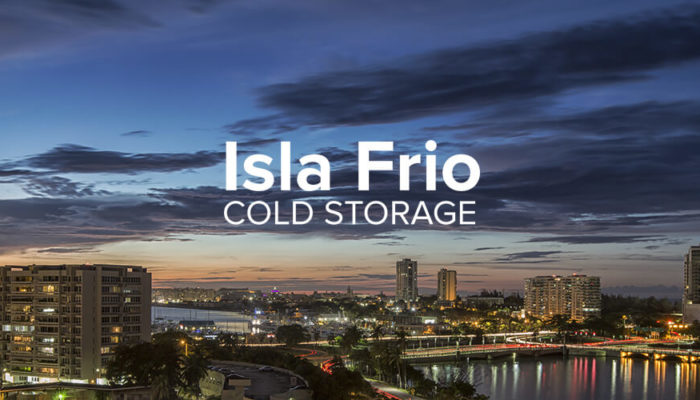 New Cold Storage Construction with TES in Puerto Rico
New Cold Storage Construction with TES in Puerto Rico
Cold storage firm, Isla Frio Refrigeration Corp., recently acquired a former PepsiCo bottling and distribution plant in Cidra, Puerto Rico. The 147,000 square-foot building on eight acres is being fully renovated to become a state-of-the-art frozen and refrigerated food warehouse, beginning with 50,000 square feet of frozen storage. The end goal of the $10 million project is to supply hurricane-resistant cold and dry storage space for the island while also providing thermal resilience with our Thermal Energy Storage (TES) technology for temperature-controlled goods in the event of a power outage. Over the years, Puerto Rico has been hit exceptionally hard by natural disasters and other crises, and with an unreliable power grid, these events inflict significant impacts on supply chain efficiency and functionality. During Hurricane Maria in 2017 and the lengthy power loss that followed, our clients’ facilities on the island did not lose any food product, thanks to the TES systems they have installed. The recent coronavirus pandemic has also amplified the growing need for more cold storage capacity and the island-wide shortage of warehouse space. The recent acquisition of the PepsiCo plant provides an opportunity to build a highly efficient, energy-secure cold storage facility to support the recovering supply chain and electrical grid on the island. The energy resources of this construction project are in alignment with the guiding principles of Puerto Rico’s overall grid modernization plan. Led by the Puerto Rico Electric Power Authority (PREPA), the $20 billion plan will reconstruct the island’s grid, ultimately dividing it into eight self-sufficient mini-grids and providing residents with a safer, greener, and more resilient energy supply. In addition, the island has committed to generating 40% of its power from renewables by 2025 and 100% by 2050. These ambitious clean energy goals will drive the widespread adoption of renewable energy generation, which is complemented through the use of sustainable energy storage technologies like our TES systems. “Puerto Rico has always been very important to Viking Cold Solutions. Our first warehouse installation was on this beautiful island, and it’s appropriate that our first new cold storage construction project be right here in Cidre, PR,” said Paul Robbins, Founder of Viking Cold Solutions. The Isla Frio project, which began construction in June 2020, will be Viking Cold’s first system installation to be part of a facility’s original design and construction plan; previous installations have been facility retrofit projects. Phase One will be to install our technology and get the cold storage facility up and running by December. Phase Two will build out the rest of the site and may eventually include an onsite solar power resource to assist in powering the facility. Once the plant is operational with TES technology, carbon emissions and energy use will be minimized, enhanced energy resilience and flexibility will be in place, and the facility will benefit from lower electricity costs – a significant value on an island with among the highest electricity costs in the U.S. The building itself is connected to a large diesel generator to provide backup power and is built at a high elevation, better protecting it from floods. During extended grid interruptions or power outages, the generator and its fuel can be conserved because the TES technology provides built-in temperature resilience to protect food up to several days without power. We are proud to again be working with another Puerto Rico-based company, this time to help them build their cold storage resources in a sustainable way right from the start. By implementing our energy storage technology, Puerto Rico is one step closer to meeting its goal of generating 100% of its power from renewables by 2050.
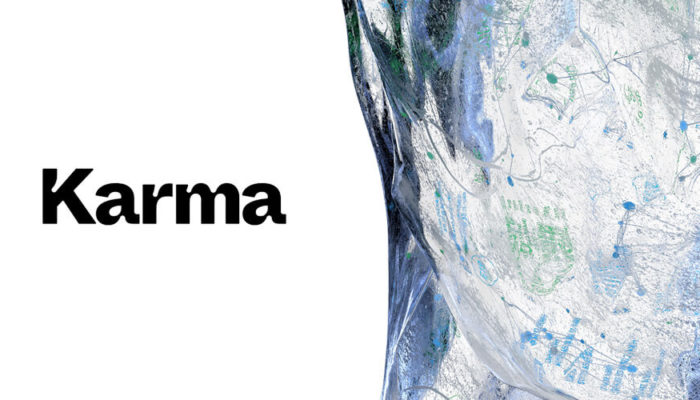 Impact Investment and Viking Cold Solutions
Impact Investment and Viking Cold Solutions
Karma Impact, the impact investment news site aimed at the alternative investment community, published an overview of the impact of Viking Cold Solutions' technology on energy consumption and costs, resilience, and sustainability. Starting with the story of Viking Cold, from the initial insight of its founder Paul Robbins, up to its current status as a provider of proven energy savings, Karma Impact outlines the key advantages of Viking Cold Solutions for impact investors. Karma Impact describes how Viking Cold's Thermal Energy Storage (TES) technology allows cold storage facilities to consume electricity when prices are lowest, and then maintain low temperatures within each facility while reducing refrigeration energy through the rest of the day. Using sealed containers of a phase change material, managed and monitored through intelligent software, the system with no mechanical components provides efficiency and cost reductions of 25-50% for low-temperature facilities. Of particular interest to the impact investment community, as Karma Impact noted, is the potential to pair Viking Cold’s TES solutions with renewable energy, such as solar. This combination allows facilities to reduce electricity consumed from the grid by up to 95%, and while facilities managers would be impressed by the resulting cost savings, impact investors will be struck by the ability to dramatically reduce electricity consumption in an energy intensive sector of the economy. Alternatives to Viking Cold’s TES technologies might understandably be less attractive to impact investors. Traditional batteries, such as Lithium-ion batteries, are environmentally damaging, Karma Impact notes. Alternatively, sub-cooling food to attempt to lower energy costs (often called “flywheeling”) can decrease food quality. Moreover, Karma Impact notes the impact of Viking Cold’s technology in improving resilience in the face of natural disasters, referencing the experiences of Viking Cold’s customers in Puerto Rico during Hurricanes Maria and Irma. You can read the full coverage on Karma Impact’s site, here. To speak directly to Viking Cold, to find out how we can help you reduce electricity consumption, cut carbon emissions, and improve resilience, contact us here.
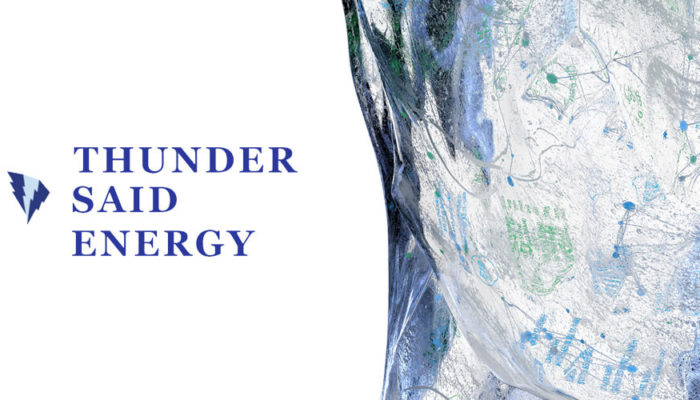 Thunder Said Phase Change Materials Review
Thunder Said Phase Change Materials Review
Thunder Said Energy, the research consultancy for energy technologies, has released a review of the benefits of thermal energy storage for refrigeration, renewable energy sources, and energy storage at large. Phase Change Materials (PCM), such as those used by Viking Cold Solutions, are described by the report as a “game-changer” for energy storage technology, particularly with reference to their use alongside renewable energy. The report explains the economics of cold storage, the functioning of Phase Change Materials, and covers a review of 5,800 patents in the space. Thunder Said’s Phase Change Materials review made the key observation that PCM technologies can: Earn double-digit Internal Rate of Return Unlock 20% efficiency gains in freezers and refrigerators Provide superior efficiency over battery storage Noting that refrigerators and freezers comprise 9% of the US electric grid, including consumption across 4,200 warehouses, 40,000 supermarkets, and 620,000 restaurants, Thunder Said is bullish on the potentials of Phase Change Materials. The PCM report, which can be purchased from the authors here, highlights the achievements of Viking Cold Solutions’ thermal energy management technologies, the industry-leading performance that will be of particular interest to the readers. While Thunder Said expects 20% improvements in efficiency gains and commensurate cost savings, Viking Cold’s own installations have delivered efficiency improvements and cost savings of between 25% and 50%, out-performing the analysts’ expectations. Viking Cold Solutions has developed its own PCMs and proprietary software from its headquarters in Houston, Texas, and now has the technology installed and running in locations from California to Puerto Rico and Mexico to Australia, with years of reliable operation and documented case studies to confirm the technology’s effectiveness in reducing cost, energy consumption, and carbon emissions. For specific case studies and overviews of Viking Cold Solutions’ technology’s performance, see our Resources. And to find out how we can improve your energy efficiency and reduce your energy costs, contact us here.
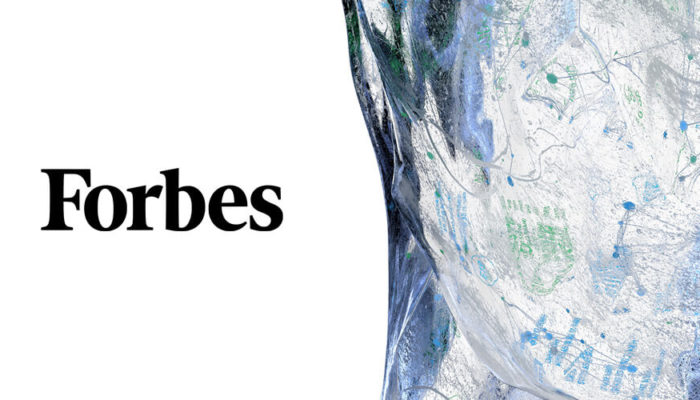 Forbes Mergermarket Cold Storage Opportunities
Forbes Mergermarket Cold Storage Opportunities
Forbes reports that the US cold storage market is due for strong growth in the next few years, and that the logistics, warehousing, and distribution space holds considerable potential for value creation. In a recent Forbes post describing cold storage opportunities, Mergermarket quotes a report from business consulting firm Grand View Research which calculates that global cold storage market will reach $212.5 billion by 2025, expanding at a compound annual rate of 12.2%. The piece continues to describe how in the US an additional 100 million square feet of cold storage space is needed by 2026 to meet the demands of a growing population and notes that the rise in e-commerce will create additional warehouse demand. Amid discussion of consolidation and acquisitions within the third-party logistics sector, noting that warehouse and fulfillment M&A has increased over the last few years with 84 transactions announced in 2019, Forbes picked Viking Cold Solutions as a specific example of a technology partner whose thermal energy storage (TES) technology can unlock value within the sector, describing the function of Viking Cold's long-duration TES as a way to allow cold storage facilities “to be upgraded into virtual power plants”. Christopher Nolan, managing director of Dresner Partners, notes that the recent pandemic has exposed inefficiencies within the system. Rather than creating short term challenges, COVID has instead created focus on endemic issues, pushing “grocery retailers (to) better see back up the chain and what they’re lacking”, Nolan notes, with new technology and IT as areas with notable potential. Quoting James Bell, CEO of Viking Cold Solutions, Forbes noted that within the logistics space energy is the second-highest cost, only after labor, and that TES allows distribution companies and power providers to address mounting supply chain and energy challenges. To read the Forbes Mergermarket post, click here. Or contact us today to learn how Viking Cold's thermal energy storage solutions can unlock cold storage opportunities for you.
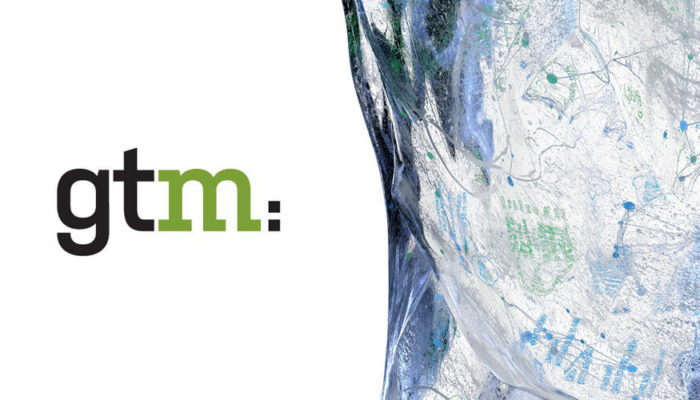 Long-Duration Thermal Storage on Greentech Media
Long-Duration Thermal Storage on Greentech Media
A recent piece on GreetechMedia.com describes how California based third-party logistics provider Dreisbach Enterprises has seen cost savings and performance improvements after installing Viking Cold’s long-duration thermal energy storage (TES) technology. Jason Dreisbach, the owner of Dreisbach Enterprises, explains why his company selected Viking Cold’s technology from a range of available energy-efficiency and demand-response programs. “What Viking Cold has allowed us to do is [to avoid] sub-cooling to the degree that we had, and then ride it out for much longer,” he explains in the report. “Instead of six hours, we ride 12 or 13 hours, six days a week, without turning on our more major compressors.” The result is a 22-month payback period instead of 36, with a range of additional benefits - increased employee comfort, reduced operations and maintenance costs, and improved temperature stability. The Greentech Media piece also discusses the success of TES technology in the San Diego Food Bank. Since installing Viking Cold’s thermal energy storage system, the food bank has been able to shut down compressors overnight and leverage its onsite solar array to power more of the refrigeration during the day while reducing its morning peak to generate energy savings of nearly 40%. The business landscape for long-duration thermal energy storage is shifting, the story reports. Dozens of utilities now offer incentives to support the installation of TES technologies, the TES market is growing, and Viking Cold’s sales teams see increasing numbers of inbound inquiries. As James Bell, President and CEO of Viking Cold Solutions, is quoted as saying, “Down the road, I see this looking like insulation did 100 years ago. Now you wouldn’t even consider a building without insulation. Going forward, why would anyone build a temperature-controlled facility without the efficiency and resiliency of TES?” To read the full story, click here. Or contact us today to learn how our long-duration storage solution will save you energy and money.
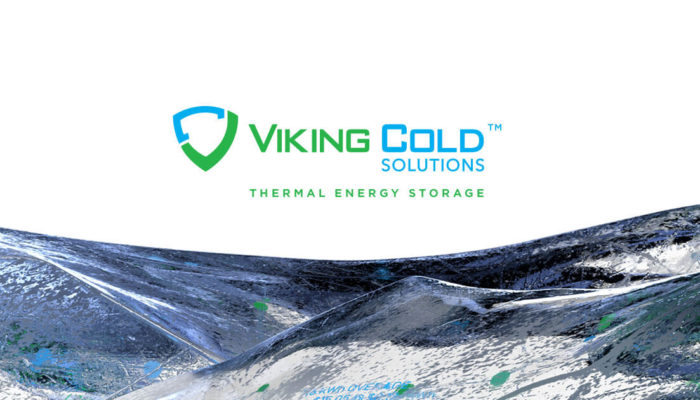 Release: Viking Cold Solutions Named to Food Logistics Top Green Providers List for Fourth Consecutive Year
Release: Viking Cold Solutions Named to Food Logistics Top Green Providers List for Fourth Consecutive Year
HOUSTON, June 23, 2020 (GLOBE NEWSWIRE) -- Food Logistics, the only publication exclusively dedicated to covering the movement of product through the global food supply chain, has named Viking Cold Solutions to the 2020 Top Green Providers list for the fourth consecutive year. Each year, the criteria for earning a spot on the Food Logistics’ annual Top Green Providers list become more stringent for applicants. For example, the editorial staff evaluates a company’s participation in such programs as the EPA’s SmartWay and other recognized sustainability programs; facilities that are LEED-certified, and/or feature solar panels, LED lighting and other energy-saving installations and retrofits that produce measurable reductions in GHG emissions, to name a few. "Our annual Top Green Providers award recognizes companies whose products, services or exemplary leadership enhance sustainability within the food and beverage industry. From technology that reduces a fleet's carbon footprint to software that helps shippers drive energy efficiency to systems and processes that help reduce the carbon and environmental impact of their customers’ supply chains, these top green providers continue to practice the ultimate in sustainability year over year," says Marina Mayer, Editor-in-Chief of Food Logistics. Viking Cold Solutions CEO and President, James Bell, responded to the news that the company received its third cleantech-related award this year, “We are honored to be recognized as a Top Green Provider for the fourth year in a row. Helping our customers, such as Whole Foods, Sysco, and Americold, to improve their sustainability, increase resiliency, and better maintain and protect food along its journey is our mission. Viking Cold is committed to using our technology to work with food companies to create a more sustainable supply chain.” About Food Logistics Food Logistics is published by AC Business Media, a business-to-business media company that provides targeted content and comprehensive, integrated advertising and promotion opportunities for some of the world’s most recognized B2B brands. Its diverse portfolio serves the construction, logistics, supply chain and other industries with print, digital and custom products, events and social media. About Viking Cold Solutions Viking Cold Solutions is the leading long-duration thermal energy storage provider to the energy-intensive frozen/low-temperature cold storage industry. Viking Cold delivers cost-effective and flexible energy management services which protect food and help reduce environmental impact. Its patented Thermal Energy Storage system with phase change material (PCM) and intelligent controls reduces cold storage energy costs up to 35 percent or more, while improving temperature stability and optimizing refrigeration operations. Viking Cold Solutions’ TES systems have been measured, verified, and incentivized by energy utilities across the U.S. and are currently in use around the world providing efficiency to grocery stores, low-temperature warehouses, and restaurants. For additional information, please visit www.vikingcold.com. Sales Contact: Collin Coker, Vice President Sales & Marketing ccoker@vikingcold.com +1.281.687.0919 Press Contact: Damon Vance Marketing Director dvance@vikingcold.com +1.832.899.4771
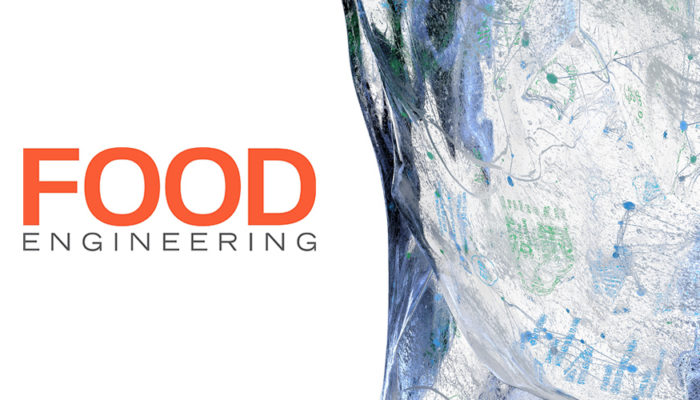 Food Engineering - Viking Cold among most innovative cold storage technologies
Food Engineering - Viking Cold among most innovative cold storage technologies
Viking Cold has been included by Food Engineering in an article looking at leading innovators in the field of food refrigeration. The Thermal Energy Storage (TES) system at the core of Viking Cold’s offering was incorporated within the industry title’s selection of new and exciting methods for temperature-controlled management of refrigerated and frozen foods. Alongside mentions for Messer and Tippmann Innovation, the piece highlighted the growth in demand for TES as increasing numbers of processors and cold storage providers understand the energy-efficiency and cost-saving benefits that TES can bring. Collin Coker, Vice President of Sales and Marketing, underlined the untapped potential for high energy users to “wring out more value with thermal energy storage”, using the system’s intelligence controls to reduce consumption at peak periods or when pricing levels are at a premium. The benefits of TES listed by Food Engineering included that fact that it is environmentally friendly while providing a highly efficient, stable and resilient environment for protecting food products. Coker went on to explain the versatility and low maintenance demands of the system, with the ability to install cells on top of racking in a diverse range of food environments, from smaller processors and walk-in freezers up to larger distribution centers. At a Dreyer’s Ice Cream facility for Nestlé with a two-pallet position racking system and a lower roof, for example, cells could be incorporated into the design of the ceiling. “They (the cells) sit up there. They do their thing. They act as a very sophisticated heat sink. There’s no mechanical interface or requirements,” Coker said. Food Engineering is a monthly magazine and associated website that cover manufacturing technologies in the areas of processing, packaging, food safety, plant operations, material handling and automation. Contact us for more information on how Thermal Energy Storage can bring greater control and cost-savings to your food processing environment.
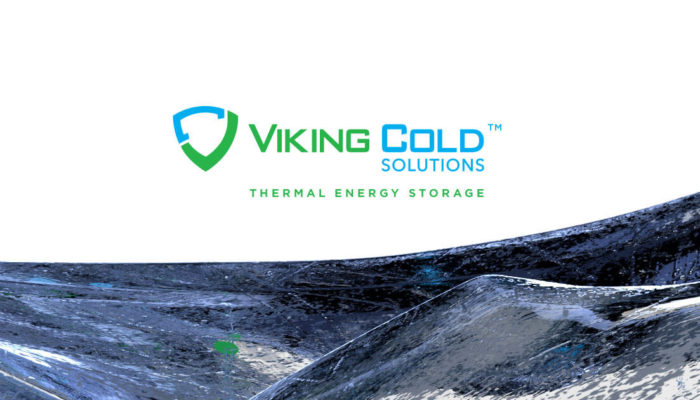 Release: Viking Cold Solutions Closes Out 2019 With Record Revenues, Project Deployments, and New Sales Opportunities
Release: Viking Cold Solutions Closes Out 2019 With Record Revenues, Project Deployments, and New Sales Opportunities
COMPANY BUILDS MOMENTUM AS IT POSITIONS FOR ACCELERATED GROWTH IN 2020 HOUSTON (GLOBE NEWS WIRE) – Viking Cold Solutions, the leading thermal energy storage provider for low-temperature cold storage industries, announced a record-setting year for the company in 2019, highlighted by several notable accomplishments that set the stage for continued strong growth in 2020. Viking Cold’s 2019 revenue was more than six times greater than 2018 revenue, reflecting over 19,000 kWh of energy storage capacity deployed across 14 projects, saving energy and protecting food while also offsetting 13.4 metric tons of carbon emissions each year. The company’s market growth continues to increase as its total sales pipeline grew to more than $40 million during the year.
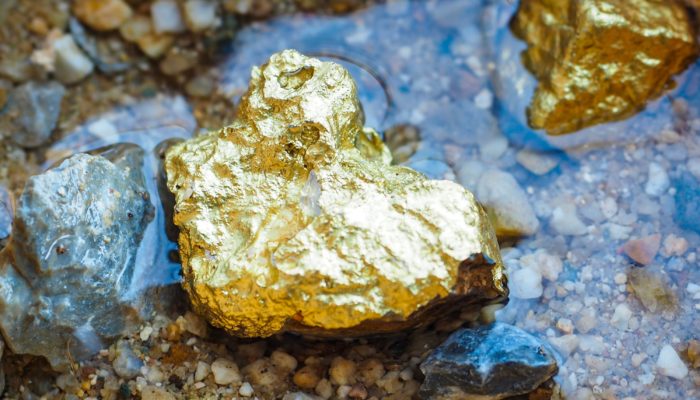 SupplyChainDive.com – Discovering hidden profits to fund talent acquisition
SupplyChainDive.com – Discovering hidden profits to fund talent acquisition
The logistics industry is facing a record shortage of labor to fill warehouse and trucking roles. Are there ways to fund talent acquisition and still maintain profits? Can other hidden savings in operations be unearthed to help find and retain this talent? Read a recent Supply Chain Dive article explaining how TES technology is helping some logistics providers find new funding sources inside their operations.
 Power Magazine Interviews James Bell After Cleanie Award Win
Power Magazine Interviews James Bell After Cleanie Award Win
Power Magazine's Darrell Proctor interviewed CEO James Bell after Viking Cold was awarded the Cleanie Platinum Project of the Year Award. James discusses the award-winning project with Massachusetts utility Eversource as well as other benefits beyond storing energy for time-of-use avoidance. He covers how long-duration Thermal Energy Storage also provides reduced mechanical run-time and wear and tear, sustainability improvements, and resiliency for food during extreme weather events or other power outages.
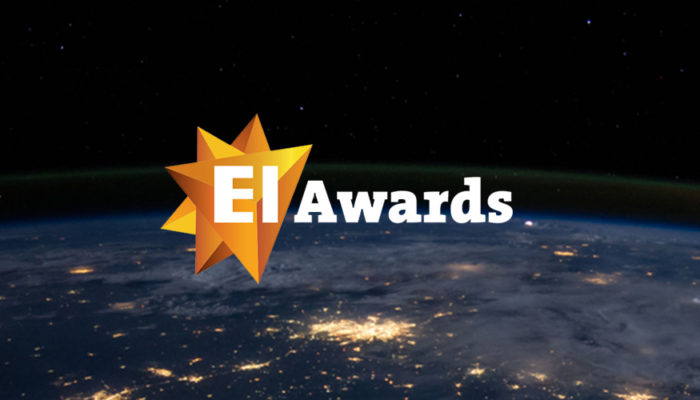 Viking Cold wins in the Innovative Technology category at EI Awards 2019
Viking Cold wins in the Innovative Technology category at EI Awards 2019
Viking Cold is delighted to have been recognised as a winner at the 2019 EI Awards, which showcase excellence across the energy sector. The Viking Cold Thermal Energy Storage (TES) system won in the Innovative Technology category at the prestigious event, which is organised by the Energy Institute. Viking Cold was presented with the award at a gala dinner held at the Sheraton Grand Park Lane Hotel in London’s Mayfair on November 7, hosted by Dr Anne-Marie Imafidon MBE, co-founder of Stemettes. The award acknowledged how TES is helping companies across the world introduce efficiencies and reduce costs in energy-intensive cold chain environments. Winners are decided by an independent panel of senior energy experts, led by chairman of the judges Stephen Burgin FEI, director of Offshore Wind Growth Partnership. The panel said of Viking Cold: “Incentivized by energy utilities across the U.S and in use around the world, the company delivers cost-effective and flexible thermal energy management solutions which preserve food, save energy and help reduce environmental impact.” For two decades, the EI Awards have celebrated “the most outstanding people, products and initiatives from across the global energy sector”. In particular, it recognises those making the industry safer, cleaner and more sustainable, and champions new initiatives that can impact positively on society. To learn more about what Viking Cold’s award-winning Thermal Energy Storage technology can do for your business, please get in touch.
 FoodDive.com – New tools transform frozen food energy costs into revenue streams
FoodDive.com – New tools transform frozen food energy costs into revenue streams
Energy is one of the most expensive ingredients in frozen foods. What changes in the electricity market are changing to favor the industry and why? What technologies can enable new energy strategies to take advantage of these changes to avoid costs and actually generate revenue streams? Find out these answers and more in FoodDive's article that discusses why utilities are incentivizing energy efficiency and energy storage technologies for the frozen food industry.
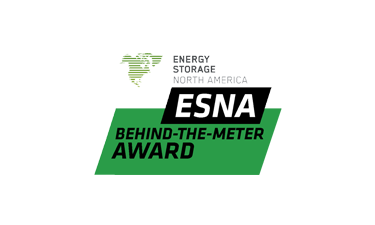 Energy Storage North America Behind-the-Meter Finalist 2019
Energy Storage North America Behind-the-Meter Finalist 2019
The annual Energy Storage North America Innovation Awards recognize excellence and impact in energy storage project development. Our Eversource Demand Management Project that installed 1.3 MW of behind-the-meter storage was a finalist in the Behind-the-Meter category in 2019.
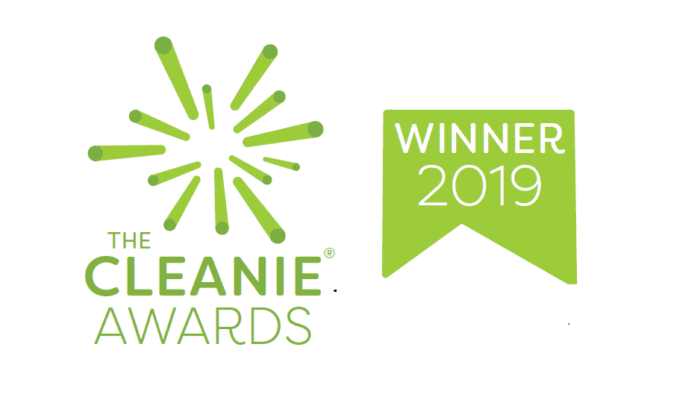 Viking Cold Named Platinum Winner of Cleanie Award's Project of the Year
Viking Cold Named Platinum Winner of Cleanie Award's Project of the Year
Viking Cold is honored to be the Platinum Winner of The Cleanie Awards Project of the Year for our storage and demand management project with Massachusetts utility Eversource. The awards program recognizes innovation excellence, business leadership, and superior programs within the cleantech and renewable energy sectors. The project involved the installation and commissioning of TES systems to store refrigeration energy and facilitate 1.3 MW of energy demand reduction across eight customer facilities, without requiring any additional real estate for the system components. The average size of the cold storage facilities in the program is approximately 50,000 square feet, with the largest being 157,000 square feet. The end-user customers of the program included Sysco (the world’s largest foodservice distributor), Americold (the world’s largest third-party cold storage company), Greater Boston Food Bank, and multiple frozen food processing companies.
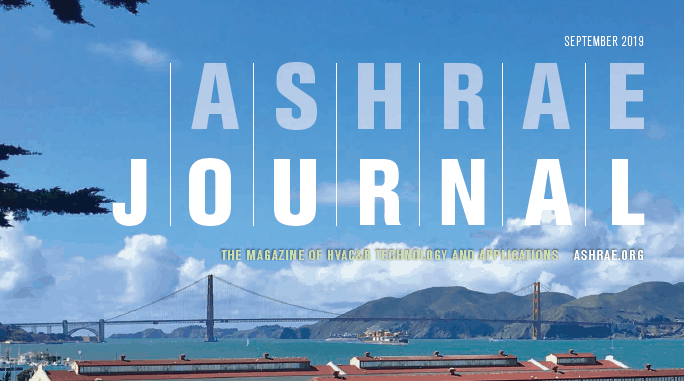 ASHRAE Journal - Achieving Resiliency in The Cold Chain: Strategies To Maintain Food Safety
ASHRAE Journal - Achieving Resiliency in The Cold Chain: Strategies To Maintain Food Safety
ASHRAE Journal, the official publication of the American Society of Heating, Refrigerating and Air-Conditioning Engineers, has published an article outlining the resiliency benefits of thermal energy storage (TES) in commercial and industrial refrigeration applications. Temperature controlled food storage facilities have a number of risks that come from the increasing number of extreme weather-related power outages or from refrigeration system breakdowns. The ASHRAE article also describes additional benefits such as energy efficiency, improved temperature stability, and increased energy management options for facilities with TES.
 Webinar: PLMA Thermal Energy Storage as a Grid Asset
Webinar: PLMA Thermal Energy Storage as a Grid Asset
Viking Cold was awarded the Peak Load Management Alliance's (PLMA) Technology Pioneer Award for utilizing our long-duration Thermal Energy Storage technology as a grid asset. The PLMA invited our VP of Sales & Marketing, Collin Coker, to discuss our TES technology and how we are implementing systems across the country and around the world bringing flexible energy storage plus efficiency benefits to our customers and utilities alike. You can watch the PLMA webinar here.
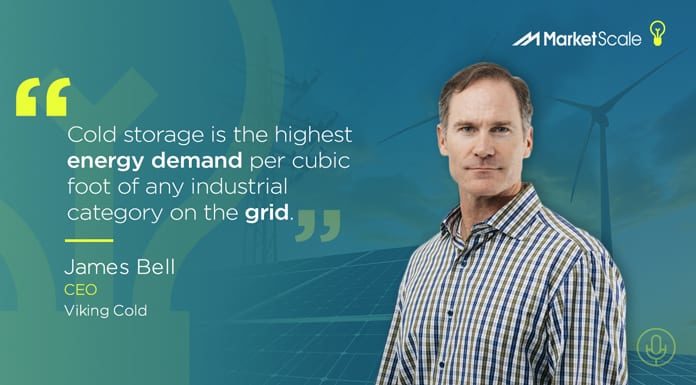 Podcast: Risk Reduction to the Cold Chain - MarketScale Energy
Podcast: Risk Reduction to the Cold Chain - MarketScale Energy
On the MarketScale Energy podcast, President & CEO James Bell explores risk reduction in the cold chain. Dealing with frozen food has a lot of inherent risks: which include the enormous and continuous energy required to safely store frozen food, the variable and continually increasing energy prices, potential loss of power due to increasingly more common natural disasters, refrigeration system mechanical failures, and ultimately liability for lost or damaged product. Thermal Energy Storage (TES) can address each of these issues to add resiliency and efficiency, as well as reduce risks in the storage of frozen food applications.
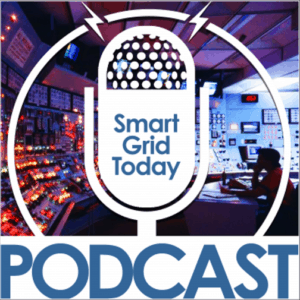 Podcast: Smart Grid Today Discussed Long-Duration Energy Storage
Podcast: Smart Grid Today Discussed Long-Duration Energy Storage
Sam Spencer of Smart Grid Today interviews Viking Cold Solutions' CEO James Bell to discuss our Thermal Energy Storage technology and how this long-duration storage medium can improve grid resiliency by storing and discharging for up to 13 hours, adding efficiency to commercial and industrial refrigeration systems, and providing thermal resiliency for our customers in temperature-controlled environments during mechanical breakdowns or power outages due to natural disasters or grid outages.
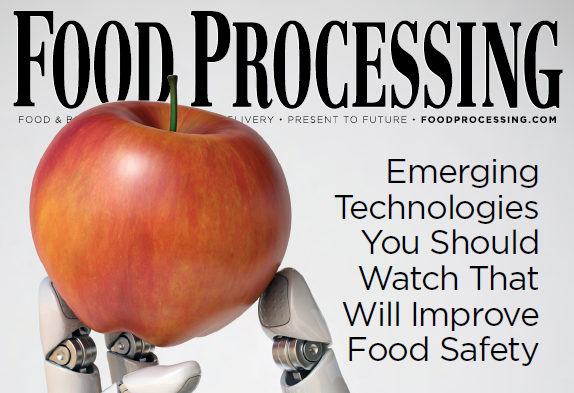 Food Processing – Emerging Food Safety Technologies
Food Processing – Emerging Food Safety Technologies
Food Processing Magazine has published an eHandbook outlining new technologies that food processors can use to improve food safety and food quality in their operations. A number of new food processing technologies and their benefits are described including the food quality and energy-saving benefits of thermal energy storage.
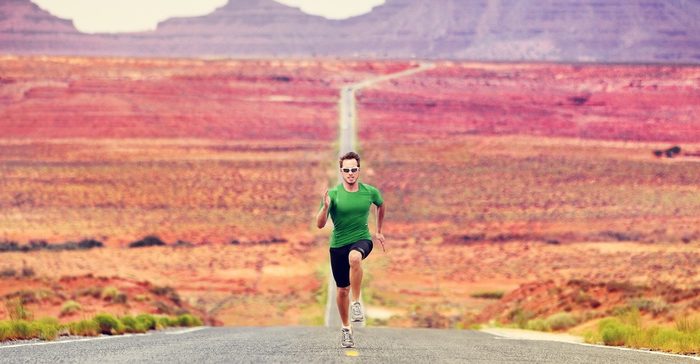 UtilityDive.com – Long-duration energy storage: The future of grid stability
UtilityDive.com – Long-duration energy storage: The future of grid stability
Our growing need for more power, shifting patterns of demand, and the rapid expansion of variable renewable generation is presenting challenges to the grid. Energy storage is certainly part of the solution, but is the market or regulation driving the development of storage? How is long duration storage being advanced to better address these needs? Are there long duration energy storage solutions today that are economical to broadly deploy? Get some answers in this Utility Dive article that discusses the drivers and economics of long duration energy storage.
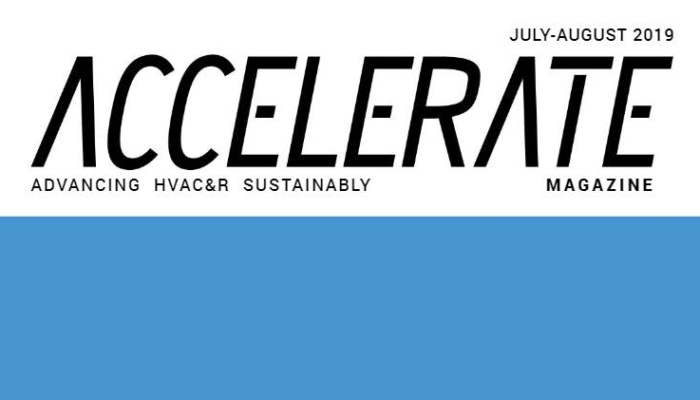 Accelerate Magazine - Thermal Batteries Cut Cold Storage Energy Costs
Accelerate Magazine - Thermal Batteries Cut Cold Storage Energy Costs
Accelerate Magazine, a publication focused on advancing HVAC&R sustainability, has featured Viking Cold's Thermal Energy Storage (TES) technology. The article covers the sustainability benefits of TES, a recent utility-backed demand management project, and a customer installation case study.
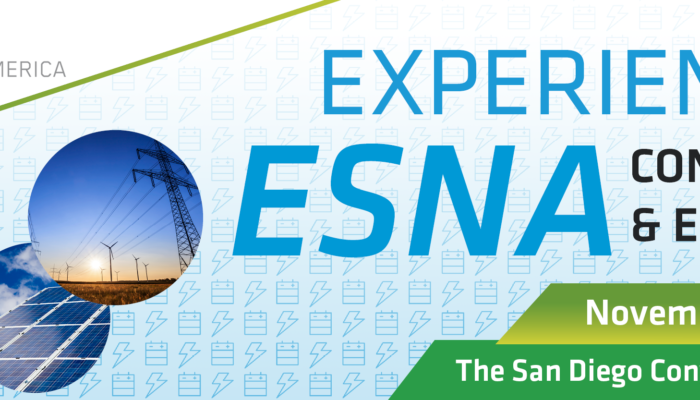 Viking Cold & Eversource Project Selected as Finalist for 2019 ESNA Innovation Award
Viking Cold & Eversource Project Selected as Finalist for 2019 ESNA Innovation Award
Viking Cold Solutions is pleased to have been named a finalist for the 2019 Energy Storage North America Innovation Awards! The ESNA Innovation Awards recognize excellence and impact in energy storage project development. Viking Cold has been recognized for its deployment of eight Thermal Energy Storage (TES) systems as part of a utility-backed demand management program in Massachusetts. These behind-the-meter TES systems store and facilitate the management of approximately 1.3 MW of energy onsite. This project is noteworthy because Viking Cold’s solution leverages the facilities’ existing refrigeration systems to store cold energy and discharge it over long periods of time (up to 13 hours) when it is most beneficial for the grid and the facility operator, thus lowering energy costs, increasing resiliency, and helping the environment. The Greater Boston Food Bank, the program’s first installation, has already seen a 75% reduction in energy consumption and a 76% reduction in demand during its four-hour peak demand period. “As the largest hunger relief organization in New England, our goal is to provide healthy meals to those in need across Eastern Massachusetts,” said The Greater Boston Food Bank SVP of Supply Chain and Food Acquisition, Cheryl Schondek. “We strive for cost-saving operational efficiencies, and our partnership with Eversource and the installation of the Viking Cold TES system better enables us to achieve this goal. We appreciate their commitment to our mission to end hunger here.” You can read more about the TES project online here. Please help Viking Cold win this year’s ESNA Innovation Award – you can vote with the form online here. Deadline is September 12, 2019.
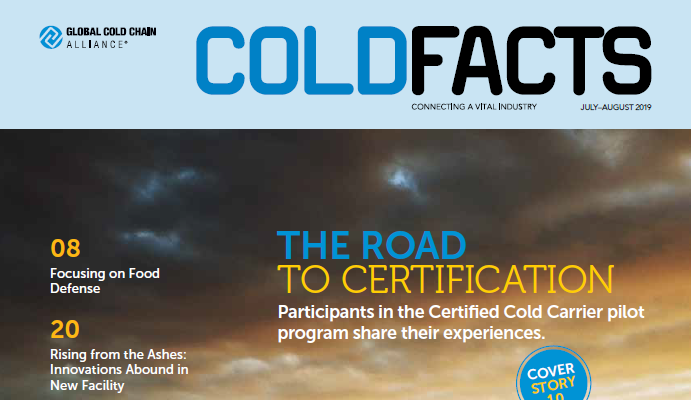 GCCA Cold Facts – A Savvy Proposal for Energy Efficiency
GCCA Cold Facts – A Savvy Proposal for Energy Efficiency
Cold Facts, the official publication of the Global Cold Chain Alliance (GCCA), published an article covering new technologies in cold storage construction that add efficiency to cold storage building projects. The article describes a presentation at the 38th Controlled Environment Building Association (CEBA) Conference delivered by Viking Cold Solutions, Cold Box Builders, and Evapco. Representatives from all three companies discuss new efficiency technologies and trends for the cold storage industry, particularly in ammonia refrigerated facilities.
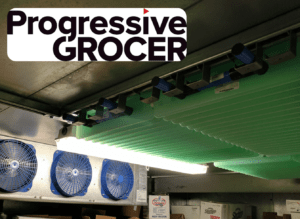 Progressive Grocer: Sustainable Supermarket Refrigeration Systems Becoming the Norm
Progressive Grocer: Sustainable Supermarket Refrigeration Systems Becoming the Norm
Progressive Grocer has published an article outlining the not-to-distant future of sustainable grocery store refrigeration. Numerous technologies from companies like Viking Cold, Emerson, Honeywell, and CoolSys are referenced as the key to what is rapidly becoming the new normal in grocery stores: improved refrigeration sustainability.
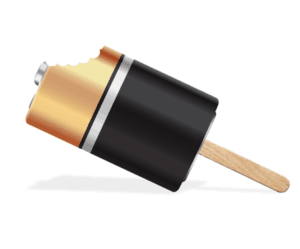 FoodDive.com – Using frozen food as a battery to lower energy costs?
FoodDive.com – Using frozen food as a battery to lower energy costs?
Those in the cold storage biz know that more thermal mass inside a freezer allows that freezer to float, or flywheel, longer without active refrigeration. But is food the right thermal mass to use to cut energy costs? Can flywheeling periods be even longer? Can more energy be saved? Can it be done without using food as the thermal battery? Read the full article published on FoodDive.com to learn how thermal energy storage improves the economic benefits of flywheeling without requiring additional energy or risking the quality of the food we put on our tables every day.
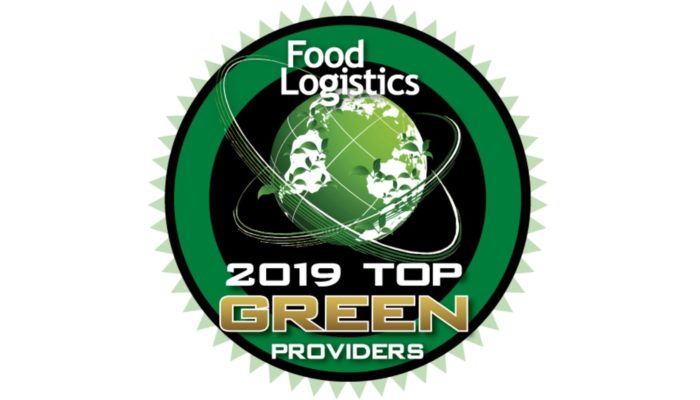 Viking Cold Named Food Logistics Top Green Provider for 3rd Year in a Row
Viking Cold Named Food Logistics Top Green Provider for 3rd Year in a Row
Viking Cold is proud to have been selected as one of Food Logistics’ annual Top Green Providers for the third year in a row. We love that we are again being recognized for improving sustainability, adding resiliency, and better protecting food throughout the global cold chain. This year's list showcases companies that have found new ways to promote sustainability throughout their operations and for their customers. Winners consists of 3PLs, technology companies, transportation providers, cold storage providers and many more that have upped their game to become leaders in the sustainable global food supply chain.
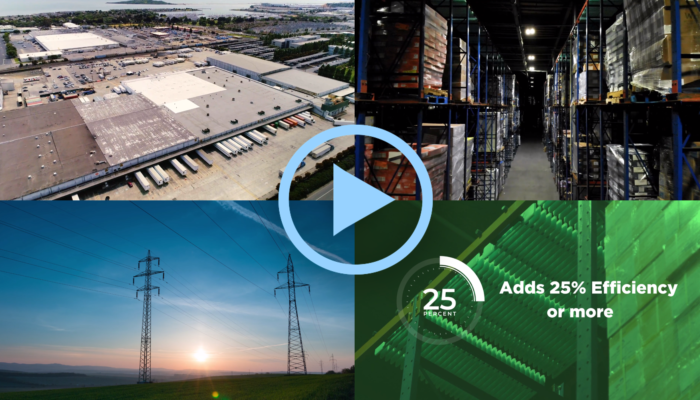 Improved Sustainability & More Resiliency for the Power Grid and the Global Food Supply
Improved Sustainability & More Resiliency for the Power Grid and the Global Food Supply
In order to improve the health of our planet, businesses must act to reduce their energy usage and carbon emissions. Luckily, the foodservice, cold storage, and energy industries have an incredible solution that adds sustainability and resiliency while better protecting the food: Thermal Energy Storage. Many facilities in these industries run refrigeration equipment nearly non-stop, which accounts for over $40 billion in energy costs per year. Energy Efficient, Flexible, Resilient, and Sustainable Viking Cold is a thermal energy management company that makes cold storage facilities more energy efficient, flexible and sustainable with our thermal energy storage (TES) technology.
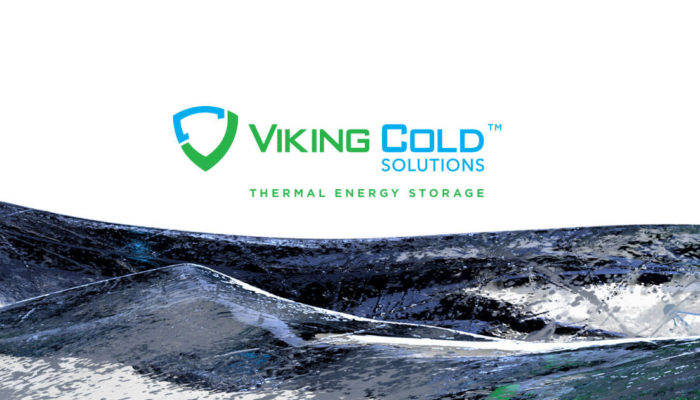 Release: Viking Cold Solutions Installs 1.3 MW of Thermal Energy Storage in Industrial Cold Storage Facilities as Part of a Massachusetts Utility Demand Management Program
Release: Viking Cold Solutions Installs 1.3 MW of Thermal Energy Storage in Industrial Cold Storage Facilities as Part of a Massachusetts Utility Demand Management Program
ENERGY-SAVING THERMAL STORAGE SYSTEMS SUCCESSFULLY DEPLOYED IN WAREHOUSES OWNED BY LOGISTICS COMPANIES, FOODSERVICE DISTRIBUTORS, FOOD PROCESSORS, AND NON-PROFITS HOUSTON and BOSTON (GLOBE NEWS WIRE) – Viking Cold Solutions, the leading thermal energy storage provider for low-temperature cold storage industries, has completed the installation of eight Thermal Energy Storage (TES) systems as part of a utility-backed demand management program in Massachusetts. These eight behind-the-meter TES systems store and facilitate management of approximately 1.3 megawatts (MW) of energy onsite, and do not require any additional real estate for the system components. The average size of the cold storage facilities in the program is approximately 50,000 square feet, with the largest being 157,000 square feet. Installation time averaged 127 days from agreement to commissioning and removal of demand from the grid. The Greater Boston Food Bank was the first TES installation of the demand management program, which also includes industrial facilities owned by the world’s largest third-party cold storage company, the world’s largest foodservice distributor, and numerous frozen food processing companies. Energy is the second highest direct operating cost for cold storage operators, who must run their refrigeration systems nearly 24 hours per day. Additionally, these facilities have the highest energy demand per cubic foot of any industrial category on the grid. Viking Cold’s TES systems not only store enough energy to cycle off refrigeration for up to 13 hours per day to avoid time-of-use and demand charges, they also improve the existing refrigeration systems’ efficiency and reduce consumption by more than 25 percent.
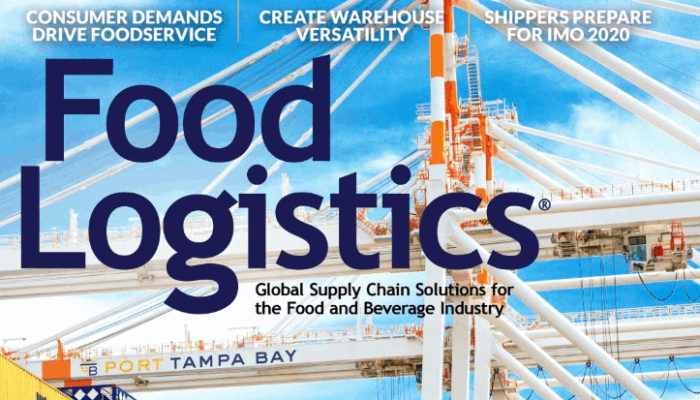 Food Logistics – Should Frozen Food Be a Battery?
Food Logistics – Should Frozen Food Be a Battery?
The May 2019 edition of Food Logistics includes an article outlining the risks of using frozen food as a battery for flywheeling. The article also discusses using Viking Cold's Thermal Energy Storage systems as an alternative temperature capacitor to achieve even better flywheeling results, reduce the risks of flywheeling, and provide additional benefits. Utility-sponsored programs that can subsidize or entirely cover the system and installation costs are also discussed.
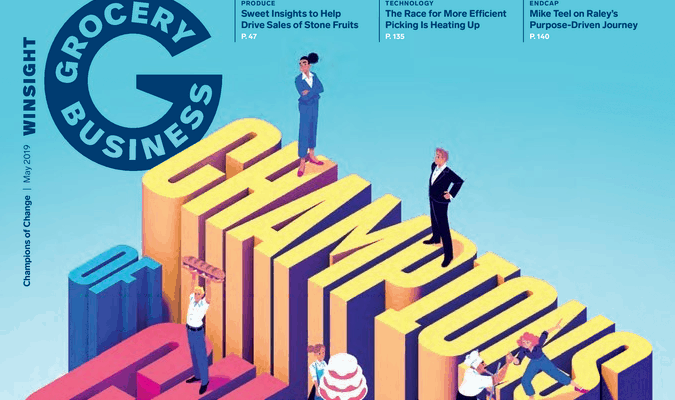 Grocery Business - Q&A with Viking Cold's VP of Sales & Marketing, Collin Coker
Grocery Business - Q&A with Viking Cold's VP of Sales & Marketing, Collin Coker
Grocery Business recently published an interview with Viking Cold's VP of Sales & Marketing, Collin Coker as part of their 2019 Equipment & Design Annual Report. The Annual Report is a comprehensive guide to help retailers create efficient, productive, tech-enabled stores. Coker outlines how Thermal Energy Storage adds efficiency to refrigeration, how our system's thermal mass is different from the thermal mass of the food, and other benefits beyond saving energy.
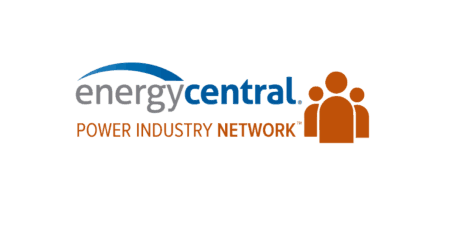 Energy Central - PLMA Technology Pioneer Award Interview
Energy Central - PLMA Technology Pioneer Award Interview
Energy Analyst, Matt Chester of Energy Central, an online power industry publication, interviewed Viking Cold's Marketing Director, Damon Vance, about our recent PLMA Technology Pioneer Award. Here is the full interview: Using Thermal Energy Storage as a Grid Asset: Interview with Viking Cold Solutions, Winner of PLMA Technology Pioneer Award.
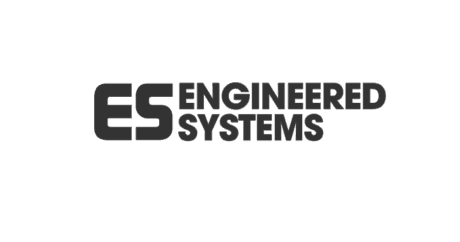 Engineered Systems - The Blueprint: Q&A interview with HVACR engineering’s leading voices
Engineered Systems - The Blueprint: Q&A interview with HVACR engineering’s leading voices
Engineered System's Editor-in-Chief, Herb Woerpel, interviewed Viking Cold's VP of Sales & Marketing, Collin Coker, to discuss the state of the thermal energy storage market, Viking Cold Solutions’ role in that market, and more.
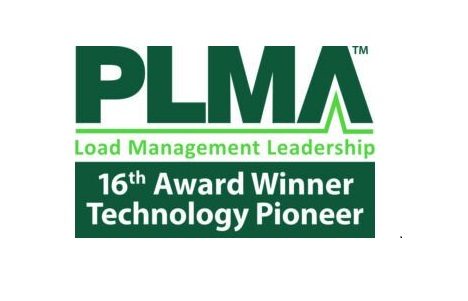 PLMA recognized Viking Cold as a 2019 Technology Pioneer
PLMA recognized Viking Cold as a 2019 Technology Pioneer
Peak Load Management Alliance has announced its eight recipients of the 16th annual PLMA awards. Viking Cold has been named a Technology Pioneer being recognized as an industry leader who created innovative ideas, methods, programs, and technologies to meet peak load needs and support successful grid integration of distributed energy resources during calendar year 2018. Click here to learn more about PLMA awards.
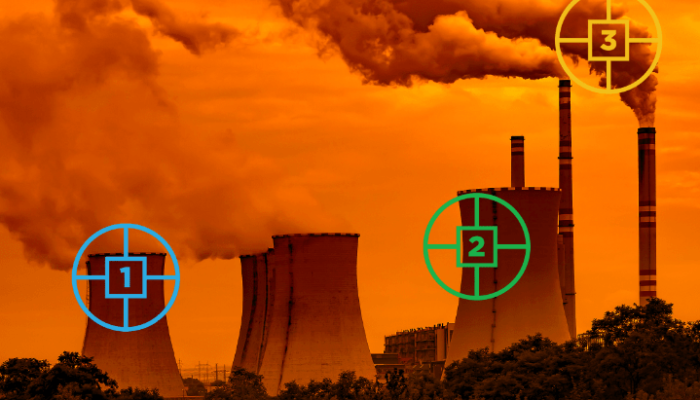 Grocery Business – Are You Meeting Scope 1, 2, and 3 Emissions Goals Like Your Competitors?
Grocery Business – Are You Meeting Scope 1, 2, and 3 Emissions Goals Like Your Competitors?
An article on the Grocery Business website describes the importance of understanding multiple categories of sustainability standards and why each Scope 1, Scope 2, and Scope 3 emissions goals are important for grocers to remain competitive. Learn more about the expectations of customers, competitors, investors, and even CPG brands for grocers to improve their sustainability.
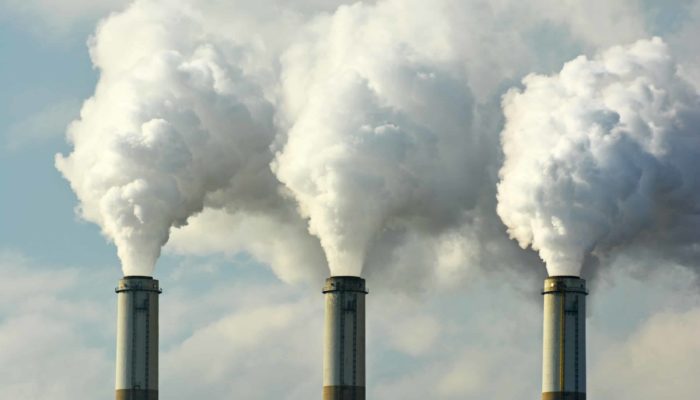 SupplyChainDive.com - Why low-carbon warehouses are even more important than you thought
SupplyChainDive.com - Why low-carbon warehouses are even more important than you thought
Do you know what Scope 3 emissions are? If you own or manage a warehouse then you should understand what these customer requirements are and how to meet them to keep your current customers and attract new customers. SupplyChianDive.com published an article about the increasing demand from CPG, retailers, and end consumers for distribution partners to become more sustainable and how warehouse operators can meet Scope 3 emissions standards.
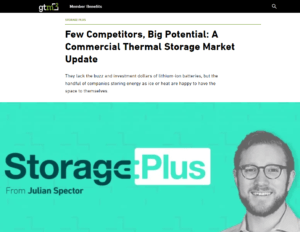 GreenTech Media recognizes the successes and enormous opportunities for thermal energy storage
GreenTech Media recognizes the successes and enormous opportunities for thermal energy storage
GreenTech Media's Julian Spector has written an article covering the huge potential of Thermal Energy Storage (TES) and the few companies that have developed TES technologies. A number of successful projects are highlighted that demonstrate the opportunity for TES to benefit cold storage and utility and power providers right now and into the future. Viking Cold's Vice President of Sales & Marketing, Collin Coker, contributes thoughts about the market adoption of TES and the continued growth of Viking Cold Solutions.
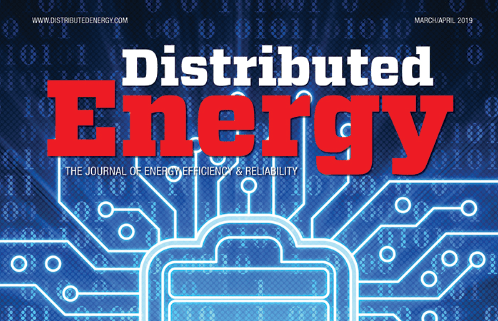 Distributed Energy Magazine - Thermal Energy Storage, A Cooler Energy Storage Technology
Distributed Energy Magazine - Thermal Energy Storage, A Cooler Energy Storage Technology
Energy publication Distributed Energy has published an article authored by our CEO, James Bell, describing how Thermal Energy Storage provides backup resiliency to cold storage warehouses, adds efficiency to commercial and industrial refrigeration applications, and provides the grid a storage technology that can now manage the high energy demand of the cold storage industry.
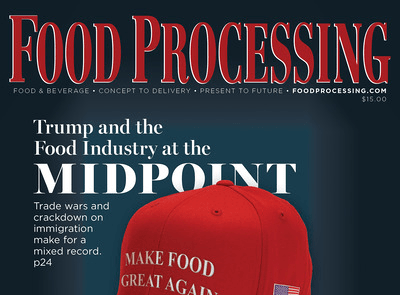 Food Processing – How Refrigeration Systems Can Be Enhanced for Food and Beverage Manufacturers
Food Processing – How Refrigeration Systems Can Be Enhanced for Food and Beverage Manufacturers
Food and beverage manufacturing magazine Food Processing has published an article outlining innovations that improve refrigeration systems in food processing and food storage. Viking Cold's thermal energy storage system is highlighted as one of the technologies providing efficiency and improving refrigeration operations.
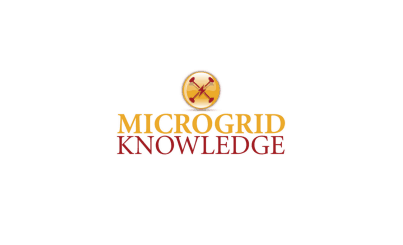 Microgrid Knowledge highlights growing Thermal Energy Storage applications
Microgrid Knowledge highlights growing Thermal Energy Storage applications
This article on MicrogridKnowledge.com highlights the growing application of Thermal Energy Storage (TES) in refrigeration applications to lower the energy demand and the energy consumption of commercial and industrial refrigerated facilities. A number of Viking Cold projects are referenced including a California Energy Commission program inside a Whole Foods store with the goal of a Net Zero grocery store, pairing TES with onsite solar generation, and a demand management program with Massachusettes' largest utility - Eversource.
 Grocery Business - Longer and Safer Flywheeling in Freezers
Grocery Business - Longer and Safer Flywheeling in Freezers
Do you know what flywheeling is? Do you practice flywheeling in your freezers? Do you know the risks associated with flywheeling? Are you safely maximizing your savings from flywheeling? Get all those questions answered and more in the Grocery Business article highlighting how thermal energy storage provides safer and longer periods of flywheeling in freezers.
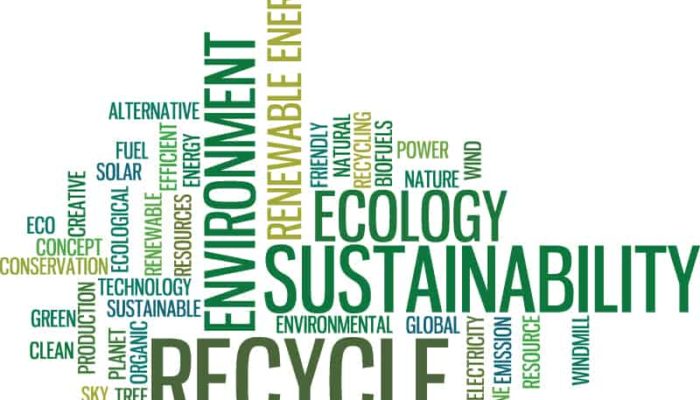 Grocery Business - How Grocers Can Boost Sustainability, Store Traffic, and Profits
Grocery Business - How Grocers Can Boost Sustainability, Store Traffic, and Profits
Consumers are making buying decisions based on the sustainability of the brands they buy and the retailers that sell them. Not only are customers driving grocers to focus more on sustainability, but being sustainable can also drive profits. Grocery Business posted an article describing how TES helps grocers reach sustainability goals faster and improve the bottom line.
 Release: Greater Boston Food Bank, Eversource, and Viking Cold Solutions Collaborate to Cut Energy Consumption at Yawkey Distribution Center
Release: Greater Boston Food Bank, Eversource, and Viking Cold Solutions Collaborate to Cut Energy Consumption at Yawkey Distribution Center
Installation of thermal energy storage system allows the Food Bank to provide 10,500 more meals every year BOSTON--(BUSINESS WIRE)--The Greater Boston Food Bank is starting the year off with a 75 percent reduction in energy use during targeted peak hours and substantial cost savings thanks to a partnership with Eversource and the installation of a new Viking Cold Solutions thermal energy storage (TES) system. The TES system for the Food Bank’s refrigeration units was installed at its 117,000 square-foot, high-efficiency Yawkey Distribution Center in South Boston. “Thermal energy storage systems serve as a storage medium for a building's refrigeration system and is a cost-effective solution to store and dispatch the large amount of energy required by refrigeration equipment in cold storage facilities,” said Eversource Vice President of Energy Efficiency Tilak Subrahmanian. “We recently launched a program designed to install new technologies, like thermal energy storage, to lower energy use and demand during peak energy usage hours. Our partnership with the Greater Boston Food Bank will help them better manage their energy and deliver a cutting-edge solution that will benefit the organization overall and support its critical mission.” The new TES system, developed by Viking Cold Solutions, has reduced electrical consumption at the Greater Boston Food Bank’s energy-intensive, cold storage facility while improving temperature stability inside their freezer. Cold storage facilities, such as frozen food warehouses and grocery store walk-in freezers, have the highest energy demand per cubic foot of any category. During peak energy use periods, they can account for up to 70 percent of the total electric bill for commercial and industrial organizations.
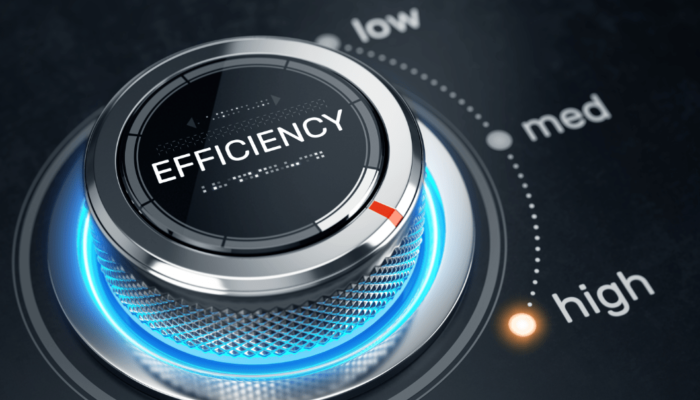 Storage + Efficiency for C&I Demand Management on UtilityDive.com
Storage + Efficiency for C&I Demand Management on UtilityDive.com
Power providers are looking for new distributed energy resources to help with demand management across the grid. Some offer flexibility and some offer efficiency. This article on Utility Dive explains how Viking Cold's TES provides both energy storage for flexibility and added efficiency to C&I refrigeration applications.
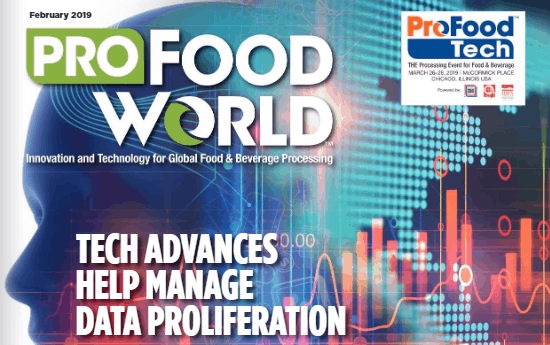 ProFood World - Transform your operation from energy consumer to energy producer
ProFood World - Transform your operation from energy consumer to energy producer
ProFood World, a leading food and beverage manufacturing publication, recognized Viking Cold's Thermal Energy Storage technology as one of the technologies empowering food producers to lower energy costs and to help reach corporate responsibility and sustainability goals.
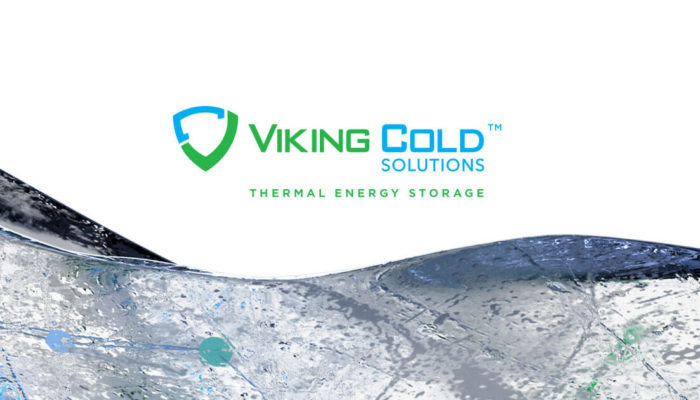 Release: Viking Cold Solutions and Constellation to Offer Efficiency Made Easy Program to Commercial & Industrial Refrigeration Customers
Release: Viking Cold Solutions and Constellation to Offer Efficiency Made Easy Program to Commercial & Industrial Refrigeration Customers
HOUSTON (Business Wire) - Viking Cold Solutions, the leading Thermal Energy Storage (TES) provider, will work with Constellation, an Exelon (NYSE:EXC) company and a leading competitive energy provider, to offer its commercial and industrial refrigeration customers access to Constellation’s unique Efficiency Made Easy® (EME) program. The EME program helps businesses implement optimal energy conservation measures, such as Viking Cold’s TES systems, with no upfront capital expenditure. The cost for the upgrades is included in the monthly charges that appear on their Constellation power and gas supply bills.
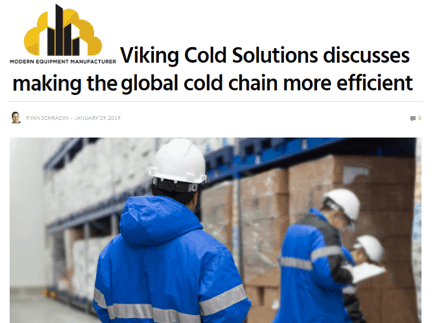 Modern Equipment Manufacturer - Making the global cold chain more efficient
Modern Equipment Manufacturer - Making the global cold chain more efficient
Modern Equipment Manufacturer covers the news, trends, and advancements being made in the manufacturing and cloud-enabling of equipment. They interviewed Viking Cold's Vice President of Sales & Marketing, Collin Coker, after his presentation at the ASHRAE Winter Conference in Atlanta. Read the article about how Thermal Energy Storage is improving the cold chain by increasing refrigeration efficiency and providing valuable insight and data to food producers, foodservice distributors, and cold storage companies around the world.
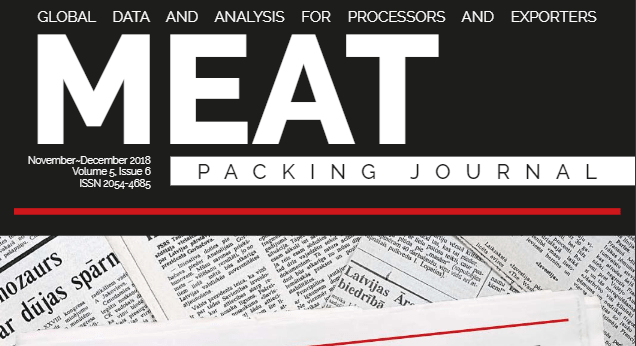 Meat Packing Journal - Storing Cold Saves Money
Meat Packing Journal - Storing Cold Saves Money
Meat Packing Journal published an article presenting the improvements TES brings to low-temperature cold storage facilities. Part of that article was an interview with Viking Cold's Vice President of Sales & Marketing, Collin Coker, to discuss how TES improves efficiency and how Thermal Energy Storage as a Service (TESaaS) is helping cold storage operators and grocers add TES with no upfront investment and guaranteed savings every month.
 GCCA Cold Facts - Thermal Energy Storage Reaps Financial Benefits
GCCA Cold Facts - Thermal Energy Storage Reaps Financial Benefits
Cold Facts, the official publication of the Global Cold Chain Alliance (GCCA), has published an article highlighting one of our case studies and the resulting benefits of Thermal Energy Storage (TES) in commercial frozen food warehouses. Findings include 35% added efficiency and the flexibility to shed refrigeration load for 13 hours each day while improving temperature stability inside the freezer. You can view the full Cold Facts article with charts and graphs HERE and read the full case study HERE.
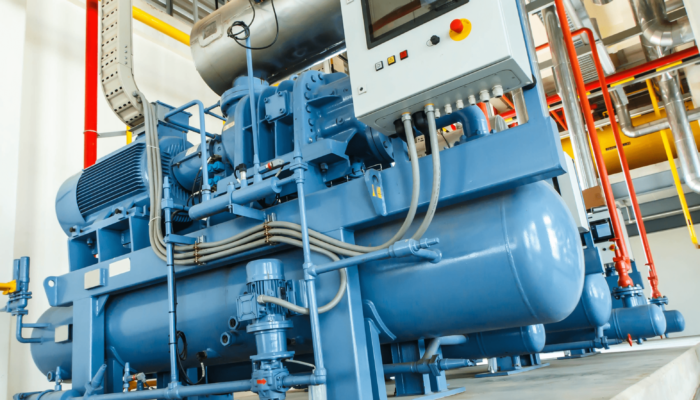 C&I Case Study: 43% Reduced Consumption for 13 Hours on UtilityDive.com
C&I Case Study: 43% Reduced Consumption for 13 Hours on UtilityDive.com
The commercial and industrial application of our thermal energy storage (TES) technology has shown tremendous results in an ammonia-refrigerated frozen food warehouse in California. By storing energy in the form of cold and delivering discharge times up to 13 hours per day TES provides utilities a behind-the-meter distributed energy resource (DER) to help manage the inflexible and difficult demand profile of the cold storage industry. Utility Dive has posted an article outlining the temperature, peak demand, and consumption benefits of TES in cold storage facilities outlined in our case study.
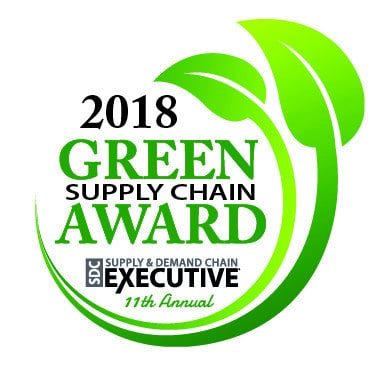 Supply & Demand Chain Executive Green Supply Chain Award for Viking Cold
Supply & Demand Chain Executive Green Supply Chain Award for Viking Cold
Supply & Demand Chain Executive annual Green Supply Chain Award winners for 2018 have been announced and Viking Cold is proud to be one of this year's recipients. The award recognizes providers of supply chain solutions and services assisting their customers in achieving measurable sustainability goals. You can view the full list of 2018 Green Supply Chain Award winners here.
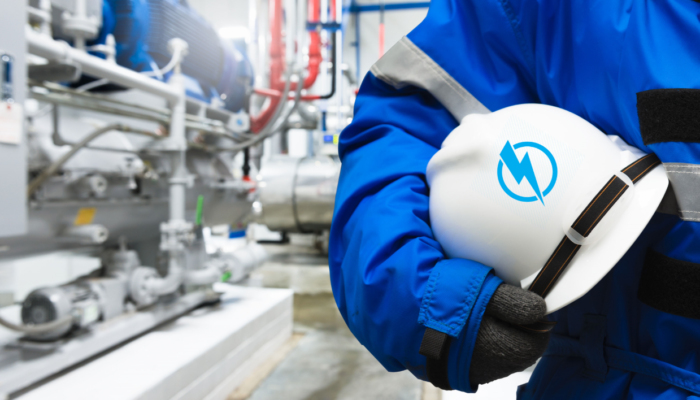 Grocery Business – 3 Energy Strategies to Increase DC Profits
Grocery Business – 3 Energy Strategies to Increase DC Profits
To cut energy costs in your distribution center, have you already added LED lighting? And variable speed motors? And automated doors? If you're looking for a few more easy strategies, and a single flexible technology, to reduce refrigeration energy consumption read this article posted on Grocery Business.
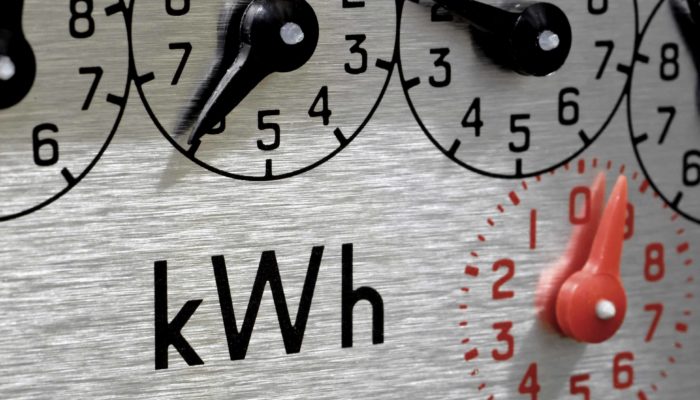 5 Ways to Reduce Energy Costs in Refrigerated Warehouses on SupplyChainDive.com
5 Ways to Reduce Energy Costs in Refrigerated Warehouses on SupplyChainDive.com
The fastest ways to lower energy costs are adding efficiencies to the facility and adding flexibility to how and when to purchase the power that drives refrigeration equipment. This is similar to achieving better fuel efficiency for automobiles on highways versus city streets and throwing in some downhills to further reduce fuel costs. Read more about five specific strategies that lower refrigeration energy costs in frozen food warehouses on Supply Chain Dive.
 Release: Mexican Cold Storage Operator Reduces Energy Consumption 20% Using Thermal Energy Storage
Release: Mexican Cold Storage Operator Reduces Energy Consumption 20% Using Thermal Energy Storage
Viking Cold’s first installation at Red de Frios in Monterrey, Mexico is also the first energy management system of its kind in the Mexican cold storage industry. MONTERREY, MEXICO and HOUSTON, TX (Business Wire) – Viking Cold Solutions, the leading Thermal Energy Storage (TES) provider for the low-temperature cold storage industry, announced its partnership with Red de Frios to manage energy usage in one of its 2,500 square foot frozen food warehouses at Almacén Ruíz Cortines in Monterrey, Mexico. Viking Cold’s patented TES system reduces overall electricity consumption and shifts energy usage to less expensive periods of the day. This project is the first of its kind in Mexico, the second largest economy in Latin America, and marks the first installation of Viking Cold Solutions’ technology in Latin America outside of the Caribbean. Viking Cold’s system was configured to operate specifically for Red de Frios’ utility rate structure and facility requirements. During the months of July, August, and September, some of the warmest months of the year, Red de Frios has seen a 20% reduction in energy consumption due to the TES system’s added efficiency. Additionally, during daily periods of high energy costs when refrigeration equipment is cycled off, Red de Frios has seen a slower increase in temperatures and greater temperature stability.
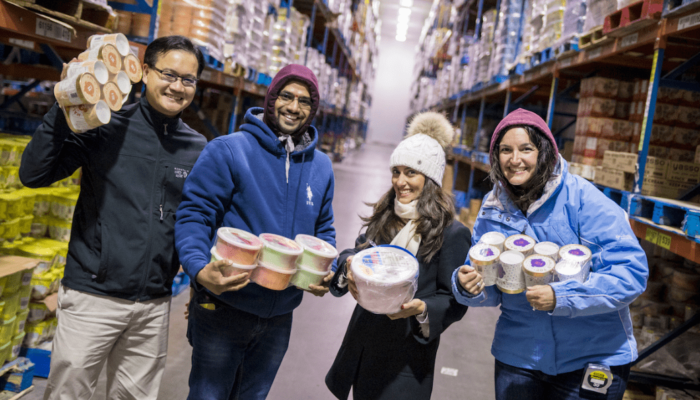 Arizona State University: SUB-ZERO SUSTAINABILITY - Energy-Saving Solution for Frozen Food Storage Could Mean Big Cost Savings
Arizona State University: SUB-ZERO SUSTAINABILITY - Energy-Saving Solution for Frozen Food Storage Could Mean Big Cost Savings
Arizona State University has published an article describing a research experiment of Viking Cold's Thermal Energy Storage system in a large ice cream storage warehouse in Arizona. The experiment is a partnership between the utility provider Salt River Project, grocery retailer Basha's Family of Stores, Arizona State University’s Ira A. Fulton Schools of Engineering, and Viking Cold Solutions.
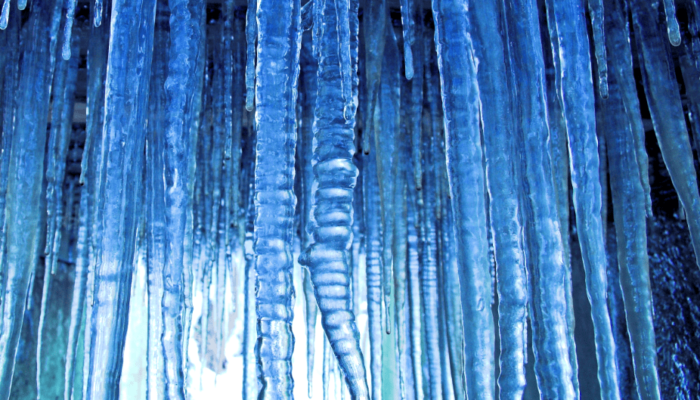 Grocery Business: Defrosting the Top Risks in Cold Storage
Grocery Business: Defrosting the Top Risks in Cold Storage
Producing, shipping, storing, and selling frozen foods comes with risks at every step of the cold chain. These risks include temperature fluctuations (which cause loss of product quality and shelf life) as well as potential problems with power and equipment resiliency, and the loss of profits. Grocery Business has published an article describing how Viking Cold's Thermal Energy Storage technology can help address all these risks.
 Potato Business Exclusive: Stable Temperature Is Essential in a Cool Storage
Potato Business Exclusive: Stable Temperature Is Essential in a Cool Storage
International publication Potato Business has published an article featuring Viking Cold's Thermal Energy Storage technology. All frozen foods, especially those with high water content like potatoes, are susceptible to shelf life and quality loss due to temperature variations. Read more about how TES helps cold storage facilities protect their product.
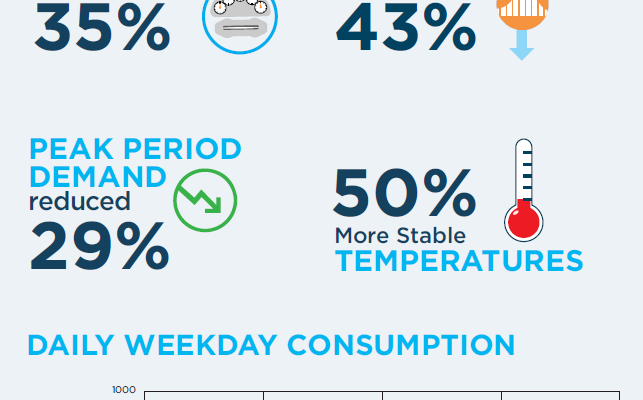 Case Study: Warehouse Drops Consumption 43% and Peak Demand 29% for 13 Hours
Case Study: Warehouse Drops Consumption 43% and Peak Demand 29% for 13 Hours
Viking Cold Solutions, Inc. conducted a Measurement and Verification (M&V) study of its thermal energy storage (TES) technology installed in Dreisbach Enterprises' 93,000 square foot low-temperature cold storage warehouse in Richmond, CA. The objectives of the M&V study were to determine the effectiveness of TES on energy efficiency and temperature stability with an ammonia-based refrigeration system. The utility rate plan for this facility includes increased pricing for kWh consumption and peak kW demand during a 13-hour peak period (8:30 am to 9:30 pm) Monday through Friday that accounts for nearly 50% of the annual energy costs at the Dreisbach facility.
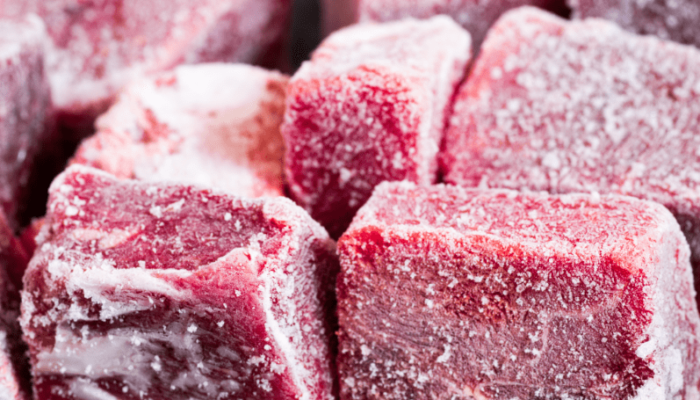 Frozen Food Risk: The Unfrozen Water Inside on FoodDive.com
Frozen Food Risk: The Unfrozen Water Inside on FoodDive.com
Did you know that almost 10% of the water in frozen beef is still liquid even at -40 degrees Celsius? Food Dive's article discusses how that water content could be reducing frozen food's color, texture, taste, and shelf life and how TES technology can help reduce the risk of frozen food temperature fluctuations in walk-in freezers and frozen food warehouses.
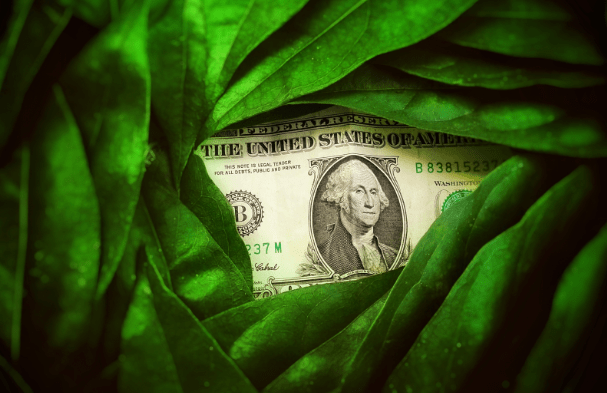 All the Green, None of the Cost (Progressive Grocer Guest Blog)
All the Green, None of the Cost (Progressive Grocer Guest Blog)
Sustainability is a growing priority in the grocery and cold-storage worlds, and new technology implementations require investment. Progressive Grocer has posted a blog article that outlines how grocers and operators can add thermal energy storage with no upfront investment and be cash-flow positive from day one. They can now expand their green initiatives, lower energy costs, protect their food, and reduce their carbon footprint without capital expenditures or tying up credit.
 Release: Study Confirms 43% Decrease in Energy Consumption in an Ammonia-Refrigerated Warehouse with Viking Cold's TES Technology
Release: Study Confirms 43% Decrease in Energy Consumption in an Ammonia-Refrigerated Warehouse with Viking Cold's TES Technology
Study Confirms 43% Decrease in Energy Consumption in an Ammonia-Refrigerated Warehouse with Viking Cold Solutions’ Thermal Energy Storage Technology – Significant Benefits for Cold Storage and Grid Operators Richmond, CA and Houston, TX (Business Wire) -- Viking Cold Solutions, the leading Thermal Energy Storage (TES) provider for the low-temperature cold storage industry, announced that its measurement and verification (M&V) study on Viking Cold’s TES technology at Dreisbach Enterprises’ 93,000 square foot frozen food distribution center in Richmond, CA shows significant operational and financial benefits for utilities and the cold storage industry. The study demonstrated the ability of TES to mitigate the facility’s 13-hour peak period by simultaneously: reducing peak period energy consumption by up to 43 percent reducing peak demand within this peak period by up to 29 percent maintaining 50 percent more stable temperatures Refrigeration is the third highest electricity consuming utility category, and the cold storage industry is a prime target for load distribution management solutions. Cold storage operators, the grocery industry, and utilities challenged with managing peak loads on the electrical grid can all benefit from the refrigeration efficiency and load shift capabilities of TES.
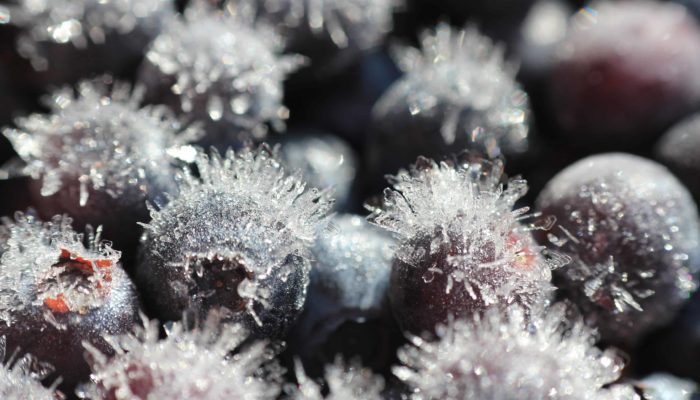 Grocery Business: Stable Grocery Freezers Avoid “Micro-Freezer-Burn”
Grocery Business: Stable Grocery Freezers Avoid “Micro-Freezer-Burn”
Even at -40 degrees Celsius there is still some unfrozen water in frozen food. Grocery Business has published a website article outlining the potential risks of temperature fluctuations to frozen products and how Viking Cold's Thermal Energy Storage technology can help protect food quality and shelf life from "Micro-Freezer-Burn".
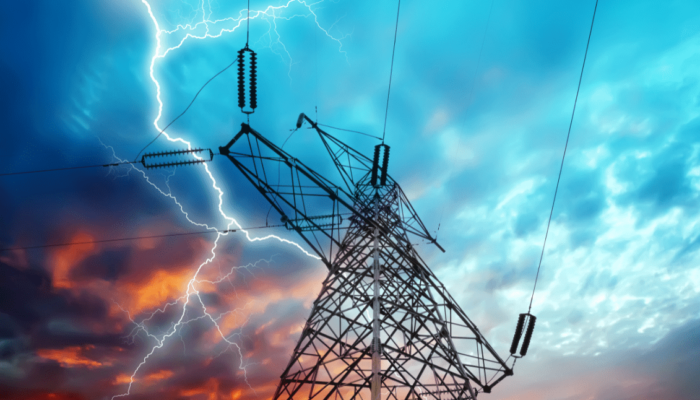 Frozen Foods Europe Exclusive: Protecting Food Supply in Extreme Weather
Frozen Foods Europe Exclusive: Protecting Food Supply in Extreme Weather
As weather conditions become more extreme around the globe (heat waves, hurricanes, wildfires, flooding) and more frequently affect the power supply, how are cold storage operators adding protection for their food product and resiliency to their operations? Frozen Foods Europe has published an article outlining the role of Thermal Energy Storage (TES) in protecting frozen food from extreme weather incidents and how TES can add resiliency and reduce energy costs every day in-between.
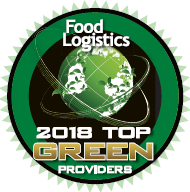 Viking Cold Named to Food Logistics’ Top Green Providers List for 2018
Viking Cold Named to Food Logistics’ Top Green Providers List for 2018
Viking Cold Solutions earns a spot on the coveted Food Logistics’ 2018 Top Green Providers list, our second year in a row! The award is presented to companies who promote sustainability in their operations and/or to their customers. Viking Cold continues to transform energy efficiency of cold storage facilities and supermarket freezers through its innovative application of Phase Change Materials and intelligent controls.
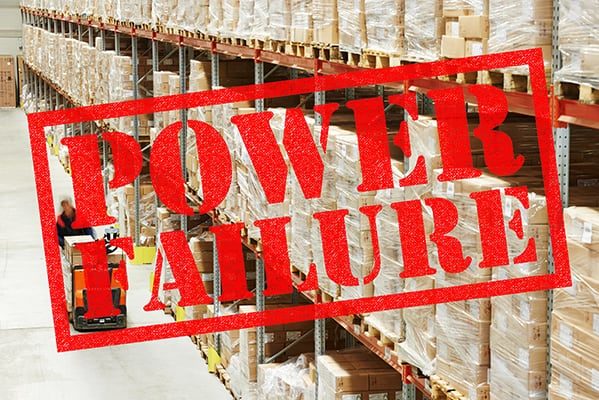 Weathering the Storm: Frozen Food Protection from Power Failures (Progressive Grocer Guest Blog)
Weathering the Storm: Frozen Food Protection from Power Failures (Progressive Grocer Guest Blog)
Storms, equipment failures, or other power disruptions in cold storage facilities without resiliency measures in place can be disastrous for the frozen food and the facility operators paid to protect it. Collin Coker, our VP of Sales & Marketing, describes how Thermal Energy Storage (TES) can help reduce risks for cold storage operators, reduce strain on the electrical grid, and provide energy efficiency for industrial freezers.
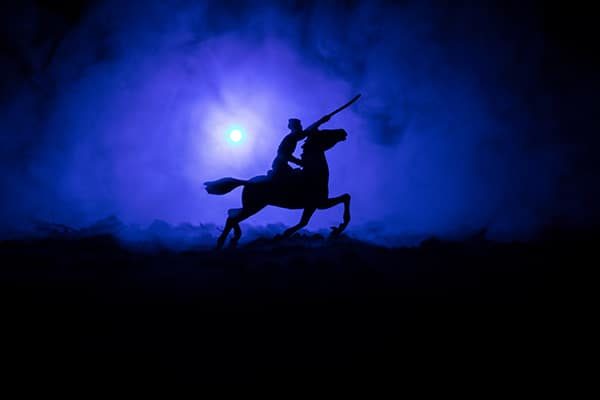 How Grocers Can Lead the Charge to Reduce Food Waste & Save On Energy (Progressive Grocer Guest Blog)
How Grocers Can Lead the Charge to Reduce Food Waste & Save On Energy (Progressive Grocer Guest Blog)
Did you know that one-third of all food produced is lost or wasted before it's consumed? Leading grocery publication Progressive Grocer has published a guest blog by Viking Cold’s Vice President of Sales & Marketing, Collin Coker that demonstrates how grocers and cold storage operators can limit the amount of food wasted around the globe...all while saving on energy costs.
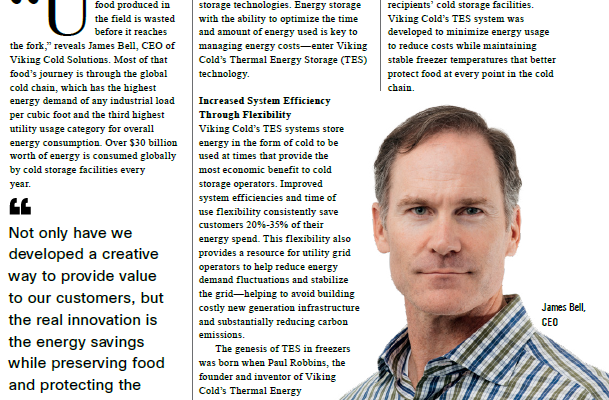 Energy CIO Insights Features Viking Cold's Thermal Energy Storage
Energy CIO Insights Features Viking Cold's Thermal Energy Storage
Online and print publication Energy CIO Insights features Viking Cold's technology and the energy flexibility it provides through an interview with our CEO, James Bell. James describes how our Thermal Energy Storage (TES) technology protects food, saves energy in the global cold chain, and benefits utilities.
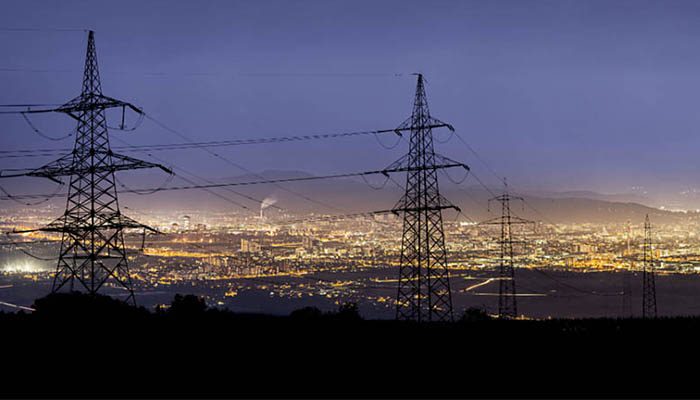 Access to Refrigeration Load on UtilityDive.com
Access to Refrigeration Load on UtilityDive.com
The well-known utility industry publication, Utility Dive, posted an article discussing how Viking Cold's thermal energy storage (TES) technology provides new access to the incredibly heavy energy load of cold storage facilities. Utility Dive provides professionals with a bird’s-eye-view of the utility industry through industry news, original analysis, and published in-depth feature articles.
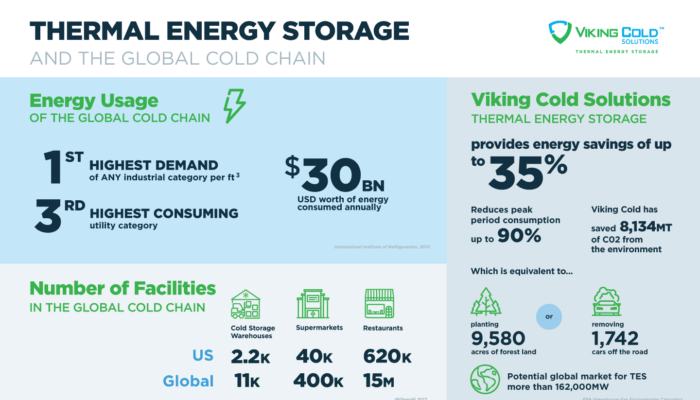 Thermal Energy Storage: The Key to Energy Efficiency in the Cold Chain (Progressive Grocer Guest Blog)
Thermal Energy Storage: The Key to Energy Efficiency in the Cold Chain (Progressive Grocer Guest Blog)
Do you know how much energy the cold storage industry uses every year? How do energy prices, corporate sustainability initiatives, and governmental efficiency targets affect current and future operations for grocers and other cold storage facilities? In his guest blog for Progressive Grocer, Viking Cold's Vice President of Sales & Marketing, Collin Coker, discusses these issues and a solution to reducing energy costs in the cold chain. Progressive Grocer has been the voice of the retail food industry since 1922. By anticipating, reporting and interpreting the grocery industry’s top trends and information, Progressive Grocer fulfills its mission to stay Ahead of What’s Next.
 Green Lights for Thermal Energy Storage (Feature Article in Frozen Foods Europe)
Green Lights for Thermal Energy Storage (Feature Article in Frozen Foods Europe)
European publication Frozen Foods Europe featured an article discussing how Viking Cold's Thermal Energy Storage (TES) technology will help cold storage providers meet the EU's energy goals. Our TES systems help meet these standards by reducing energy consumption, improving refrigeration efficiencies, and providing energy storage capacity in situations when alternative generation sources like solar and wind are being implemented. Frozen Food Europe is dedicated to management level professionals in the frozen food industry: retailers, food service and catering, importers, exporters, producers, equipment manufacturers, providers of cold storage solutions, and processing plants and factories.
 Release: Viking Cold Installs Another Thermal Energy Storage System in California at Dreisbach Enterprises’ Warehouse
Release: Viking Cold Installs Another Thermal Energy Storage System in California at Dreisbach Enterprises’ Warehouse
Installation in Bay Area industrial warehouse to manage high energy costs caused by peak energy pricing and reduce electricity demand by over 55 percent. RICHMOND, Calif. & Houston--(BUSINESS WIRE)--Viking Cold Solutions, the leading Thermal Energy Storage (TES) provider for the low-temperature cold storage industry, today announced it is partnering with a leading cold chain logistics provider in Northern California, Dreisbach Enterprises, to ensure temperature stability and manage energy usage at its Richmond warehouse. By installing a Viking Cold TES system, Dreisbach is again demonstrating their customer focus by adding more product temperature stability measures while reducing the electricity demand of the facility by over 55 percent – from 850 kilowatts to 400 kilowatts for 11 hours each day – and reducing its total electricity consumption by as much as 35 percent. Low-temperature cold storage facilities require the highest energy demand per cubic foot of any industrial electricity load. In some markets, peak demand charges comprise up to 70 percent of a facility’s electricity bill, encouraging customers to shut off equipment during peak periods. This ‘fly-wheeling’ tactic can cause micro-thawing and micro-freezing, which degrades cell structure and reduces the quality and shelf life of foods. TES serves as a much-needed heat sink to manage heat infiltration, protect product, increase refrigeration efficiencies and reduce peak demand costs.
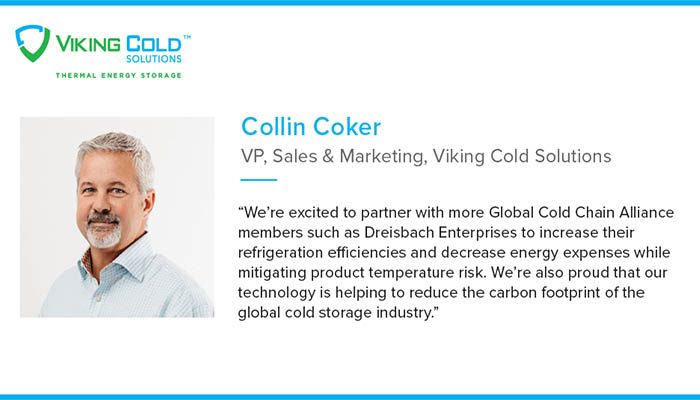 Release: Viking Cold Installs Another Thermal Energy Storage System in California at Dreisbach Enterprises’ Warehouse
Release: Viking Cold Installs Another Thermal Energy Storage System in California at Dreisbach Enterprises’ Warehouse
Installation in Bay Area industrial warehouse to manage high energy costs caused by peak energy pricing and reduce electricity demand by over 55 percent. RICHMOND, Calif. & Houston--( BUSINESS WIRE )--Viking Cold Solutions, the leading Thermal Energy Storage (TES) provider for the low-temperature cold storage industry, today announced it is partnering with a leading cold chain logistics provider in Northern California, Dreisbach Enterprises, to ensure temperature stability and manage energy usage at its Richmond warehouse. By installing a Viking Cold TES system, Dreisbach is again demonstrating their customer focus by adding more product temperature stability measures while reducing the electricity demand of the facility by over 55 percent – from 850 kilowatts to 400 kilowatts for 11 hours each day – and reducing its total electricity consumption by as much as 35 percent. Low-temperature cold storage facilities require the highest energy demand per cubic foot of any industrial electricity load. In some markets, peak demand charges comprise up to 70 percent of a facility’s electricity bill, encouraging customers to shut off equipment during peak periods. This ‘fly-wheeling’ tactic can cause micro-thawing and micro-freezing, which degrades cell structure and reduces the quality and shelf life of foods. TES serves as a much-needed heat sink to manage heat infiltration, protect product, increase refrigeration efficiencies and reduce peak demand costs.
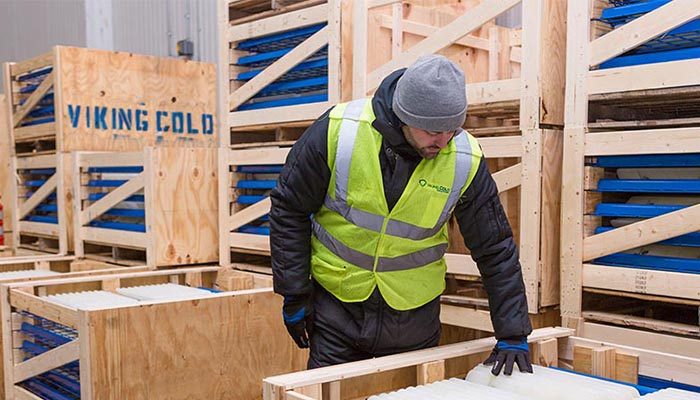 T&D World Features Viking Cold's AZ Installation with Utility SRP
T&D World Features Viking Cold's AZ Installation with Utility SRP
Leading utility-focused publication T&D World published an article about Viking Cold's Thermal Energy Storage (TES) systems being installed in a low-temperature warehouse owned by Bashas Family of Stores' near Phoenix, AZ. This installation is a project in conjunction with Salt River Project (SRP), the local utility provider, to demonstrate how Viking Cold's TES technology lowers demand in the C&I space during peak periods. T&D World’s mission is to provide utility executives, managers, engineers, supervisors, operators and linemen with must-read information on the design, engineering, construction, operation and maintenance of the electric power-delivery system.
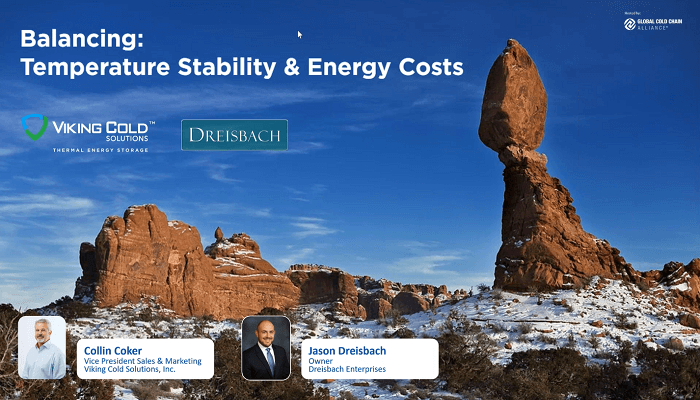 GCCA: Cold Chain Innovations Webinar Series
GCCA: Cold Chain Innovations Webinar Series
Viking Cold Solutions, Inc. and Dreisbach Enterprises were selected to be first presenters in a brand new webinar series hosted by the Global Cold Chain Alliance (GCCA) and brought to you by Tippman Innovation. Collin Coker of Viking Cold and Jason Dreisbach of Dreisbach Enterprises share how Thermal Energy Storage has helped Dreisbach's California facility re-balance the scale between temperature stability and energy charges for low-temperature cold storage facilities. They talk through data-backed information on how thermal energy storage serves as a much-needed heat sink to balance energy and protect customers' products. Jason further describes why his company chose to embrace this thermal energy solution, describes their experience with installation, and how the technology transformed their operation. View the webinar playback here.
 Alternative Energy Now Has Alternative Storage on UtilityDive.com
Alternative Energy Now Has Alternative Storage on UtilityDive.com
Viking Cold's Thermal Energy Storage technology was recently featured on UtilityDive.com. The article discusses how Viking Cold’s thermal energy storage (TES) technology provides an alternative storage technology for alternative energy sources. Utility Dive provides professionals with a bird’s-eye-view of the utility industry through industry news, original analysis, and published in-depth feature articles.
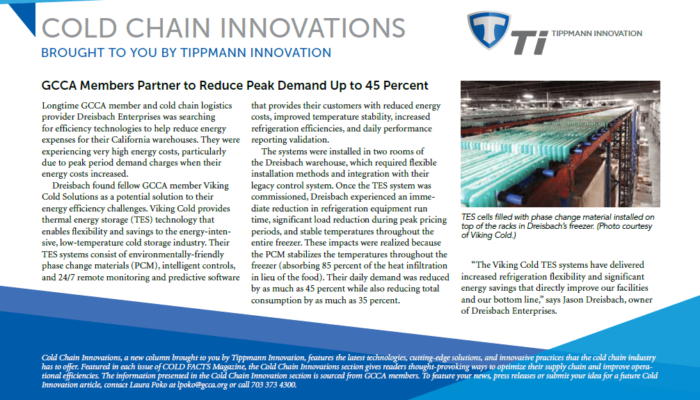 "Cold Chain Innovations" from GCCA's Cold Facts Magazine Features Viking Cold
"Cold Chain Innovations" from GCCA's Cold Facts Magazine Features Viking Cold
Viking Cold's Thermal Energy Storage (TES) technology was installed in a facility with GCCA co-member Dreisbach Enterprises. The addition of this efficiency and demand shift technology into Dreisbach's freezers was featured in the publication's first ever "Cold Chain Innovations" section. Dreisbach experienced an immediate reduction in refrigeration equipment run time, significant load reduction during peak pricing periods, and stable temperatures throughout the entire freezer. Cold Facts is the bimonthly publication of the Global Cold Chain Alliance (GCCA), the leading global cold storage organization.
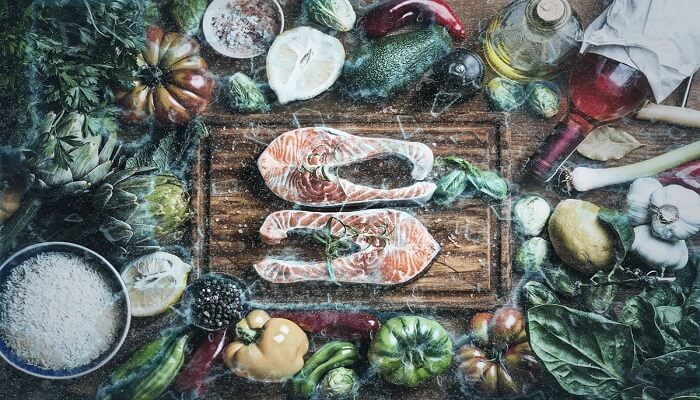 Is Your Freezer Saving or Ruining Your Frozen Inventory? (Progressive Grocer Guest Blog)
Is Your Freezer Saving or Ruining Your Frozen Inventory? (Progressive Grocer Guest Blog)
The grocery industry publication Progressive Grocer invited Viking Cold’s Vice President of Sales & Marketing, Collin Coker to write a blog. The blog begs the question, "are you operating your freezer in a way that saves frozen food or damages it?" Progressive Grocer has been the voice of the retail food industry since 1922. By anticipating, reporting and interpreting the grocery industry’s top trends and information.
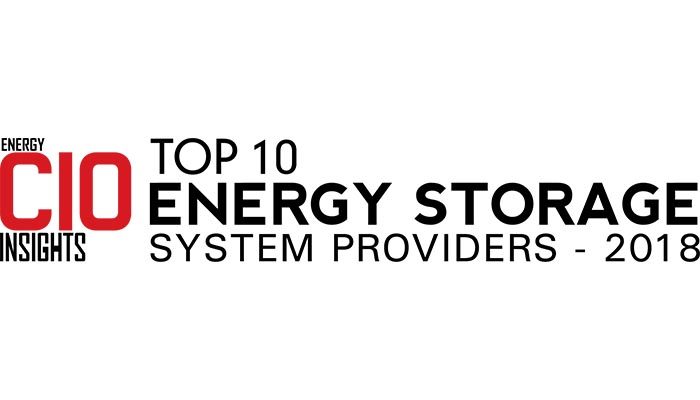 Viking Cold Awarded Top 10 Energy Storage Providers 2018
Viking Cold Awarded Top 10 Energy Storage Providers 2018
Viking Cold Solutions has been named as one of Energy CIO Insights' Top Ten Energy Storage System Providers for 2018. We are proud to join this prestigious list along side companies like ABB, Fluence (a Siemens and AES company), LG Chem, Toshiba, and other energy storage pioneers.
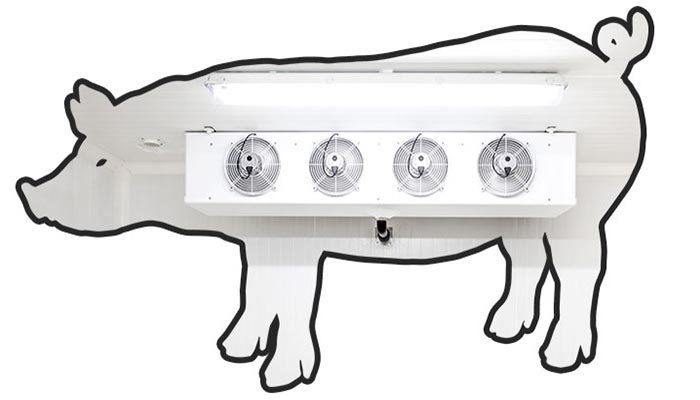 The Hog Hiding in Your Grocery Operation (Progressive Grocer Guest Blog)
The Hog Hiding in Your Grocery Operation (Progressive Grocer Guest Blog)
Viking Cold's Vice President of Sales & Marketing, Collin Coker, has written a blog for the grocery industry publication Progressive Grocer. The blog uncovers one of the biggest energy challenges faced by grocery and supermarket chains and how they can address that energy challenge with our Thermal Energy Storage (TES) technology. Progressive Grocer has been the voice of the retail food industry since 1922. By anticipating, reporting and interpreting the grocery industry’s top trends and information, Progressive Grocer fulfills its mission to stay Ahead of What’s Next.
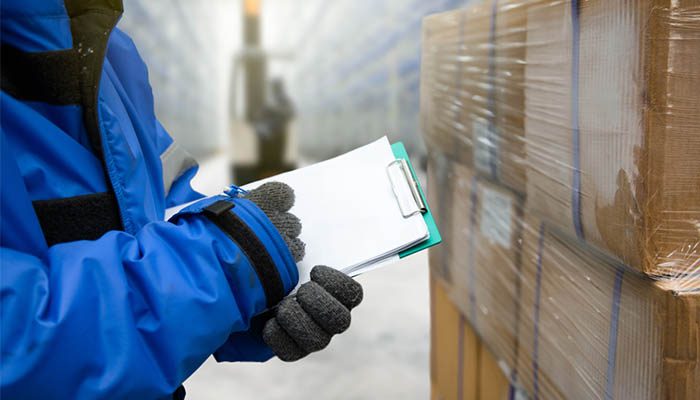 How 3PL's Reduce Costs in their Freezers on SupplyChainDive.com
How 3PL's Reduce Costs in their Freezers on SupplyChainDive.com
A top online publication for the Third Party Logistics (3PL) and supply chain industries, Supply Chain Dive, has posted an article discussing how thermal energy storage (TES) technology from Viking Cold helps 3PL cold storage warehouse operators save up to 35% on their refrigeration energy costs. Supply Chain Dive provides industry news, original analysis, and published in-depth feature articles for professionals in the supply chain.
 Frozen & Refrigerated Buyer: Thermal Energy Storage Feature
Frozen & Refrigerated Buyer: Thermal Energy Storage Feature
The March 2018 issue of Frozen & Refrigerated Buyer included a feature with Viking Cold Solutions. The article covered the application and benefits of thermal energy storage technology in grocery store refrigeration. Frozen & Refrigerated Buyer is an award-winning magazine providing information and insights to help its readers distribute, merchandise, and sell more frozen and refrigerated products, more profitably.
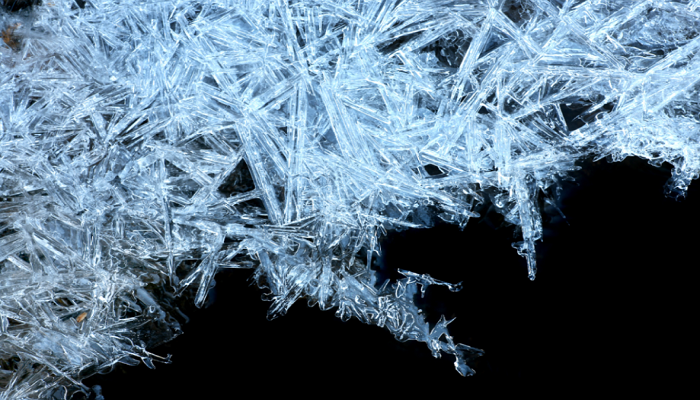 Frozen Food Quality in the Cold Chain
Frozen Food Quality in the Cold Chain
Cold storage operators are tasked with keeping frozen food at the appropriate temperatures as it travels from farm to fork. Different foods and even different elements within the food require different temperatures to remain frozen. The key to maintaining food quality and safety is temperature stability, and Thermal Energy Storage (TES) provides more stable temperatures keeping food safe to its final destination.
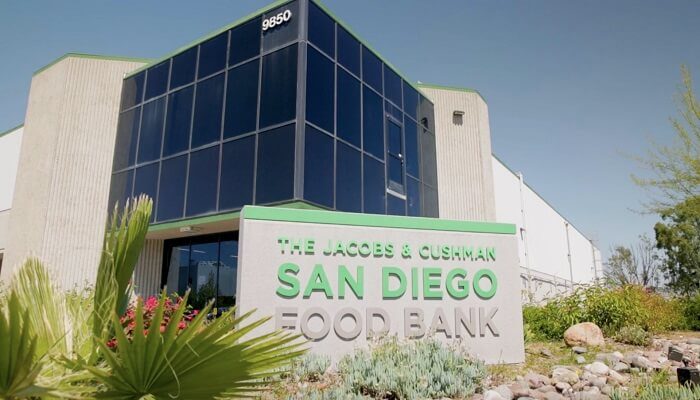 Food Bank Feeds 875,000 Extra People with Energy Savings
Food Bank Feeds 875,000 Extra People with Energy Savings
Every month, the San Diego Food Bank accomplishes the gargantuan task of providing food to over 370,000 people, nearly equivalent to the entire population of Cleveland, Ohio! Making this absolutely incredible operation possible are hundreds of devoted volunteers, millions of donated dollars, and a sustainability mindset.
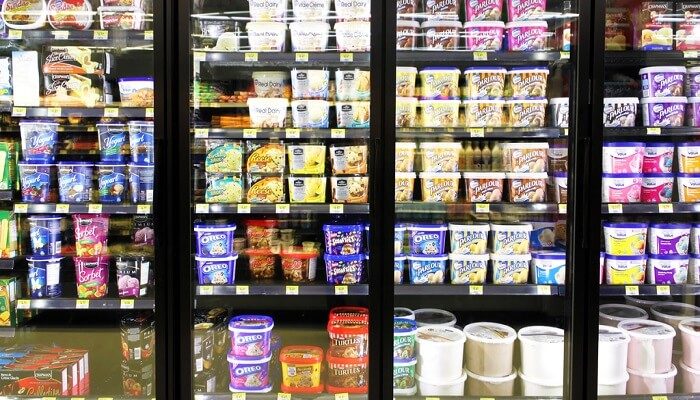 Viking Cold Grocery Freezer Technology on FoodDive.com
Viking Cold Grocery Freezer Technology on FoodDive.com
Well known in the food industry, Food Dive published an article about Viking Cold on their website. The article describes the benefits of thermal energy storage (TES) technology for grocery store and supermarket freezers. Food Dive provides professionals with a bird's-eye-view of the food industry through industry news, original analysis, and published in-depth feature articles.
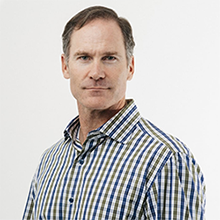 James Bell Interview Prior to Speaking at Energy Storage Summit in London
James Bell Interview Prior to Speaking at Energy Storage Summit in London
The 2018 Energy Storage Summit is being held February 27-28 in London, England. The Energy Storage Summit is attended by developers, financiers, utilities, networks and aggregators discussing standalone storage, co-located and C&I applications, top case studies from around the world with innovative business models and positioning of utilities, as well as completed EFR projects, co-location and utilities' strategies. James Bell, Viking Cold CEO, will be speaking at the Technology Comparison Session at the summit to ensure everyone knows that the cold storage market, formerly inaccessible because of its continuous, high electricity demand, now has an environmentally friendly and economical energy storage solution with thermal energy storage (TES). James was interviewed prior to the show to share more about Viking Cold Solutions and the value the TES technology brings to operators and the utility providers. Click here to read the full interview.
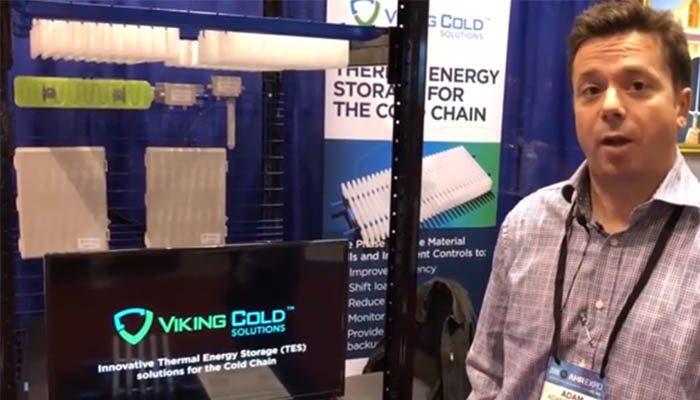 Sharing TES Benefits with Proud Green Building at AHR Expo 2018
Sharing TES Benefits with Proud Green Building at AHR Expo 2018
Adam Valarmo, Director of Business Development for Viking Cold Solutions was interviewed by Proud Green Building while exhibiting at the 2018 AHR Expo in Las Vegas, Nevada. Proud Green Building is made up of professionals, such as builders, remodelers, architects, specifiers, landscape architects, designers, other industry pros and owners who are interested in learning about and integrating high performance, sustainable, and “green” strategies, systems and products to their buildings. This was the perfect opportunity for us to share the incredible efficiency and sustainability features of our Thermal Energy Storage systems.
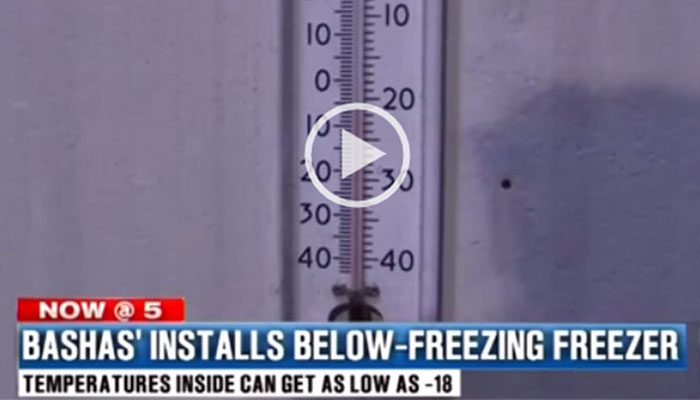 Viking Cold TES Installation with Arizona Utility Incentives
Viking Cold TES Installation with Arizona Utility Incentives
Viking Cold's Thermal Energy Storage technology was being installed in a low-temp warehouse owned by Bashas' Family of Stores, an Arizona-based, family-owned and operated grocery chain. The project was incentivized by the local utility, Salt River Project. Local news crews captured the positive feedback from the client and the utility. Click the images to watch the videos.
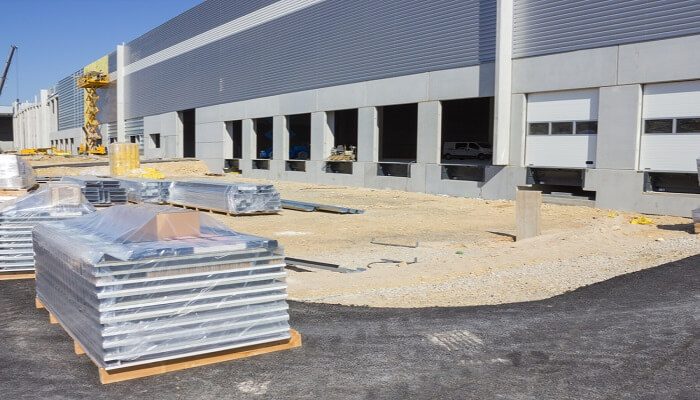 Built In Cold: Thermal Energy Storage for Cold Storage Construction Projects
Built In Cold: Thermal Energy Storage for Cold Storage Construction Projects
It’s no secret that cold storage facilities are a huge investment for end users in the frozen food market. Ongoing operational cost, and energy costs in particular, are long-term considerations of any cold storage project. Cold storage architectural, engineering and construction know they must address these issues to secure project bids.
 On the Margin: Thermal Energy Storage Reduces Grocery Freezer Energy Expenses
On the Margin: Thermal Energy Storage Reduces Grocery Freezer Energy Expenses
Energy demands in U.S. supermarkets are massive, with refrigeration and lighting accounting for over 50% of total energy use. Each year, the average American supermarket consumes roughly 50 kilowatt-hours (kWh) of electricity, and 50 cubic feet of natural gas per square foot.
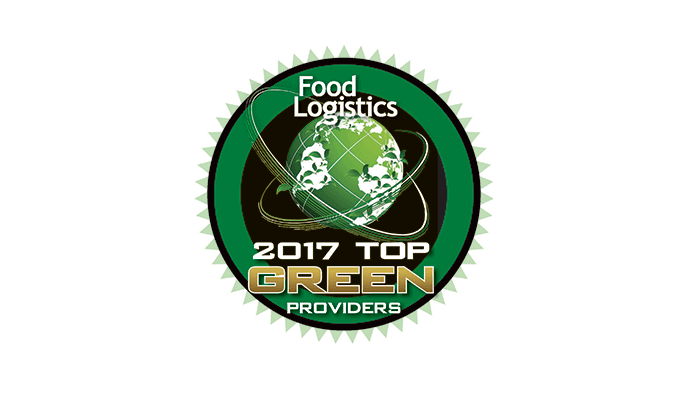 Viking Cold Named One of the Top Green Providers for 2017
Viking Cold Named One of the Top Green Providers for 2017
Through hard work and constant innovation, Viking Cold Solutions earned a spot on the coveted Food Logistics’ 2017 Top Green Providers list. As one of only 100 companies to have been chosen, this placement offers Viking Cold the chance to broaden their exposure while continuing to provide energy-saving solutions across the global cold chain. The company has stated that not only are they honored by the selection, but by the opportunity to make a significant impact in the industry’s endeavor to embrace sustainable practices.
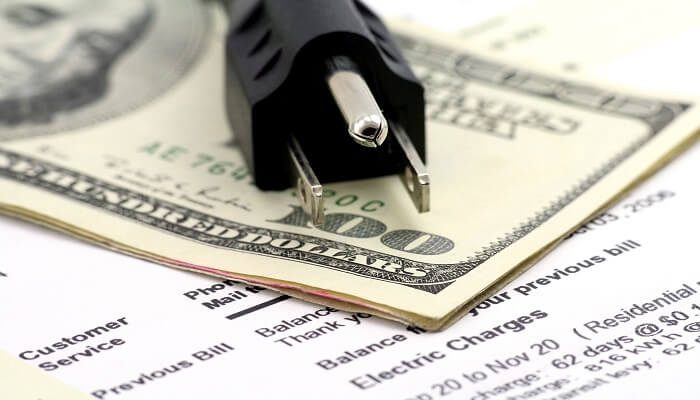 Significant Savings with Viking Cold Solutions
Significant Savings with Viking Cold Solutions
Did you know electricity is the second highest expense in the cold storage industry? Viking Cold’s energy efficient technology is the perfect solution for businesses looking to save on energy related costs while maintaining temperature stability for their products.
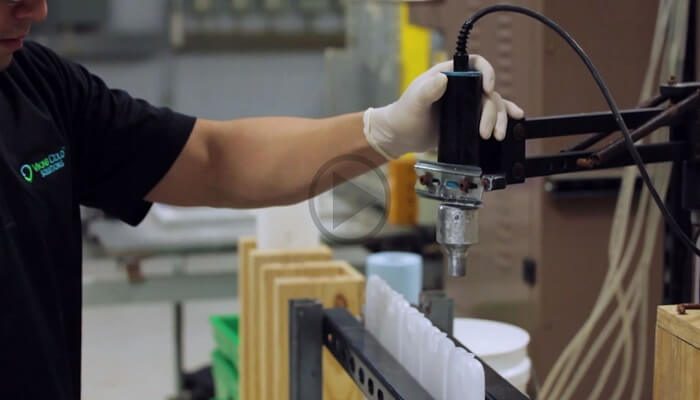 Viking Cold Solutions Make Cost-Efficient Energy Decisions
Viking Cold Solutions Make Cost-Efficient Energy Decisions
Viking Cold is a thermal energy storage company transforming the cold chain in the cold storage and supermarket industries. Though the refrigeration industry can be slow to change, Viking Cold has caused major disruption by creating solutions and technologies that make cost-efficient energy decisions while protecting the integrity of the products stored.
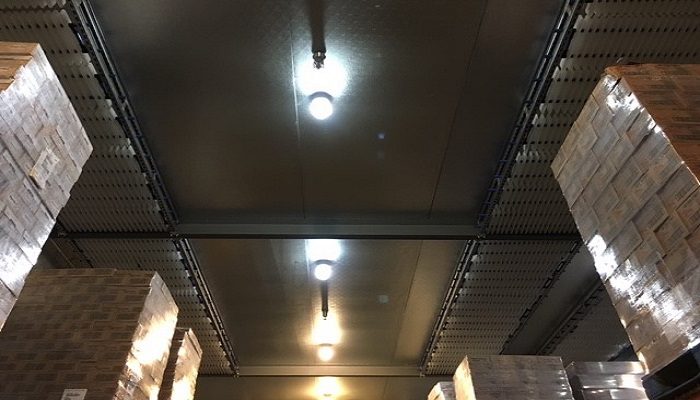 Viking Cold Thermal Energy Storage System Reduces Frozen Gourmet’s Energy Costs by Over 27%
Viking Cold Thermal Energy Storage System Reduces Frozen Gourmet’s Energy Costs by Over 27%
For businesses in the frozen food market, energy costs are a major expense. Reducing the electricity used in storage facilities directly impacts the bottom line, making it a top priority for owners and operators. Cold storage operators who make the move to an innovative thermal energy storage system will realize significant cost savings, enhanced product monitoring, and protection for low temperature cold storage.
 Viking Cold Named to Food Logistics' Top Green Providers List for 2017
Viking Cold Named to Food Logistics' Top Green Providers List for 2017
Houston, Texas - June 20, 2017 (PRNewswire) - Food Logistics, the only publication exclusively dedicated to covering the movement of product through the global food supply chain, has named thermal energy management company Viking Cold Solutions to the Top Green Providers list for 2017. Viking Cold leverages thermal energy storage (TES) technology for cold chain systems in groceries, warehouse operations and food processing facilities with specific temperature needs, reducing thermal energy consumption as much as 39%. Viking Cold's TES system shifts energy demand to night time off-peak hours and reduces on-peak refrigeration runtime during the day. Food Logistics' annual Top Green Providers recognizes companies whose products, services, or exemplary leadership is enhancing sustainability within the food and beverage industry. Each year, the criteria for earning a spot on the list become more stringent for applicants, requiring evaluation of a company's participation in recognized sustainability programs such as the EPA's SmartWay, and can involve those facilities that are LEED-certified and have reduced GHG emissions. In this instance, deployment of high-impact demand reduction solutions to industrial refrigeration loads was considered. "The future viability of the world's food supply chain is dependent upon our ability to integrate sustainability from farm to fork," says Lara L. Sowinski, editorial director. "Transportation and logistics comprise a significant part of that supply chain, and we commend those companies in our industry that embrace their role as environmental stewards, while raising the sustainability bar for their peers." Against this backdrop Viking Cold Solutions CEO, James Bell, added, "As part of our commitment to cold chain sustainability and reducing environmental impact, we are honored to provide this groundbreaking efficiency technology. We greatly appreciate the recognition of our work by Food Logistics Magazine." Bell further noted, "Our phase change material (PCM) technology is revolutionizing energy efficiency in the low temperature space with intelligent controls, sensors and monitoring. This enables operators to determine how and when they purchase and use energy in their freezers." About Viking Cold Solutions: Viking Cold Solutions™ is a thermal energy management company that makes the world's cold storage systems more efficient by using proprietary Phase Change Material (PCM) and intelligent controls. The company's passive Thermal Energy Storage (TES) systems store energy, reduce demand, shift load, monitor customer facilities, and provide thermal back-up protection. The company's patented TES systems have saved over 8,100 MWh of energy, reduced carbon footprint by over 4,400 metric tons, and prevented more than $13M of product loss. Learn more at vikingcold.com.
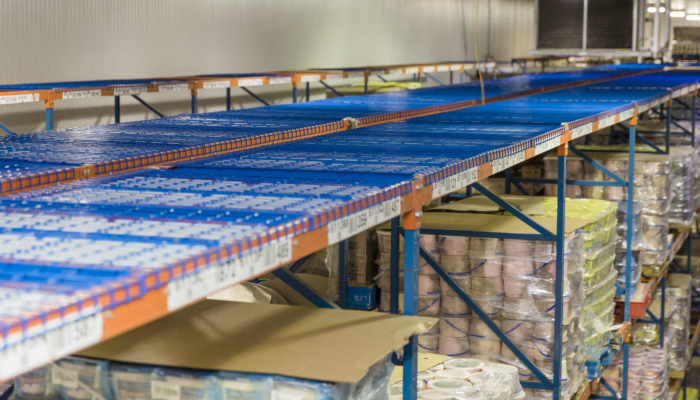 Viking Cold Solutions partners with Salt River Project and Bashas' Family of Stores to deliver environmentally friendly thermal energy storage system
Viking Cold Solutions partners with Salt River Project and Bashas' Family of Stores to deliver environmentally friendly thermal energy storage system
Houston, Texas - June 13, 2017 - Viking Cold Solutions today announced a collaboration between Salt River Project (SRP) and Bashas' Family of Stores to install and evaluate the performance of Viking Cold Solutions’ environmentally friendly Thermal Energy Storage (TES) System at the Bashas' distribution center in the Phoenix metro area. This low-impact, sustainable system is expected to offer significant energy savings, energy demand management, and heightened protection for frozen food products. The TES system also reduces energy distribution and delivery challenges for SRP by shifting energy demand to night hours. The passive TES system stores energy at night for subsequent day use, enabling less refrigeration runtime and reduction of load during peak afternoon hours. "We are very pleased to support this project with Bashas' and Viking Cold Solutions and to evaluate a technology that shows potential as an energy management tool for us and our customers," noted Nathan Morey, Manager of SRP Product Development. “SRP is excited to learn more about thermal storage technologies, which can provide energy savings for customers with industrial freezers like Bashas’ and provide long-term benefits to all customers by reducing peak demand during summer months.” This project includes the installation of the Viking Cold Solutions Thermal Energy Storage (TES) system and 24/7 energy monitoring within the Bashas’ ice-cream freezer at their distribution center. “We continuously evaluate energy efficiency opportunities, as refrigeration is one of our highest operating expenses. We support technologies that provide greater temperature stability, helping us to continually provide low product prices to our customers. SRP is an innovative power utility, and we are excited about this partnership and glad we were able to come together to fund this project,” said Mike Basha, Vice President of Logistics at Bashas’. SRP will also fund the third-party research analysis for the project, evaluating the TES system’s Phase Change Material (PCM) for its efficiency improvements and effectiveness at shifting energy load from on-peak to off-peak hours. SRP collaborated with Arizona State University's School of Sustainable Engineering and the Built Environment, along with Nexant's Utility Services Group, to measure the results of the project and extrapolate the potential impact of this technology on additional low temperature refrigeration loads in the Phoenix area. "Our students are excited to learn more about the potential energy savings and demand reduction impact of this innovative technology, as well as how it can be deployed in more facilities to support reductions in the Phoenix area’s peak load," commented Kristen Parrish, ASU Assistant Professor. "Cost effectively managing growing power grid demand and providing reliable and reasonable power prices to customers requires innovative solutions and collaboration from all parties – utilities, academia, industrial customers and technology providers. We anticipate that this project will provide a roadmap for deploying high-impact demand reduction solutions to refrigeration loads that were not previously accessible. As part of our commitment to cold-chain sustainability and reducing environmental impact, we are honored to be the enabling technology,” James Bell, CEO of Viking Cold Solutions stated. About Viking Cold Solutions: Viking Cold Solutions™ is a thermal energy management company that makes the world’s cold storage systems more efficient by using proprietary Phase Change Material (PCM) and intelligent controls. The company's passive Thermal Energy Storage (TES) systems store energy, reduce demand, shift load, monitor customer facilities, and provide thermal back-up protection. The company’s patented TES systems have saved over 8,100 MWh of energy, reduced carbon footprint by over 4,400 metric tons, and prevented more than $13M of product loss. Learn more at vikingcold.com.
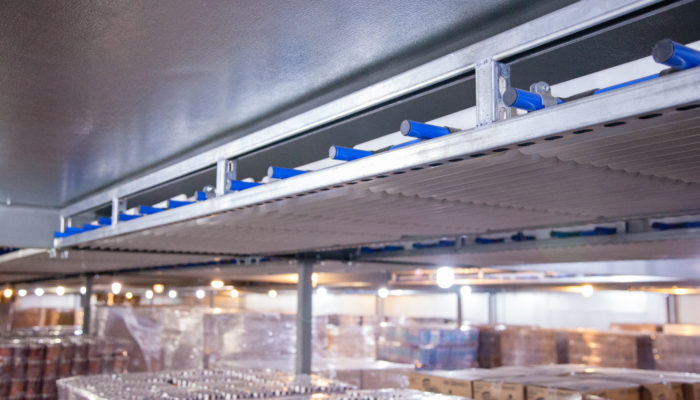 Frozen Gourmet installs a Viking Cold Thermal Energy Storage system reducing energy costs by over 27%
Frozen Gourmet installs a Viking Cold Thermal Energy Storage system reducing energy costs by over 27%
An innovative thermal energy storage system provides significant cost savings, enhanced product monitoring, and protection for low temperature cold storage operators. Frozen Gourmet, a dedicated Nestlé facility and a leading ice cream distribution company on the West Coast, has installed a Thermal Energy Storage (TES) system from Viking Cold Solutions™ and has reduced energy consumption over 27%. Viking Cold’s patented Thermal Energy Storage system was installed at the end of 2016 and has reduced energy consumption by over 45,000 kWh since the beginning of 2017. The TES system also reduced peak demand charges by shifting electrical load to night time. The passive TES system stores energy at night for subsequent day use, allowing refrigeration to run less frequently and during off-peak rate hours. The result is significant cost and electricity savings, especially in California where expensive daytime demand charges are common. “We searched for a year to find the right technology to reduce our energy costs and decided to purchase the Viking Cold TES system after seeing the capability and flexibility the system provides,” said Bill Kohn, CEO of Frozen Gourmet. “The reduction in energy consumption has improved our bottom line and the real-time monitoring has been invaluable in helping us recognize and address equipment issues before expensive problems arise.” The Frozen Gourmet team has not only been able to reduce energy consumption but also maintain more stable temperatures inside their freezer with the integrated Viking Cold Energy Management System that monitors and optimizes the existing refrigeration equipment. Daily reports and alarm notifications alert the team in the event of temperature abnormalities, mechanical equipment failure, or power outages. “Reducing energy consumption by 27% in a low temperature space is now possible with our passive Thermal Energy Storage system,” said James Bell, CEO of Viking Cold Solutions. “This technology is revolutionizing energy efficiency in the freezer space while helping to better protect the food with intelligent controls and sensors. There’s simply no other option available that combines efficiency and load management.” In California, there is a $200 Million market opportunity for Viking Cold’s TES technology, which includes 570 million square feet of cold storage and approximately 8,210 grocery stores. To learn more, watch Viking Cold’s 90 second video about how the TES works. About Viking Cold Solutions: Viking Cold Solutions™ is a thermal energy management company which makes the world’s cold storage systems more efficient using proprietary Phase Change Material (PCM) and intelligent controls. The passive Thermal Energy Storage (TES) solution stores energy, reduces demand, shifts load, monitors the facility, and provides thermal back-up protection. The company’s patented TES systems have saved over 8,100 MWh of energy, reduced carbon footprint by over 4,400 metric tons, and prevented more than $13M of product loss. Learn more at vikingcold.com. Contact: Collin Coker VP Sales & Marketing Viking Cold Solutions +1-832-497-5205 ccoker@vikingcold.com ##############
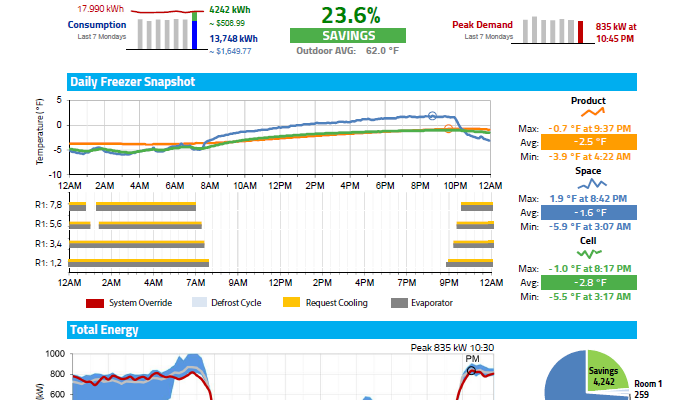 Real-Time Energy Consumption Reporting Lowers Utility Bills
Real-Time Energy Consumption Reporting Lowers Utility Bills
Bills – no one likes getting them, especially when they’re hard to decipher. Energy bills can be particularly challenging to understand, with few people able to wrap their heads around all the technical elements listed on a monthly statement. But for businesses with operations that consume a great deal of energy, being able to make sense of a utility bill is critical to ensuring expenses stay low.
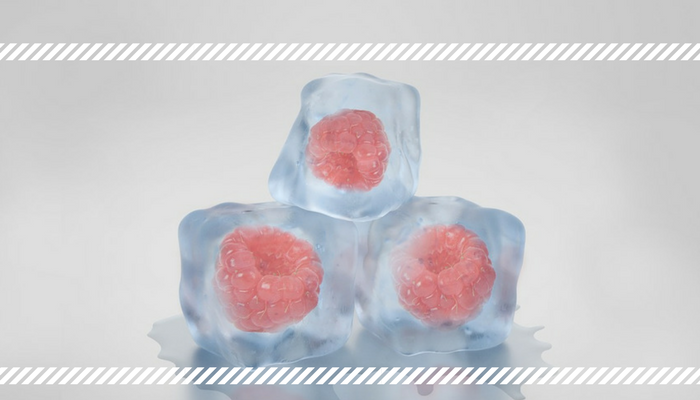 How Thermal Energy Storage Works to Save You Money
How Thermal Energy Storage Works to Save You Money
Energy is fundamental to human life, but why does it have to be so expensive? The cost of powering lights, heating, ventilation, and cooling systems can have a substantial impact on a commercial consumer’s bottom line. At Viking Cold Solutions, we believe organizations with refrigeration needs shouldn’t have to spend considerable financial resources on energy costs. That’s why we develop energy saving solutions for businesses like grocers, warehouse operators, and food processing facilities with specific temperature needs.
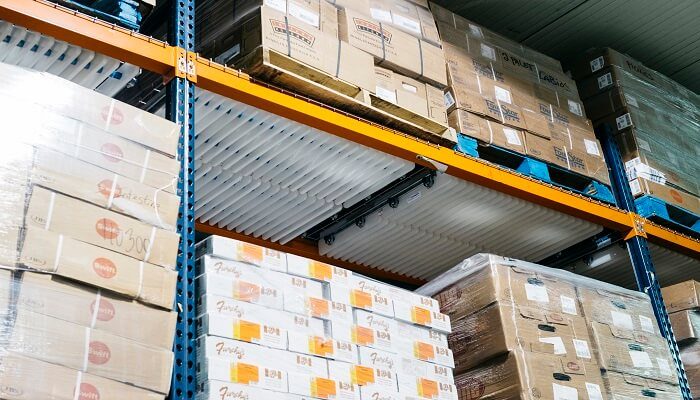 Energy Storage Trends for the Cold Chain
Energy Storage Trends for the Cold Chain
Anyone that pays an electric bill knows that cooling measures such as air conditioning and refrigeration require a lot of energy and cost a lot of money. So imagine the energy requirement and expense of running the refrigeration systems found in cold storage warehouses, supermarkets, and food processing facilities where temperature must be maintained at a specific level to avoid product spoilage. It’s a costly operation, but fortunately new technologies are emerging to provide thermal energy management to companies looking to cut refrigeration costs through improved energy efficiency.
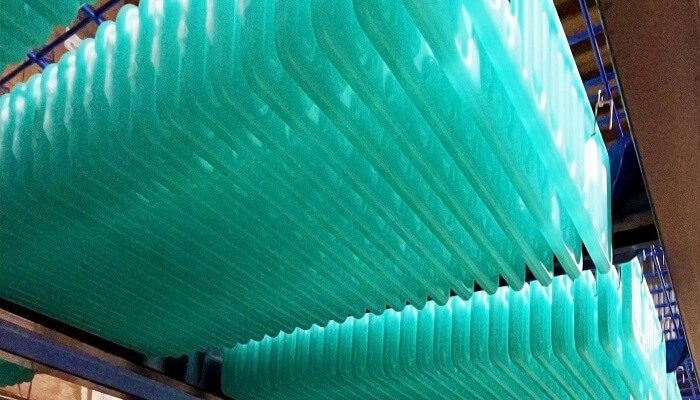 Viking Cold Solutions’ Thermal Energy Storage system demonstrates over 30% energy savings in a 3rd party study and is recommended for adoption by utilities in California
Viking Cold Solutions’ Thermal Energy Storage system demonstrates over 30% energy savings in a 3rd party study and is recommended for adoption by utilities in California
An innovative thermal energy storage system using phase change material and intelligent controls provides significant cost savings, enhanced product monitoring, and protection for cold storage operators and supermarkets. Houston, Texas - November 14, 2016 - Viking Cold Solutions, a leader in thermal energy storage systems, today announced that a Southern California Utility, along with an independent 3rd party energy management firm, ASWB Engineering, completed a Field Demonstration Study of the Viking Cold Thermal Energy Storage (TES) system. The study verified a reduction in electricity consumption of 30% and 39% in two separate low temperature cold storage facilities in the San Diego area. Based on the results of this study, the Utility and ASWB recommended that California utilities adopt the technology into their Energy Efficiency incentive programs. The purpose of the independent study was to determine the effectiveness of Viking Cold’s patented TES system in cold storage freezer applications and to qualify the system for California utility inventive programs as part of the California Energy Commission Emerging Technologies initiative. “The benefits of the technology include reduced refrigeration equipment run time and increased product safety during power emergencies due to the thermal storage capabilities of the solution.” said John Baffa, Professional Engineer at ASWB Engineering. “It is exciting to see our technology recognized by a leading utility energy efficiency program and I’m pleased that the study validates the results that Viking Cold customers already experience daily.” said James Bell, CEO of Viking Cold Solutions. “Our passive, non-mechanical system is a cost-effective way to reduce energy consumption across the cold chain, from walk-in freezers to large distribution warehouses, which can be used stand-alone, or to boost the return with solar PV.” Two locations currently using Viking Cold’s TES system were studied by ASWB. The first test site, a walk-in freezer on Camp Pendleton in Southern California, showed a net facility energy savings of 30%. The second test site is a commercial freezer warehouse at the Jacobs & Cushman San Diego Food Bank. By leveraging the Food Bank’s existing photovoltaic system to run the refrigeration during the day and using Viking Cold’s TES system at night, the facility showed a net energy savings of 39%. "Electricity costs are one of the top two expenses in the cold storage industry and this study demonstrates the value of using an intelligent Thermal Energy Storage system to reduce energy consumption in freezers.” said Corey Rosenbusch, President and CEO of the Global Cold Chain Alliance (GCCA). “Based on these results, our membership should evaluate this technology for their own low temperature applications.” The complete Phase Change Material and Controls Field Demonstration Study, written by ASWB Engineering, can be downloaded on the California Emerging Technologies Coordinating Council’s website at: http://www.etcc-ca.com/reports/phase-change-material-and-controls-study-low-temp-refrigeration-applications About Viking Cold Solutions: Viking Cold Solutions™ is an energy management company, which makes the world’s cold storage systems more efficient using proprietary Phase Change Material (PCM) and intelligent controls. The Thermal Energy Storage (TES) solution stores energy, reduces demand, shifts load, monitors the facility, and provides thermal back-up protection. The company’s patented TES systems have saved over 7,000 MWh of energy, reduced carbon footprint by over 4,400 metric tons, and prevented more than $13M of product loss. Learn more at vikingcold.com Contact: Maddie Mansson Director of Marketing Viking Cold Solutions +1-346-804-4363 mmansson@vikingcold.com
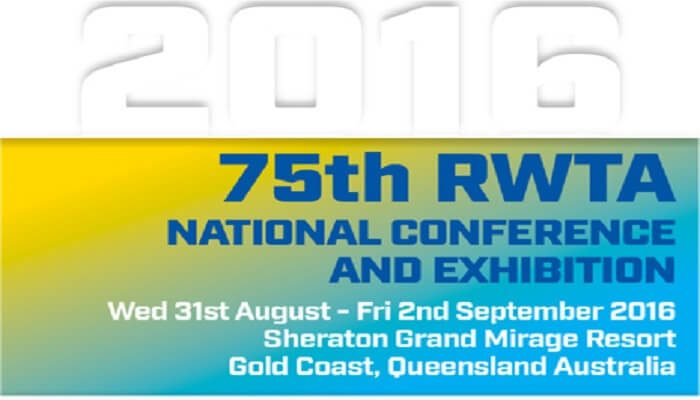 Australian cold storage facilities and supermarkets can reduce electricity peak demand up to 90 percent using Thermal Energy Storage
Australian cold storage facilities and supermarkets can reduce electricity peak demand up to 90 percent using Thermal Energy Storage
U.S. innovator partners with Australian businesses to launch technology to harness solar energy to cut costs and carbon emissions of cold storage facilities and supermarkets. Viking Cold Solutions™, a leading provider of Thermal Energy Management solutions for cold storage facilities and supermarkets, has today announced the launch of Solar Energy Storage™ at the Refrigerated Warehouse and Transportation Association Conference in Queensland, Australia. The system combines Viking Cold’s patented Thermal Energy Storage System with rooftop solar photovoltaic (PV) to deliver green, cost-effective, around-the-clock energy management for cold storage facilities, supermarkets, and utilities. The system can reduce electricity peak demand by up to 90 percent, save customers money, and helps balance the electricity grid. The technology enables cold-storage facilities and supermarkets to intelligently store and selectively deploy PV generated power within refrigerators to reduce energy costs. Originally developed by NASA, the patented Thermal Energy Storage Cells are now used to absorb infiltrated heat so that food remains at its target temperature. This environmentally friendly solution solves some of the largest challenges of solar energy by extending the useful time for solar power and by reducing renewable variability. Viking Cold’s Solar Energy Storage solution comes at a key time for Australia. 33% of electricity in South Australia is generated from renewable sources and it has set an aggressive target of 50% renewable generation by 2025. “Viking Cold’s Solar Energy Storage solution can help Australia meet its renewable energy targets while helping to balance the grid by reducing peak demand.” said James Bell, CEO of Viking Cold Solutions. “As renewable penetration grows, it will ultimately overwhelm the ability of conventional resources to compensate for renewable variability.” Renewable generation combined with Viking Cold’s Solar Energy Storage™ provides multiple advantages for both businesses and grid operators: Increase the value of PV – Store solar energy during the day and use it for refrigeration at night Cost-effectiveness and system longevity – Renewable generation and Viking Cold’s Solar Energy Storage are low-cost and are designed to last for at least 20 years with minimal maintenance Lower peak demand charges – Peak load shedding or shifting on command avoids peak rate times Reduce operational risk – Thermal backup allows customers to maintain safe temperatures and preserve food quality during equipment failure or power outages, reducing food loss and business interruption Buffer for Utilities – Utilities benefit from Viking Cold’s Solar Energy Storage solution by providing a “buffer” of on-demand, efficient, and environmentally friendly thermal energy storage at customer sites Economic development – Viking Cold’s Solar Energy Storage boosts the local economy by using local engineering and labor To learn more, please watch Viking Cold’s 90 second video which explains how the technology works. Viking Cold Solutions™ is an energy management company focused on making the world’s cold storage systems more efficient. Its Thermal Energy Storage Systems have saved their clients over 6000 MWh of energy and have removed over 4000 metric tons of Carbon from the air and mitigated over $13M of product loss. The Viking Cold team has deep expertise in cold storage energy management, supermarket energy management, and thermal energy storage systems. Viking Cold Solutions provides energy storage solutions that reduce operational costs and business risk for cold storage and supermarkets with high refrigeration-based energy loads. The company is expanding rapidly across the globe. Learn more at vikingcold.com
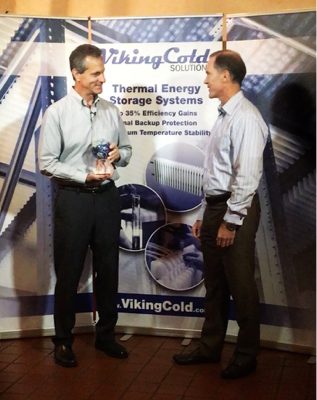 Viking Cold Solutions Recognizes Plaza Provision Company with the Leadership in Sustainability Award
Viking Cold Solutions Recognizes Plaza Provision Company with the Leadership in Sustainability Award
SAN JUAN, PUERTO RICO August 17, 2016 - The Leadership in Sustainability Award program was conceived to recognize high-impact sustainable business accomplishments by Viking Cold Solutions’ partners. James Bell, CEO of Viking Cold Solutions, presented the award to Robert Cimino, CEO of Plaza Provision Company, at the company headquarters in San Juan on Wednesday. Plaza Provision Company, a leading food distributor in Puerto Rico, installed its first Viking Cold Thermal Energy Storage (TES) system in 2010. Over the years, the company has reported a reduction in energy consumption by its freezers of over 30%. This has reduced overall energy consumption by over 3,200 MWh and reduced carbon footprint by over 2,200 metric tons. Plaza Provision Company maintains a strong environmental responsibility program and the energy savings from the Viking Cold system has been a significant part of lessening the environmental footprint of its operations. This year Plaza Provision Company purchased its fourth TES system. The patented system stores energy at night for subsequent day use, allowing refrigeration equipment to run less frequently and at its maximum efficiency. Plaza Provision Company has helped to pioneer a technology that will continue to save energy, safeguard food products, and reduce carbon emissions while increasing the efficiency of their operations and the cold chain industry at-large. To learn more, watch Viking Cold’s 90 second video about how the technology works. To see more details on the Plaza Provision Company case, click here. Viking Cold Solutions™ is an energy management company focused on making the world’s cold storage systems more efficient. The Viking Cold team has deep expertise in cold storage energy management, supermarket energy management, and thermal energy storage systems. Viking Cold provides energy storage solutions that reduce operational costs and business risk for cold storage and supermarkets with high refrigeration-based energy loads. Learn more at vikingcold.com.
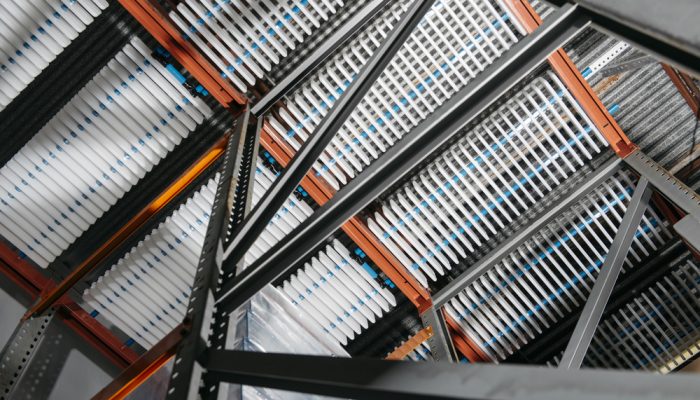 Plaza Provision Company cuts energy costs by over 30% using Viking Cold’s Thermal Energy Storage System
Plaza Provision Company cuts energy costs by over 30% using Viking Cold’s Thermal Energy Storage System
Thermal Energy Storage (TES) is an effective energy savings strategy that allows thermal energy to be stored when electricity is less expensive and used later when prices are higher and utility demand charges and consumption are at their daily peak. TES systems have been in use for decades, mainly in HVAC applications to lower energy costs and ease demand on the electrical grid.
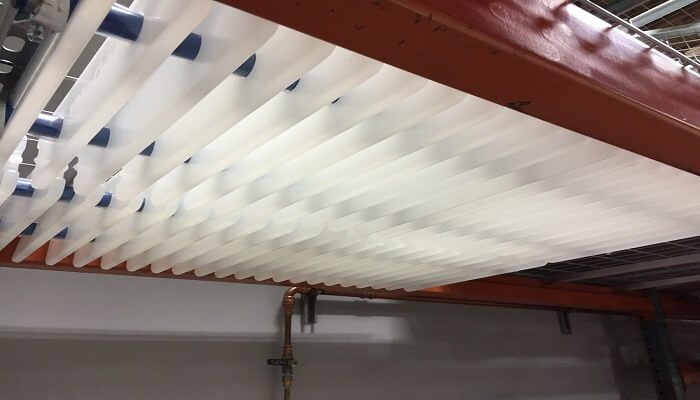 Plaza Provision Company installs another Viking Cold Thermal Energy Storage system reducing energy costs by over 30%
Plaza Provision Company installs another Viking Cold Thermal Energy Storage system reducing energy costs by over 30%
Plaza Provision Company, a leading food distributor in Puerto Rico, has purchased its fourth Thermal Energy Storage (TES) system from Viking Cold Solutions and, where installed, has reduced energy consumption over 30%. Three Viking Cold’s Thermal Energy Storage systems, installed in 2010, 2013 and 2014, have saved Plaza Provision Company over $650,000, reduced energy consumption by over 3,200 MWh, and reduced carbon footprint by over 2,200 metric tons. The patented Thermal Energy Storage systems store energy at night for subsequent day use, allowing refrigeration to run less frequently. The result is significant cost and electricity savings. “We purchased our fourth system because the total reduction in consumption has surpassed our expectations,” said Robert Cimino, CEO of Plaza Provision Company. “Also, having real-time monitoring has been invaluable and has helped us to recognize and address equipment issues before they become costly problems.” “Robert Cimino’s use of state of the art efficiency technology to not only improve his bottom line but also to preserve the environment, is an example of what can be achieved using the Viking Cold’s TES system,” said James Bell, CEO of Viking Cold Solutions. “Our TES system can be installed in cold storage facilities and supermarkets to reduce energy consumption and carbon footprint while mitigating risk with temperature monitoring and backup thermal protection.” Plaza Provision Company's system is among twenty-four that Viking Cold has installed in cold storage warehouses and supermarkets in Puerto Rico, Bermuda, St. Thomas, California, New Mexico, and Texas. Aireko Services and Installation, Inc., a leading HVAC services company, is the authorized distributor of Viking Cold’s TES system in Puerto Rico. They have been installing Viking Cold’s systems since 2010. To learn more, watch Viking Cold’s 90 second video about how the technology works. To see more details on the Plaza Provision Company case, click here. Viking Cold Solutions™ is an energy management company focused on making the world’s cold storage systems more efficient. The Viking Cold team has deep expertise in cold storage energy management, supermarket energy management, and thermal energy storage systems. Viking Cold provides energy storage solutions that reduce operational costs and business risk for cold storage and supermarkets with high refrigeration-based energy loads. The company is expanding rapidly throughout the U.S. and internationally. Learn more at vikingcold.com. Click Here to Download Media Kit For This Story
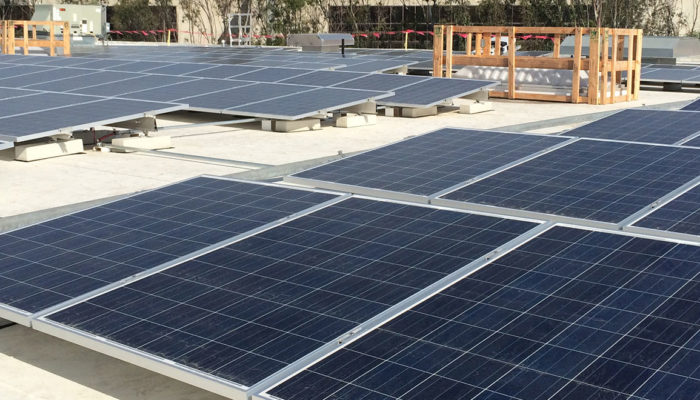 Viking Cold Solutions ™ delivers green, cost-effective energy saving technology to help provide 100,000 meals to hungry San Diegans
Viking Cold Solutions ™ delivers green, cost-effective energy saving technology to help provide 100,000 meals to hungry San Diegans
Solar Thermal Energy Storage provides significant cost savings and carbon emission reduction HOUSTON, June 1, 2016 /PRNewswire/ -- Viking Cold Solutions has completed another energy efficiency installation, helping the San Diego Food Bank-the largest hunger relief organization in San Diego County-reduce costs and feed over 100,000 meals to hungry San Diegans. Jacobs & Cushman San Diego Food Bank has installed Viking Cold's patented Solar Thermal Energy Storage System that leverages rooftop photovoltaic during the day and thermal energy storage at night. When PV generation is unavailable, the system reduces electricity consumption by 95 percent, delivering green, cost-effective, around-the-clock energy management. The system is among 24 built and installed by Viking Cold Solutions in cold storage warehouses and grocery stores in Bermuda, Puerto Rico, St. Thomas, California, New Mexico and Texas. “To combat hunger in our county, the Jacobs & Cushman San Diego Food Bank will distribute more than 22 million pounds of food this year.” said Casey Castillo, VP of Finance and Administration. “This solution fits in perfectly with our energy efficiency initiative – where we have already completed numerous cost-effective measures. Our hope is that installing Solar Thermal Energy Storage will not only allow us to add thermal backup protection, leverage our solar system, and increase temperature stability, but most importantly, the savings will allow us to provide an additional one hundred thousand meals to hungry San Diegans over the life of the system.” “Our installation of thermal energy storage at San Diego Food Bank perfectly portrays our company focus on efficiency and sustainability” said James Bell, CEO of Viking Cold Solutions. “When our thermal energy storage technology is paired with solar generation, the result is an efficient, on-demand, green energy solution. The Viking Cold Solar Energy Storage solution extends the benefits of PV long after the sun goes down; effectively removing the freezer from the electrical grid.” The Viking Cold’s Thermal Energy Storage solution couldn’t come at a better time for California utilities. Legislation signed by Governor Brown will require half of the state’s electricity to come from renewable sources such as solar and wind by 2030. Utilities can benefit from Viking Cold’s Thermal Energy Storage solution by providing storage and demand reduction at customer sites, helping stabilize the electricity grid as renewable penetration grows. To learn more, please watch Viking Cold’s 90 second video which explains how the technology works. See more details on the San Diego Food Bank Case here. Viking Cold Solutions™ is an energy storage company focused on making the world’s cold storage systems more efficient. Its Thermal Energy Storage Systems have saved their clients over 5900 MWh of energy and have removed over 4000 metric tons of Carbon from the air. Its team has deep expertise in cold storage energy management, supermarket energy management, and thermal energy storage systems. Viking Cold provides turnkey energy-management solutions that reduce operational costs and business risk for cold storage and supermarkets with high refrigeration-based energy loads. The company is expanding rapidly throughout the U.S. and internationally. Learn more at vikingcold.com. Click Here to download the Media Kit for this story
 Viking Cold Solutions™ Delivers Green, Cost-Effective Solar Thermal Energy Storage Solution to Help San Diego Food Bank Reduce Grid Energy Consumption by 95%
Viking Cold Solutions™ Delivers Green, Cost-Effective Solar Thermal Energy Storage Solution to Help San Diego Food Bank Reduce Grid Energy Consumption by 95%
Thermal Energy Storage (TES) is an effective energy savings strategy that allows excess thermal energy to be collected and stored for later use—most typically when electrical utility demand charges are at their daily peak. TES systems have been in use for decades, mainly to lower energy costs and ease grid demand for air conditioning applications. Players in other energy intensive applications such as refrigeration and cold food storage are now investigating the potential of TES as a means of moving away from an inflexible U.S. electrical grid system and toward a low-carbon energy generation future.
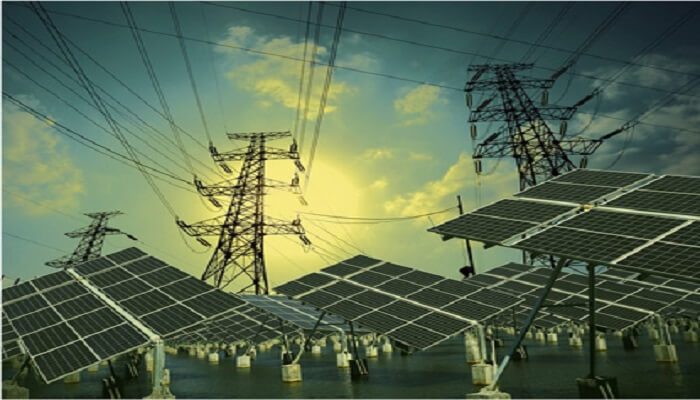 European cold storage facilities and supermarkets can reduce electricity peak demand up to 90 percent using Thermal Energy Storage
European cold storage facilities and supermarkets can reduce electricity peak demand up to 90 percent using Thermal Energy Storage
U.S. innovator launches technology to harness solar energy to cut costs and carbon emissions of European cold storage facilities and supermarkets, whilst protecting the grid. HANNOVER, GERMANY (April 26, 2016) Viking Cold Solutions™, a leading provider of Thermal Energy Management solutions for cold storage facilities and supermarkets, has today announced the launch of Solar Energy Storage™ at Hannover Messe, the world’s leading trade fair for industrial technology. The system combines Viking Cold’s patented Thermal Energy Storage system with rooftop photovoltaic (PV) to deliver green, cost-effective, around-the-clock energy management for cold storage facilities, supermarkets, and utilities. The system can reduce electricity peak demand by up to 90 percent, saving customers money and helping to balance the electricity grid. James Bell, CEO of Viking Cold Solutions said: "Solar has proven to be a low-cost, reliable, and green generation resource, but its intermittent nature has prevented its use for powering around the clock refrigeration.” Until now, the missing piece has been cost-effective and reliable thermal energy storage. Our system enhances the usability of solar energy for cold storage operators, allowing them to store latent power within storage cells, to sustainably protect their products, while lowering operating energy costs." The technology enables cold-storage facilities, supermarkets, and utilities to intelligently store and deploy PV generated power within refrigerators to delay their use of energy and to reduce energy costs. The patented Thermal Energy Storage Cells originate from a NASA approach to using ‘Phase Change Material’ to absorb infiltrated heat so that products remain at their target temperatures. This environmentally friendly solution solves one of the largest challenges to solar energy utilisation by reducing renewable variability. Viking Cold’s Solar Energy Storage solution comes at an important time for Europe, which has set a binding target to generate at least 20% of its energy from renewable sources by 2020. “Viking Cold’s Solar Energy Storage stands ready to help Europe meet its renewable energy targets while helping to balance the grid by reducing peak demand.” said Bell. “As renewable penetration grows, it will ultimately overwhelm the ability of conventional resources to compensate for renewable variability.” Utilities benefit from Viking Cold’s Solar Energy Storage solution by providing a “buffer” of on-demand, efficient, and green Thermal Energy Storage at customer sites. The solution also helps stabilize the grid, enabling more intermittent users and suppliers of electricity to safely interconnect and helps achieve mandatory local energy storage targets. Rooftop solar combined with Viking Cold’s Solar Energy Storage™ derives multiple advantages for both businesses and grid operators across Europe: Increase the value of solar PV - Store energy during the day and use it for refrigeration at night (increasing savings) Cost-effectiveness and system longevity - Rooftop solar and Viking Cold’s Solar Energy Storage are low-cost and are designed to last for at least 20 years or the life of the facility, with minimal maintenance Lower peak demand charges - Peak load shedding or shifting at any time of day increases savings during periods of renewable variability or at peak rate times Reduce operational risk - Thermal backup allows customers to maintain safe temperatures and preserve food quality during power outages or equipment failure, eliminating perishable food loss and reducing business interruption Economic development - Rooftop solar and Viking Cold’s Solar Energy Storage use local engineering and labor, leveraging utility investments to boost the local economy The demand for fresh and frozen products combined with an expanding population, has rapidly pushed up the demand for cooling across the world. The European Commission forecasts that the demand for cooling in Europe will rise by 73% by 2030. About Viking Cold Solutions™ Viking Cold Solutions™ is a thermal energy management company focused on making the world’s cold storage systems more efficient. Their Thermal Energy Storage Systems have saved their clients over 5,700 MWh of energy and have removed over 3,900 metric tons of Carbon from the air. Their team has deep expertise in cold storage energy management, supermarket energy management, and thermal energy storage systems. Viking Cold’s environmentally friendly storage solutions reduce operational costs and lower business risk for cold storage and supermarkets with high refrigeration-based energy loads. The company is expanding rapidly throughout the U.S. and internationally. Learn more at www.vikingcold.com. To learn more, please watch Viking Cold’s 90 second video which explains how the technology works.
 4 Thermal Energy Storage Benefits That Will Improve Your Bottom Line
4 Thermal Energy Storage Benefits That Will Improve Your Bottom Line
Viking Cold’s Thermal Energy Storage (TES) has many benefits for commercial businesses with high refrigeration based loads. Here are four of the main benefits that TES can provide. 1. Big Savings Imagine a world where gasoline costs $3 per gallon, but you could buy the same gasoline at night for $.75 per gallon. What time of the day would you buy your gasoline? You probably would buy the $.75 per gallon gasoline at night, store that energy in your gas storage tank and then use it during the day.
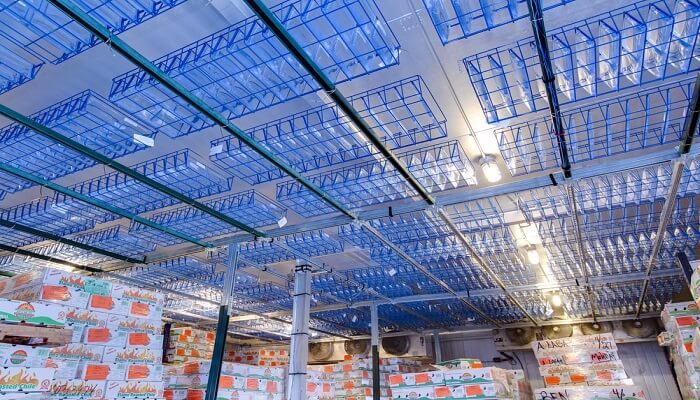 Case Study: Butterfield and Vallis uses PCM thermal storage to cut refrigeration costs 40%
Case Study: Butterfield and Vallis uses PCM thermal storage to cut refrigeration costs 40%
Butterfield and Vallis, a leading food distributor in Bermuda, is saving over 40% of their electricity consumption using Viking Cold’s Thermal Energy Storage Solution. Viking Cold’s patented thermal energy cells were installed in the ceiling of Butterfield and Vallis' 10,000-square-foot warehouse freezer in 2015. The Thermal Energy Storage System absorbs heat, allowing the chillers to run less frequently and keeping the warehouse within a few degrees of -18º Celsius.
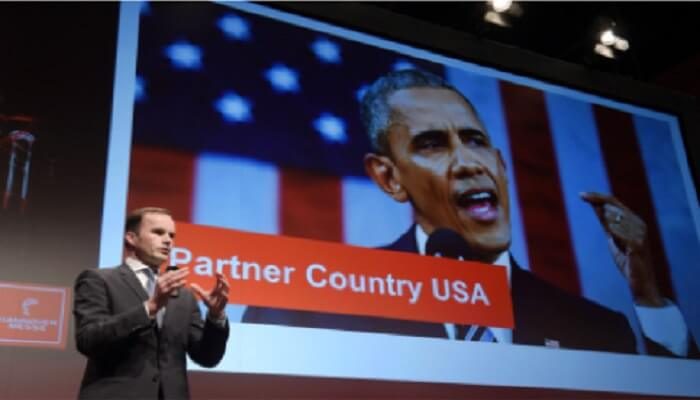 Viking Cold Solutions™ Joins Largest-ever U.S. Business Delegation To 2016 Hannover Messe
Viking Cold Solutions™ Joins Largest-ever U.S. Business Delegation To 2016 Hannover Messe
Viking Cold Solutions is part of the largest-ever U.S. delegation to Hannover Messe, the world’s foremost trade fair for industrial technology, taking place April 25-29, in Hannover, Germany. For the first time in the Fair’s history, the United States will be the Partner Country, a status that provides the more than 390 businesses and organizations in the U.S. delegation an unprecedented opportunity to be prominently featured throughout the event. President Obama will also participate in this year’s event, themed "Integrated Industry-Discover Solutions."
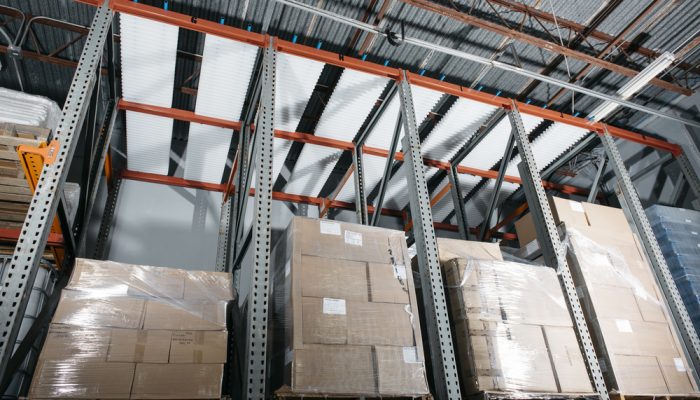 Viking Cold Solutions™ Technology Delivers Cold Storage Savings
Viking Cold Solutions™ Technology Delivers Cold Storage Savings
HOUSTON, March 8, 2016 /PRNewswire/ -- Viking Cold Solutions has completed another energy efficiency installation, helping Bermuda's largest food distributor, Butterfield & Vallis, reduce refrigeration storage costs by 40 percent. Viking Cold's thermal energy storage system uses phase change material that absorbs heat as it melts, allowing chillers to run less frequently and still keep the Butterfield & Vallis warehouse within a few degrees of -18° Celsius. The system is among 20 built and installed by Viking in cold storage warehouses in Bermuda, Puerto Rico, St. Thomas, California, New Mexico and Texas. A detailed case study of the project may be found at: http://www.puretemp.com/pcmatters/bermuda-food-distributor-tes Viking Cold Solutions is an energy storage company focused on making the world's cold storage systems more efficient. Viking Cold's thermal energy storage systems have saved clients over 5330 MW of energy and have removed over 3676 metric tons of carbon from the atmosphere. The Viking Cold team has deep expertise in cold storage energy management, supermarket energy management, and thermal energy storage systems. For more information see: www.vikingcold.com Case Study Courtesy of Phase Change Matters-a publication produced by Entropy Solutions LLC, a biobased specialty chemical company based in Plymouth, Minnesota. Source: PR Newswire
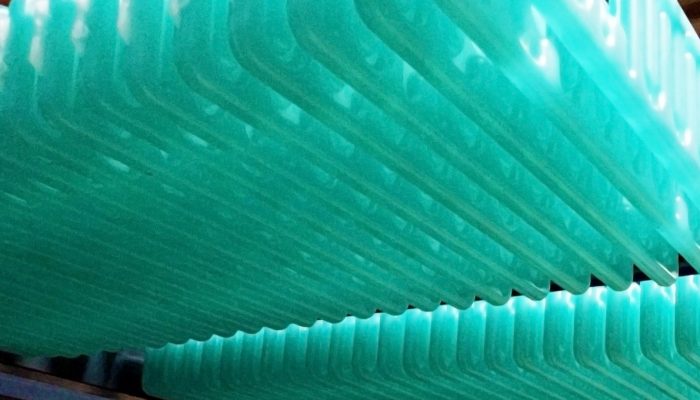 The Thermal Energy Storage Revolution Has Begun
The Thermal Energy Storage Revolution Has Begun
A new report from GreenTechMedia finds that energy storage capacity in the United States grew 243 percentlast year – a sign the clean-energy revolution is here. According to GreenTechMedia, 112 megawatts of energy storage were deployed in the fourth quarter of 2015. This was more than the combined total of all storage added in 2013 and 2014. We’re in a revolution with energy storage systems rapidly expanding across the country. What’s driving this? Simply put, innovation. Some are big names like General Electric driving the thermal energy storage revolution, but others are unknown, like Calmac, Ice Energy and Viking Cold Solutions™. These firms are unknown now, but they could be household names in the near future.